Speculative interfaces/science fiction/imagining interfaces other than VR/AR/screen-based.
ENFRANCHISEMENT MANUAL; OR, YOUR DAUGHTER'S DAUGHTER'S DATA
CONTEXT (TESTING TOMORROWS: SPECULATIVE DESIGN)
A weekend course taught by Chris Woebken and Richard The. The prompt was to think of three common New York situations and then speculate on each's intersection with a recent tech/science development or a prediction made by reputable futurists.
I was most interested in the idea of New York City as a closed loop of consumer data collection, advertisement/user testing, consumption and have recently been startled by someone's presentation on the development of LinkNYC. The tech discovery I mashed with was DNA as a new option for potentially infinite data storage. The inspiration for this came from the notion (via my Stratosphere of Surveillance class) that the data we generate over the course of hours daily actually amounts to work and the processing, and, especially, storage of this data costs virtually nothing for the corporations who broker it at our expense. We reproduce our digital selves in ever-greater detail for corporations to trade and use and we do it for free without any idea of how it may be used 10 years or 1000 years from the moment we hover over the 'like' button on a political posting on our social network 'of choice.'
THE PROJECT
Then, I rapidly penned a scenario in which:
- data storage is infinite and all the earth's inhabitants generate trackable data
- an international agency (the UN??) becomes a regulatory body imposing data/server farm usage rates on corporations against their profit margins and the volume of data accessed quarterly, or whatever.
- post-automation corporations discover with the aid of a Watson-like AI (analyzing the law, consumer & GDP trends, and dividends) that the optimal profit-yielding trajectory to take would be to create a public shareholding company in which every world citizen is a recipient of a universal wage as a form of social security.
- At first shareholders and boards dislike this notion but then a Supreme Court case (or whatever) finds that because it is convinced by the AI's confidence assessment for the ultimate profitability AND because it is illegal for corporations to act against the best interest of the shareholders they must comply. Thus a robust public-private partnership is formed.
- a new type of economy emerges
RAPID EVOLUTION OF THE PROJECT
We next had to develop the concept further and present to two guest critics for the next day (second and final class session.)
So I had one of my favorite things - another future scenario which rejects the notion of labor-as-right-to-exist. But now what? Richard The had a great suggestion: make an object, an artifact which told a little piece of the story. He suggested a receipt as an example of something from this fictional future world which could bring it into relief and spark discussion.
In our first class session we discussed an example of extreme speculative design: a remarkable answer to a call for design ideas to communicate with earthlings 10,000 years from now to stay away from the Yucca Mountain nuclear waste site in a way that would be anthropologically certain to communicate a message no matter what the future paradigms become: artificially creating a glow-in-the dark feral cat population and an intentionally seeded myth to go with it about the source of their unnaturalness.
So taking inspiration from these, and my penchant for what I call "boomerang" technologies, I got the idea to design a tattoo - something that anyone from virtually any population - no matter how tech impoverished/bereft/resistant they were - could use as a social security number and universal personal identifier to ensure their right to their own data revenue. I had the idea that the human writable, machine readable tattoos could take after the familial histories procedurally encoded in the tapestries, pottery, totem poles, insignia of many traditional cultures all over the planet. It made sense, since I wanted this data ID to be something that any mother could imprint on her child almost immediately after birth - in the same way vaccines, umbilical cords, circumcisions are handled.
I went over the material I had in class with Richard and then put together the following:
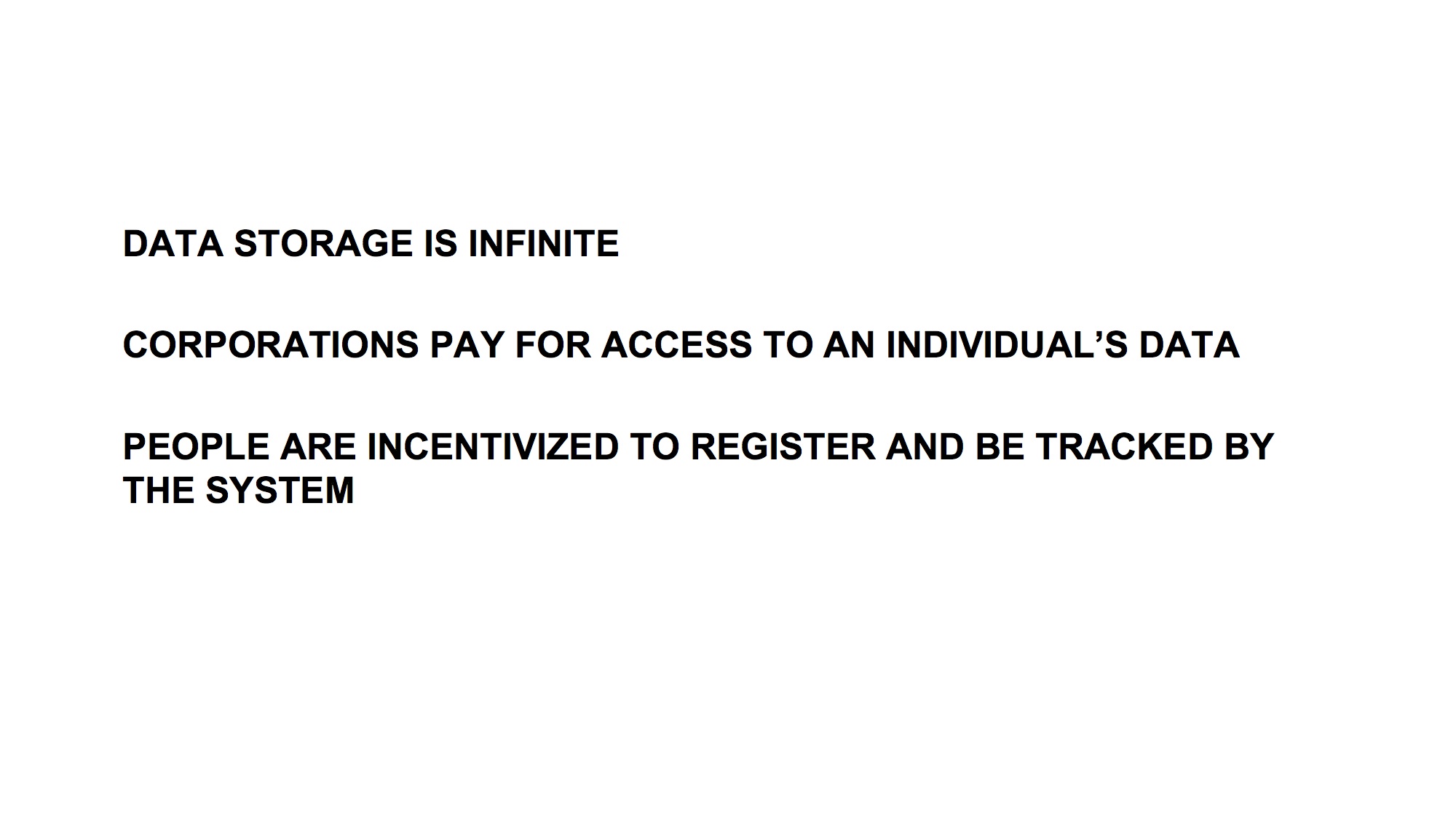

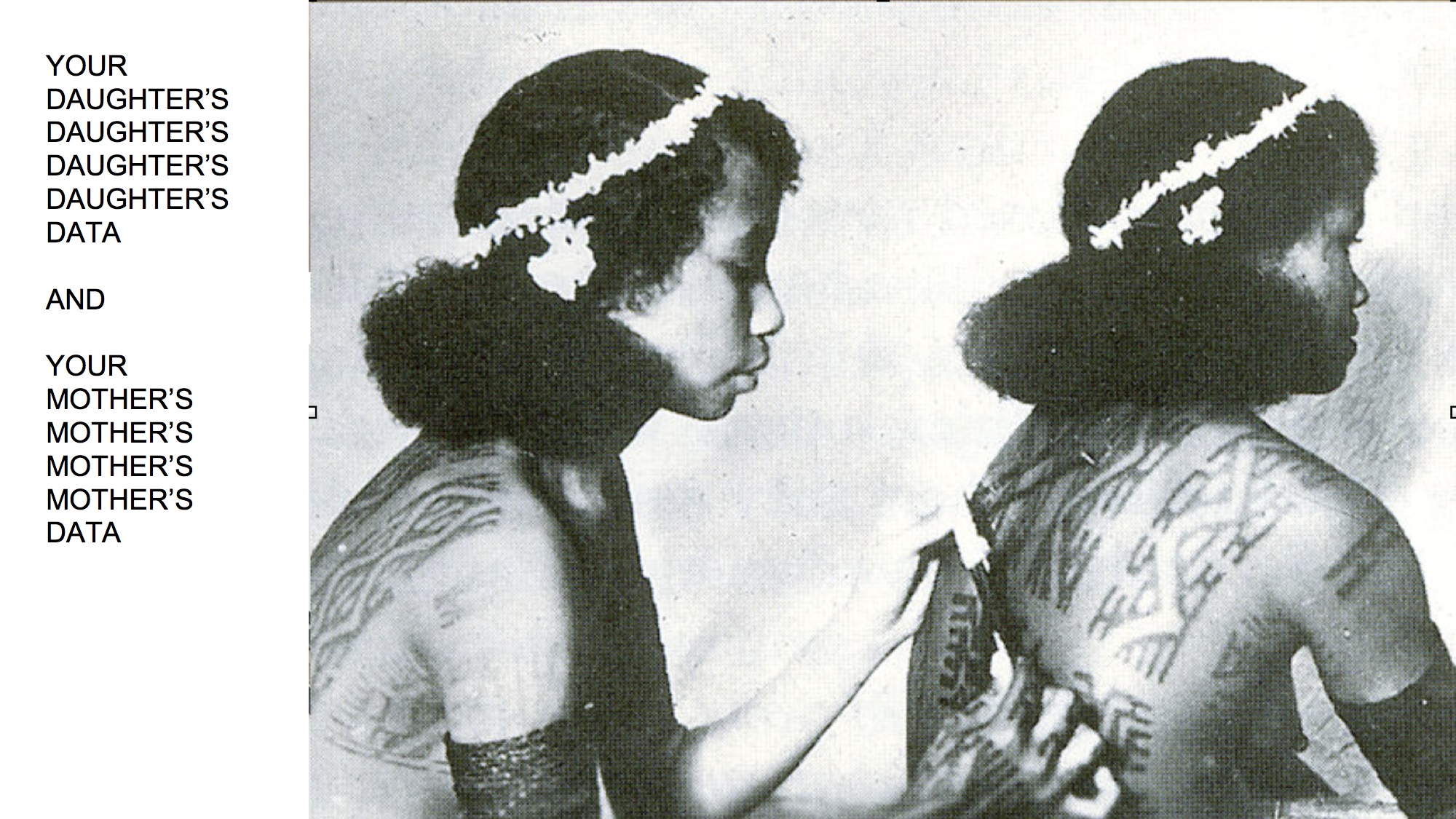
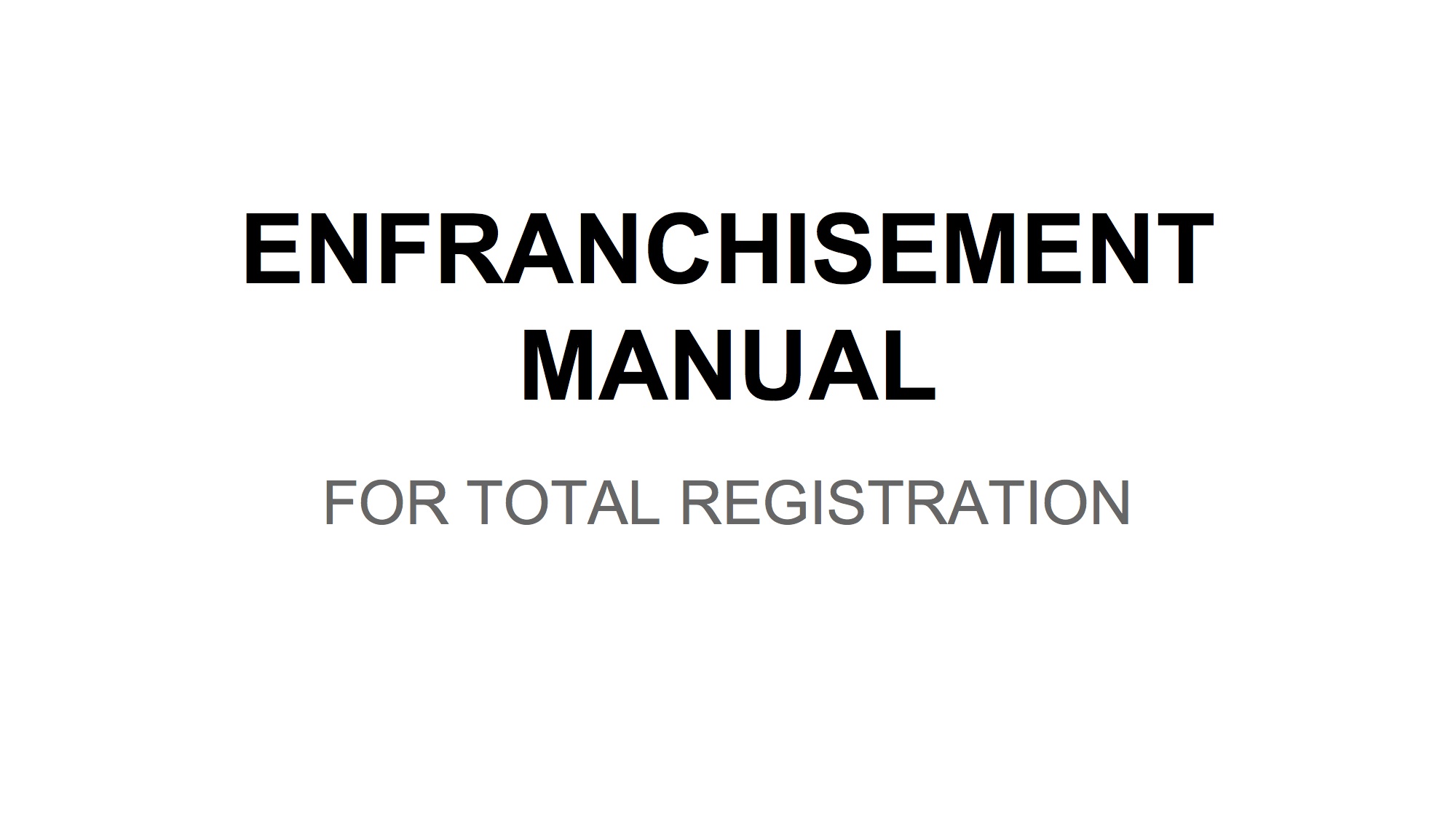
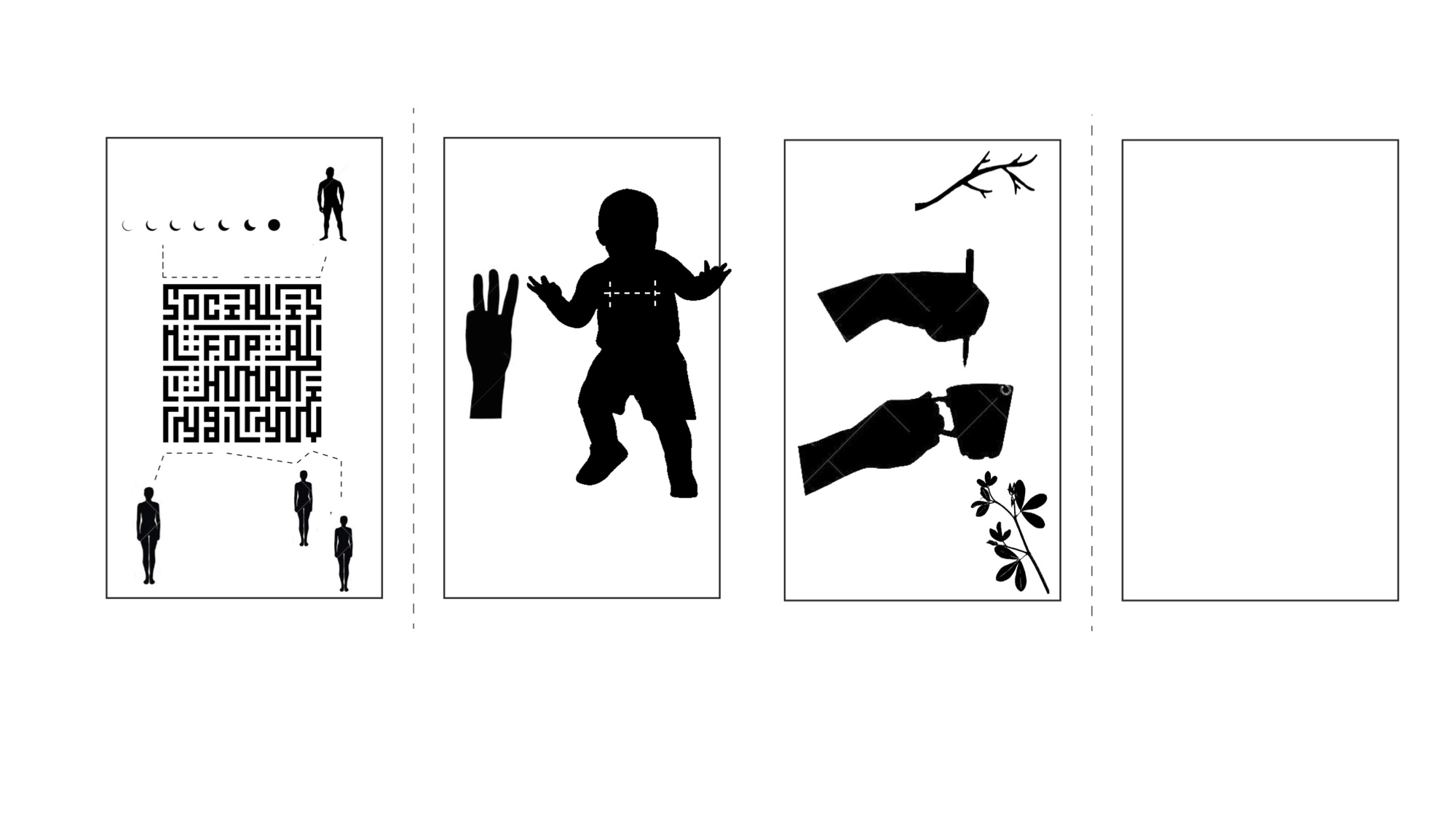
Note the Human-readable QR code is something developed at MIT - I used it as an example design for this concept because it reminded me of Mongolian Tamga and echoes in some way my idea of human-writeable, machine readable ID encoding.
My brainstorming/rapid iteration materials:

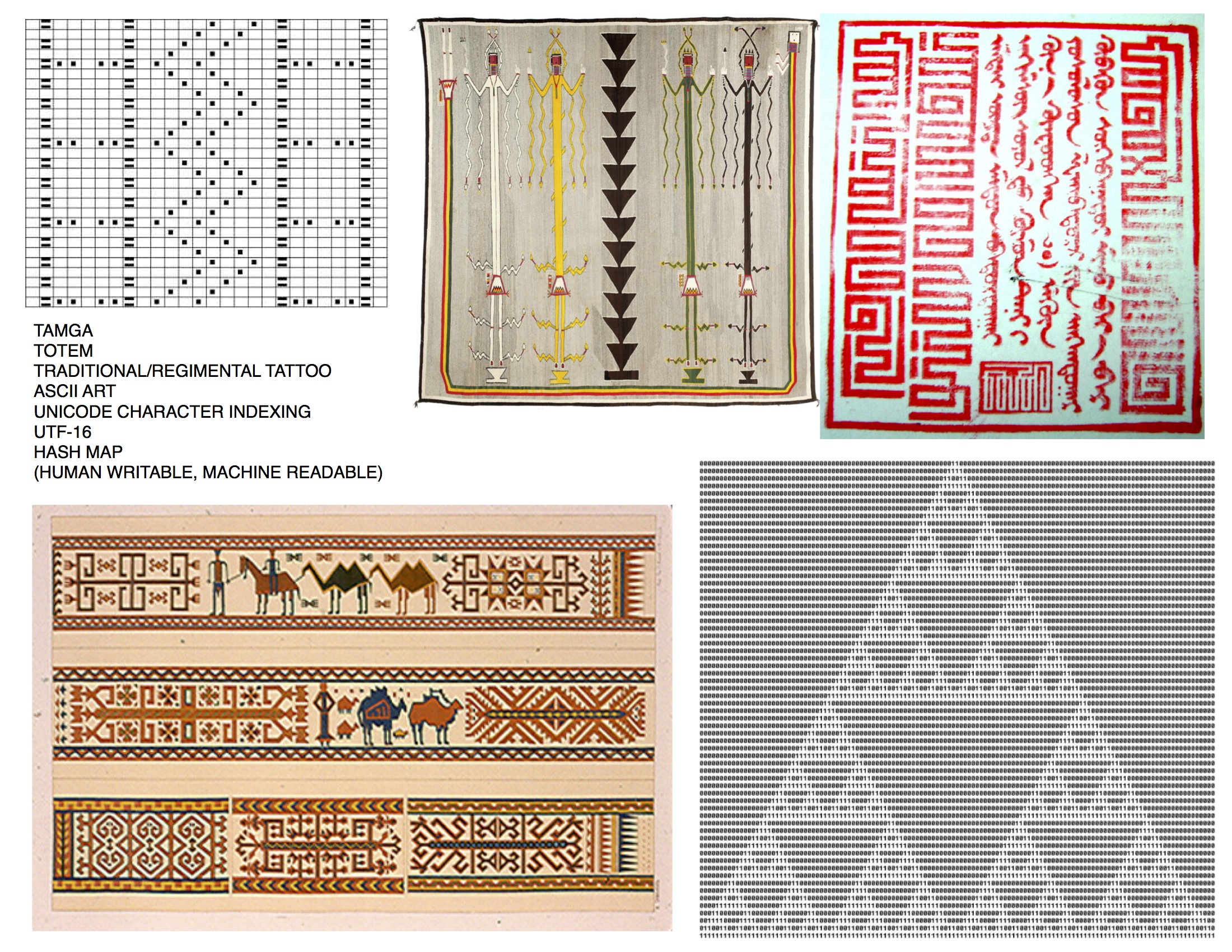
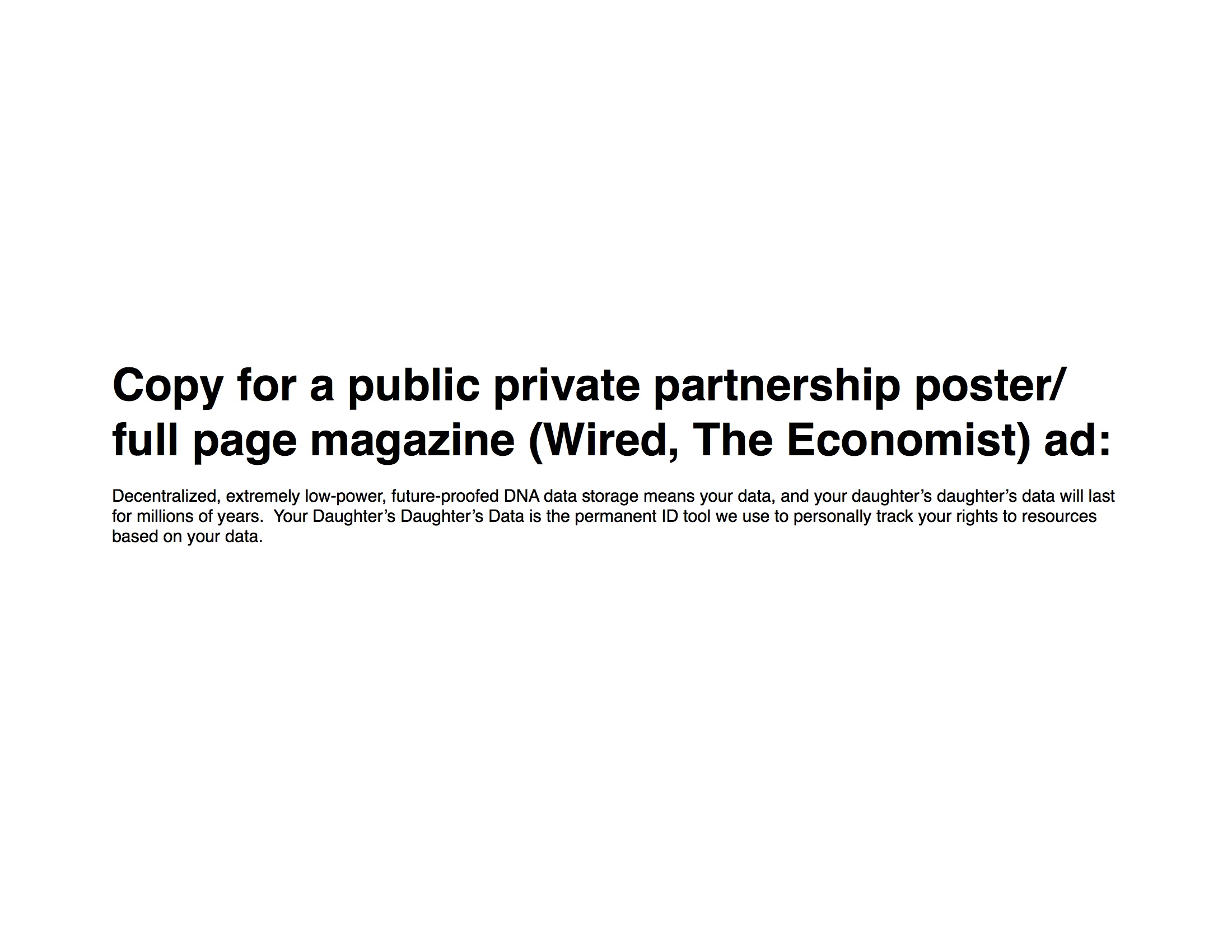
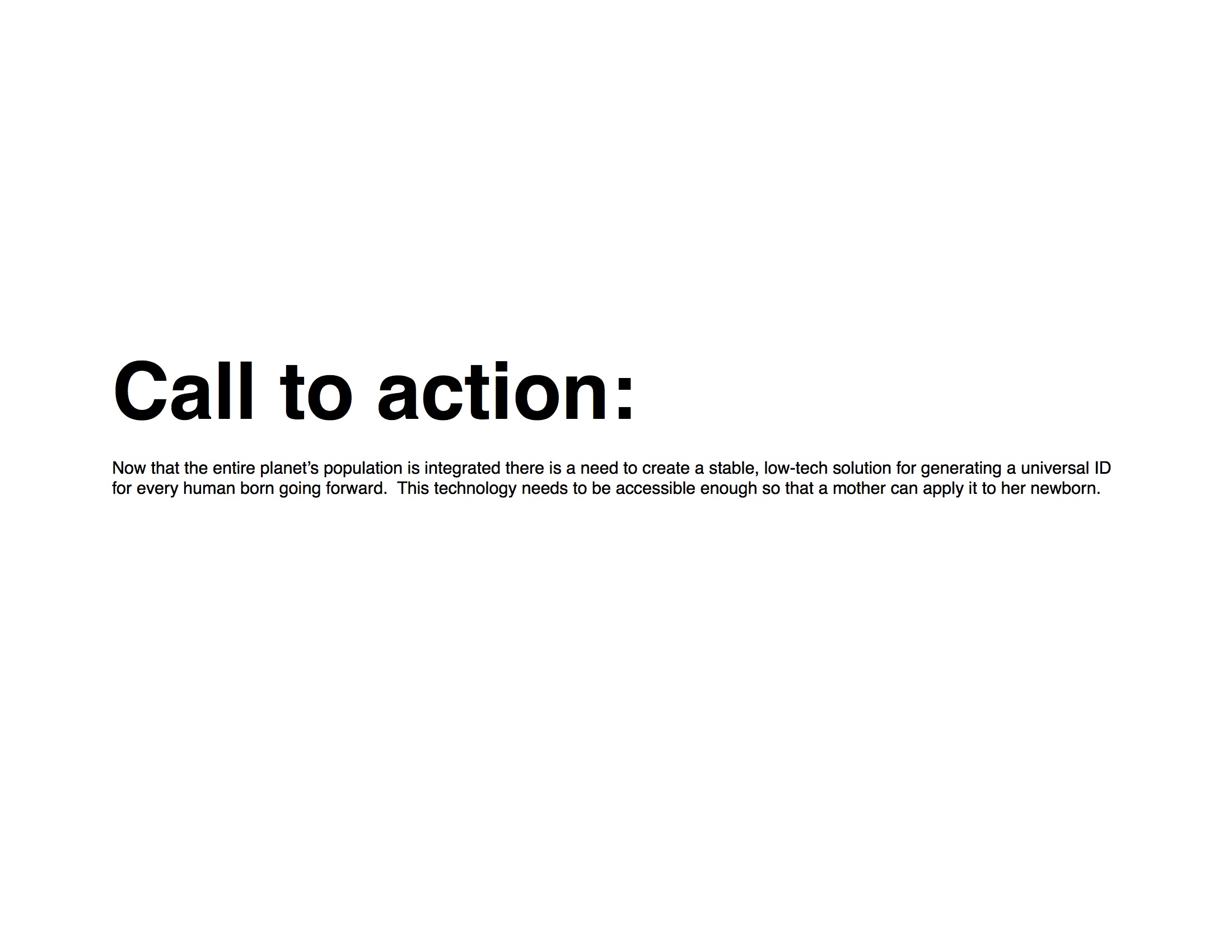
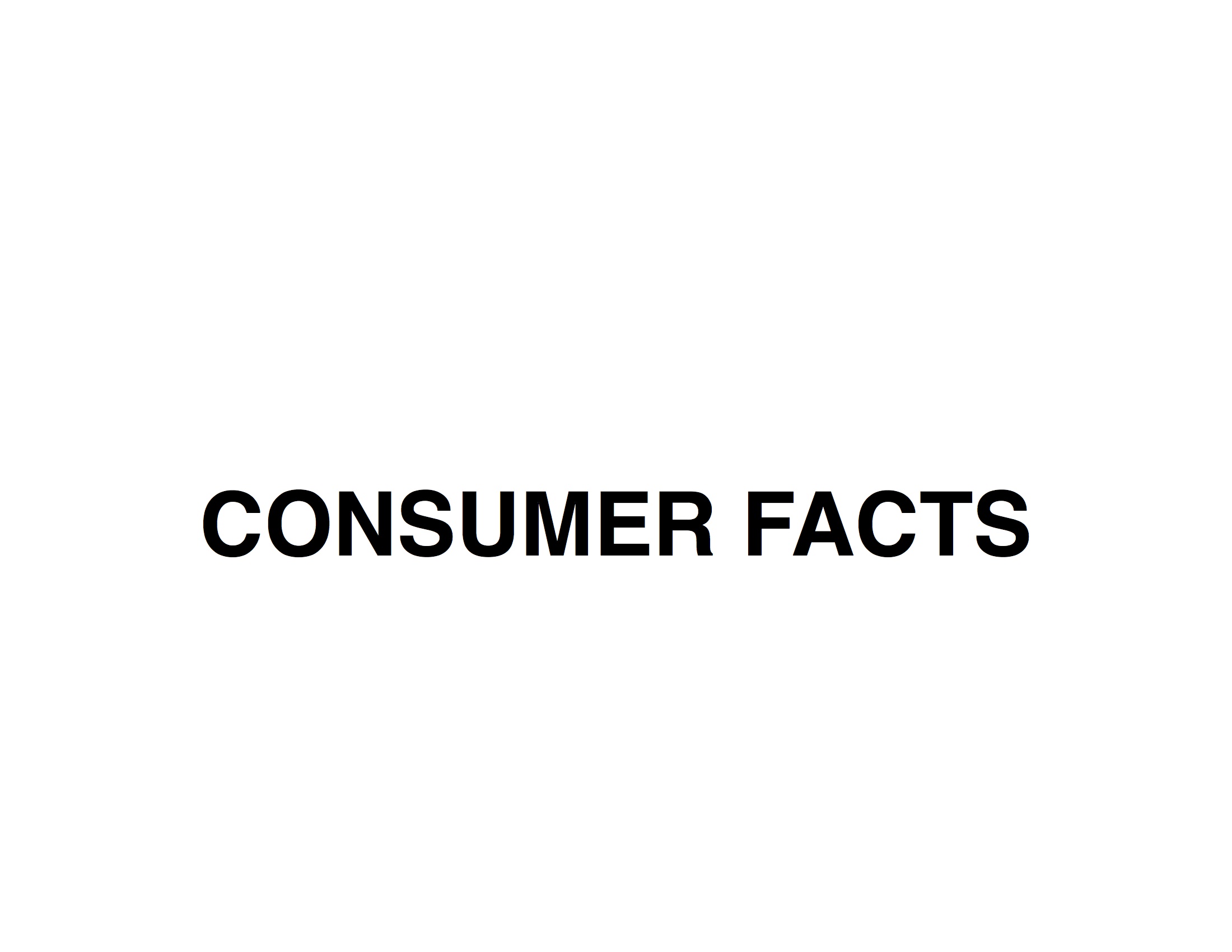
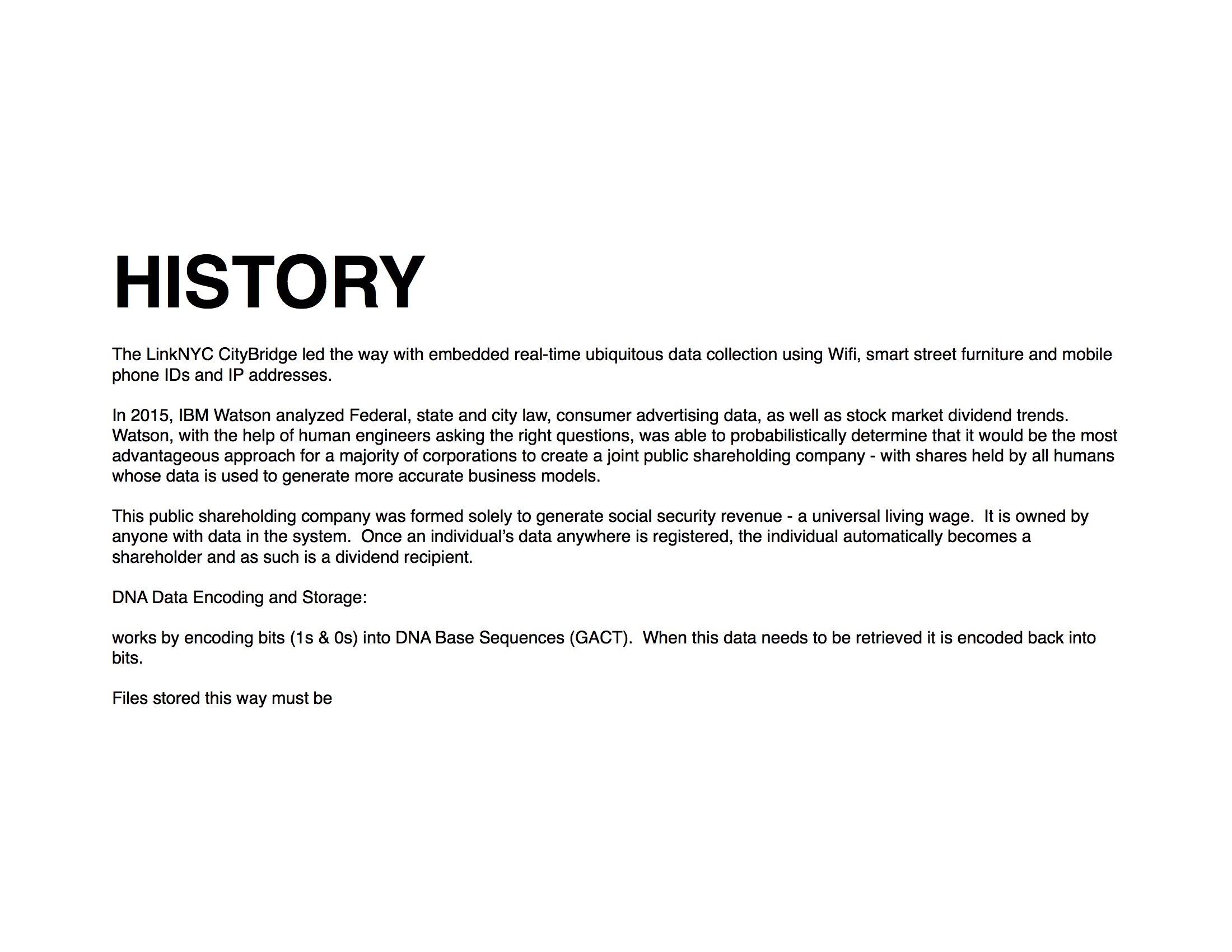
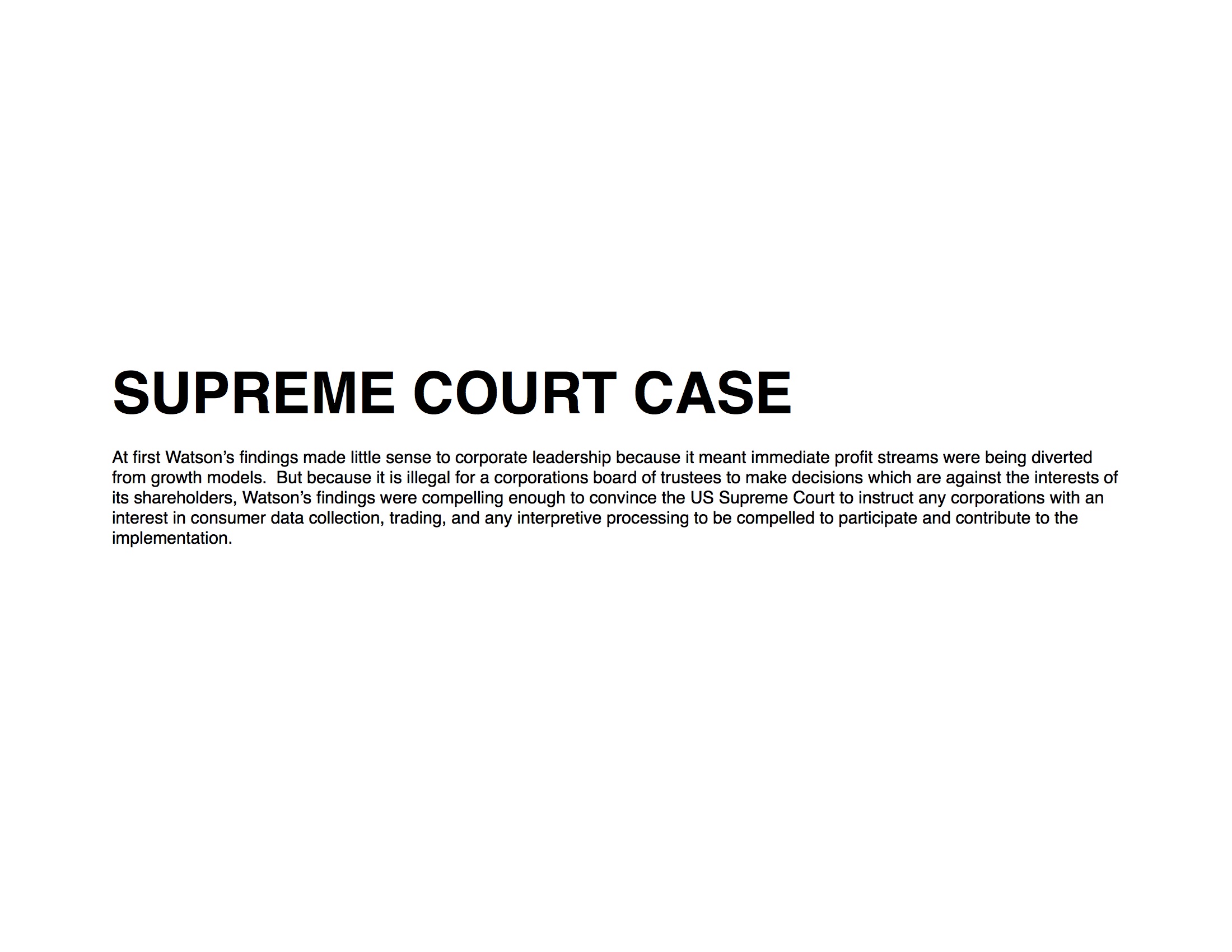
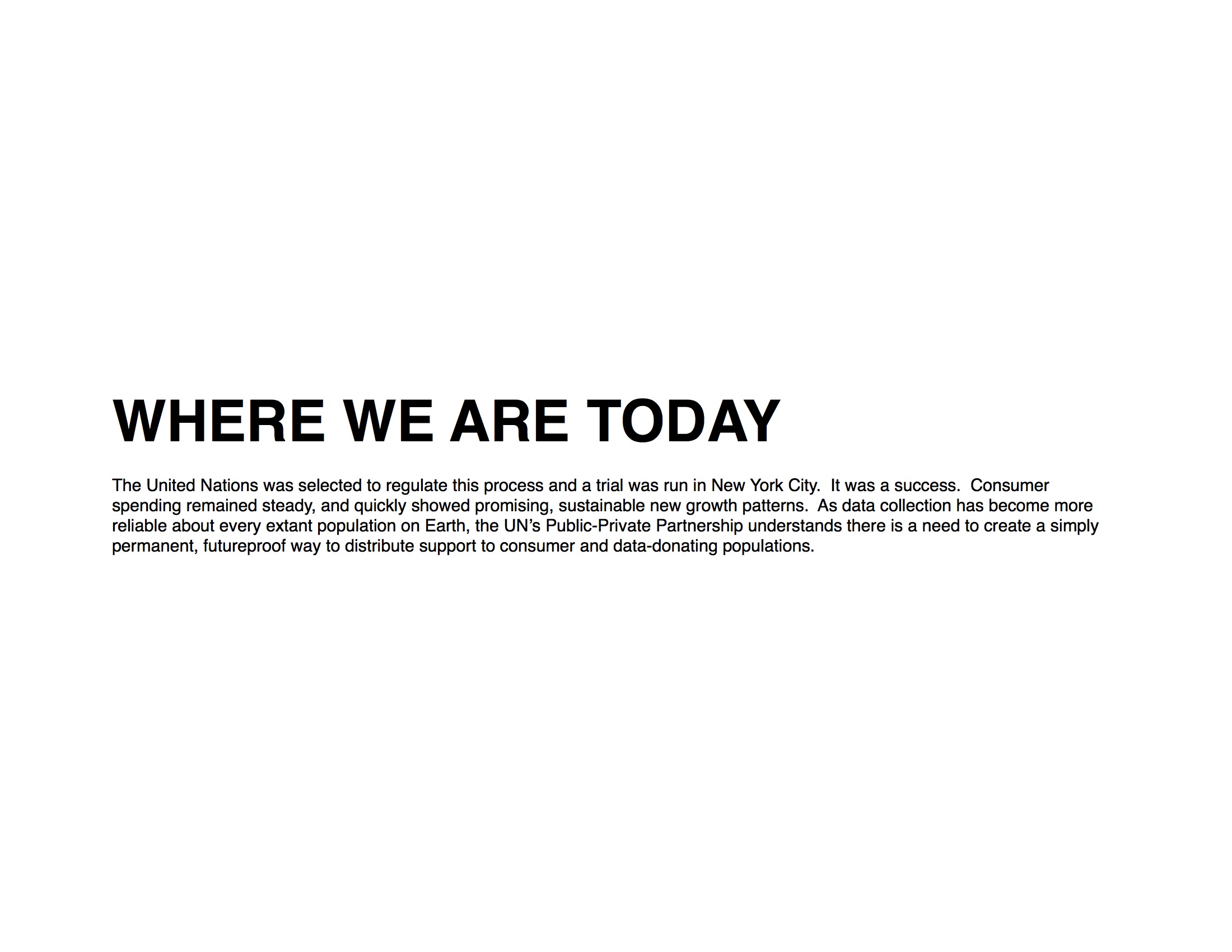
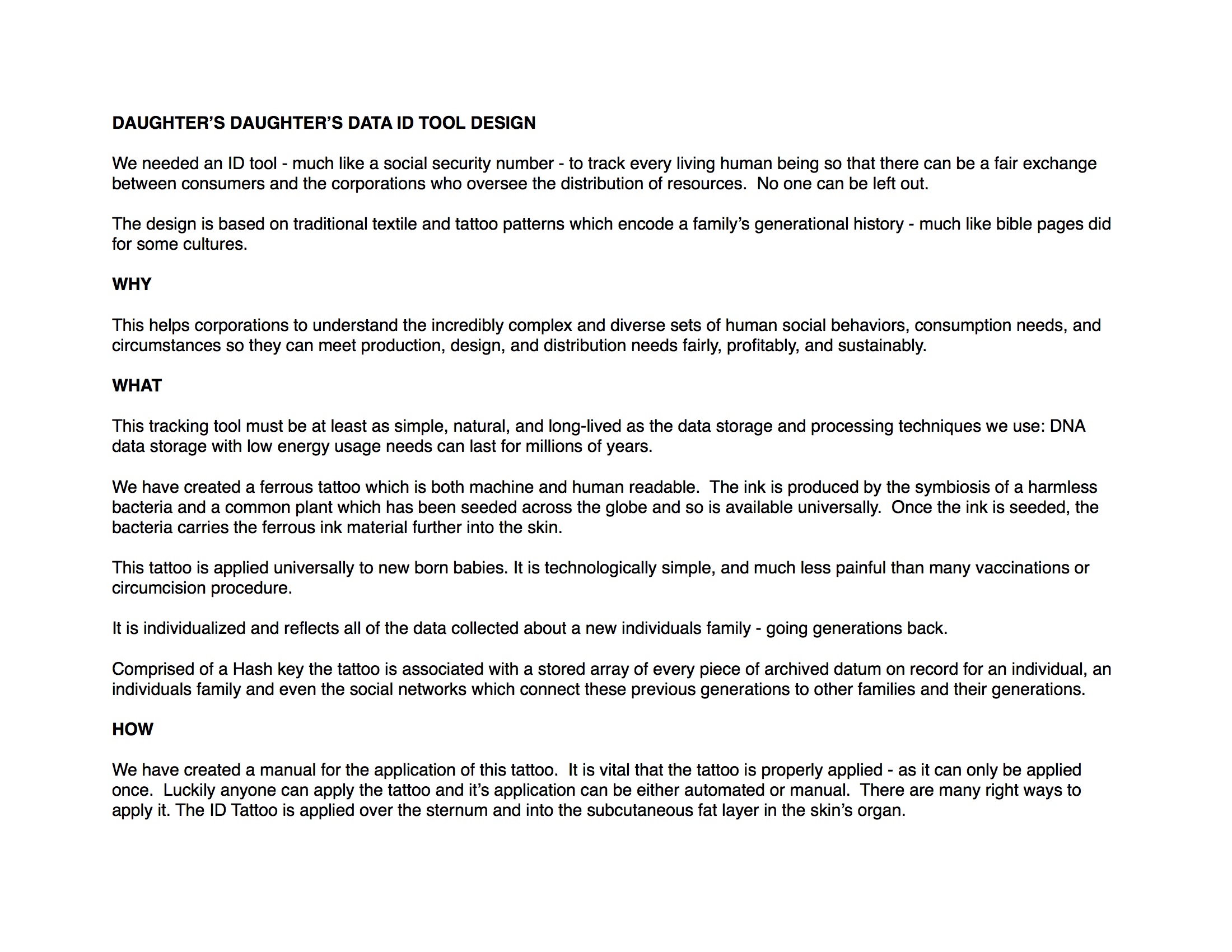
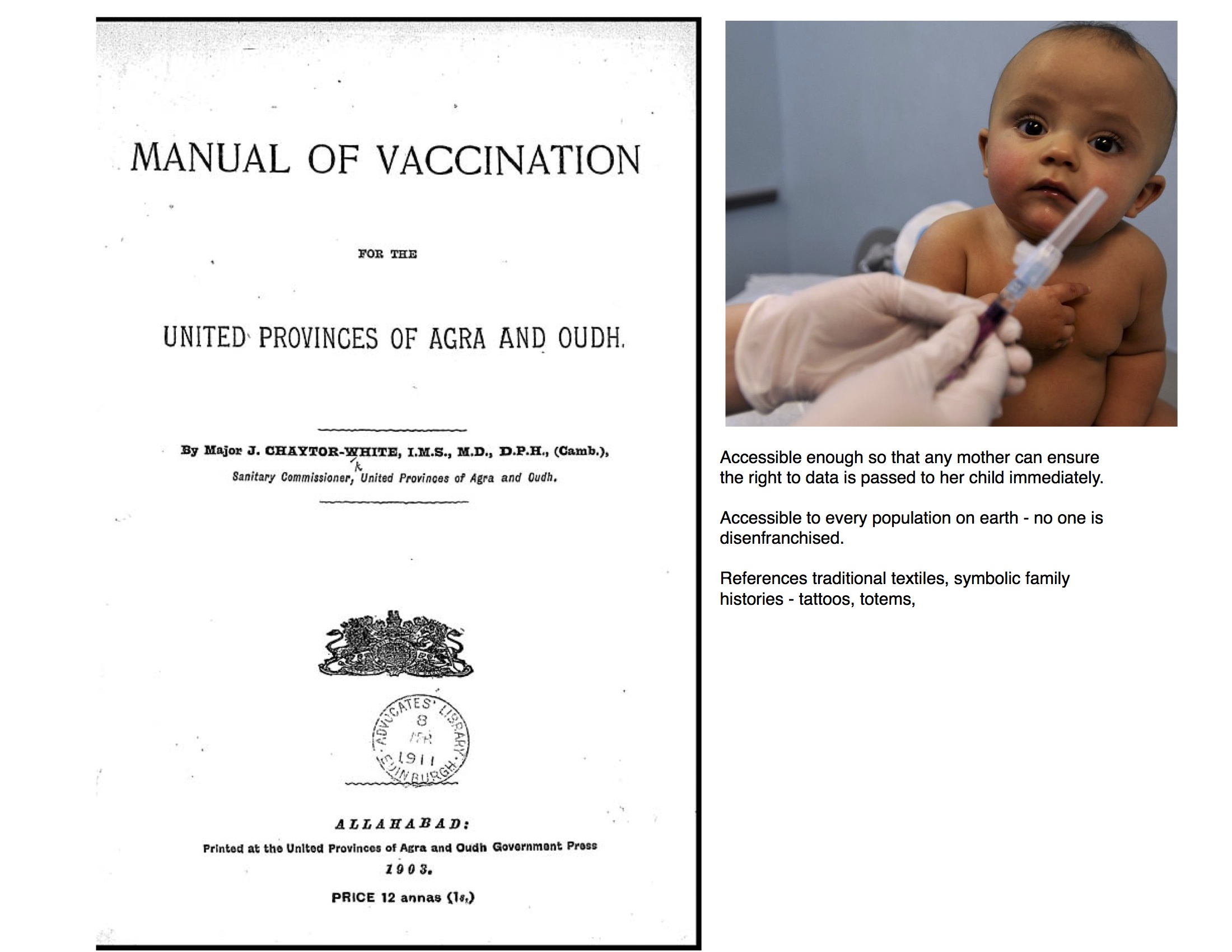
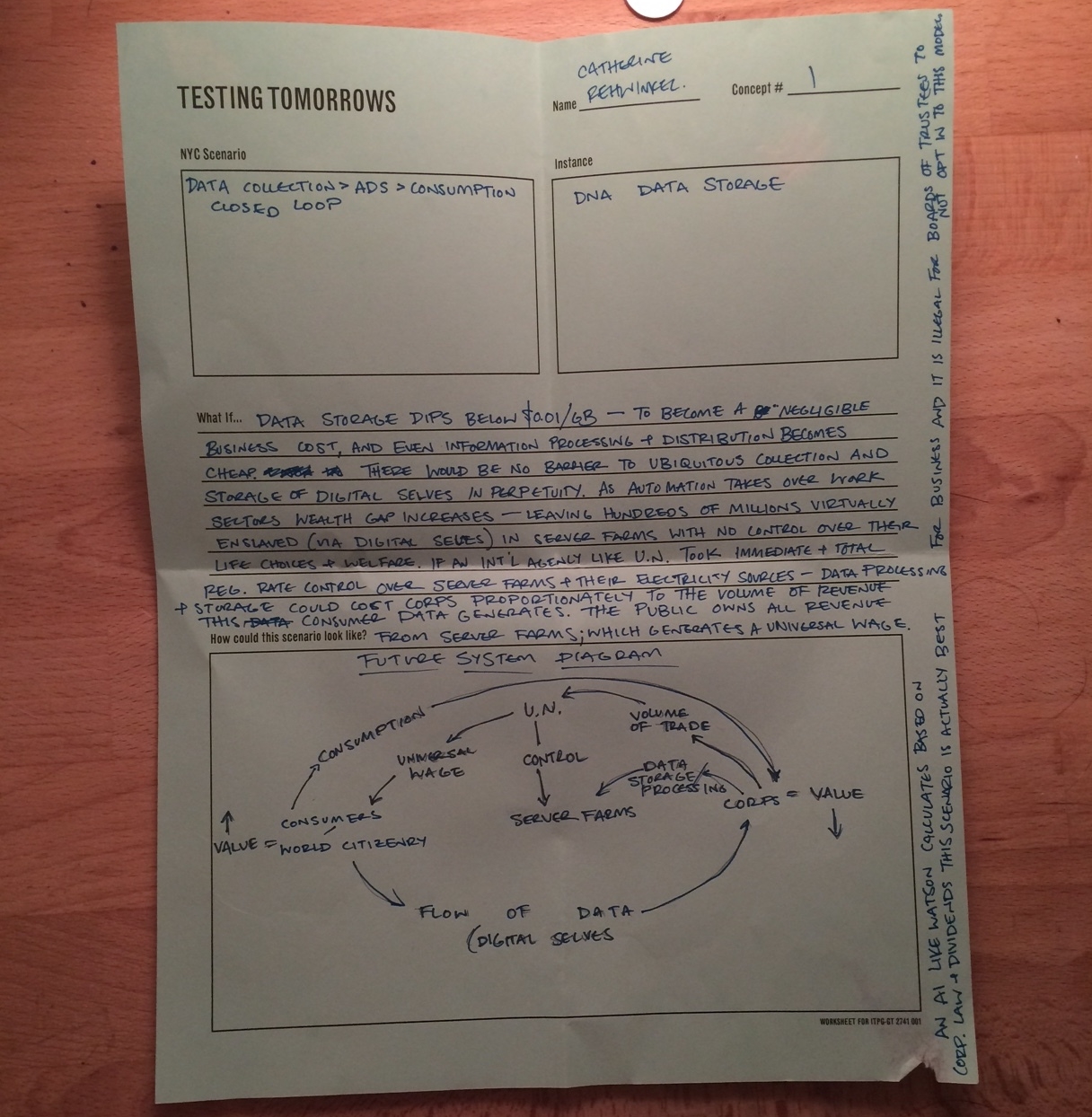
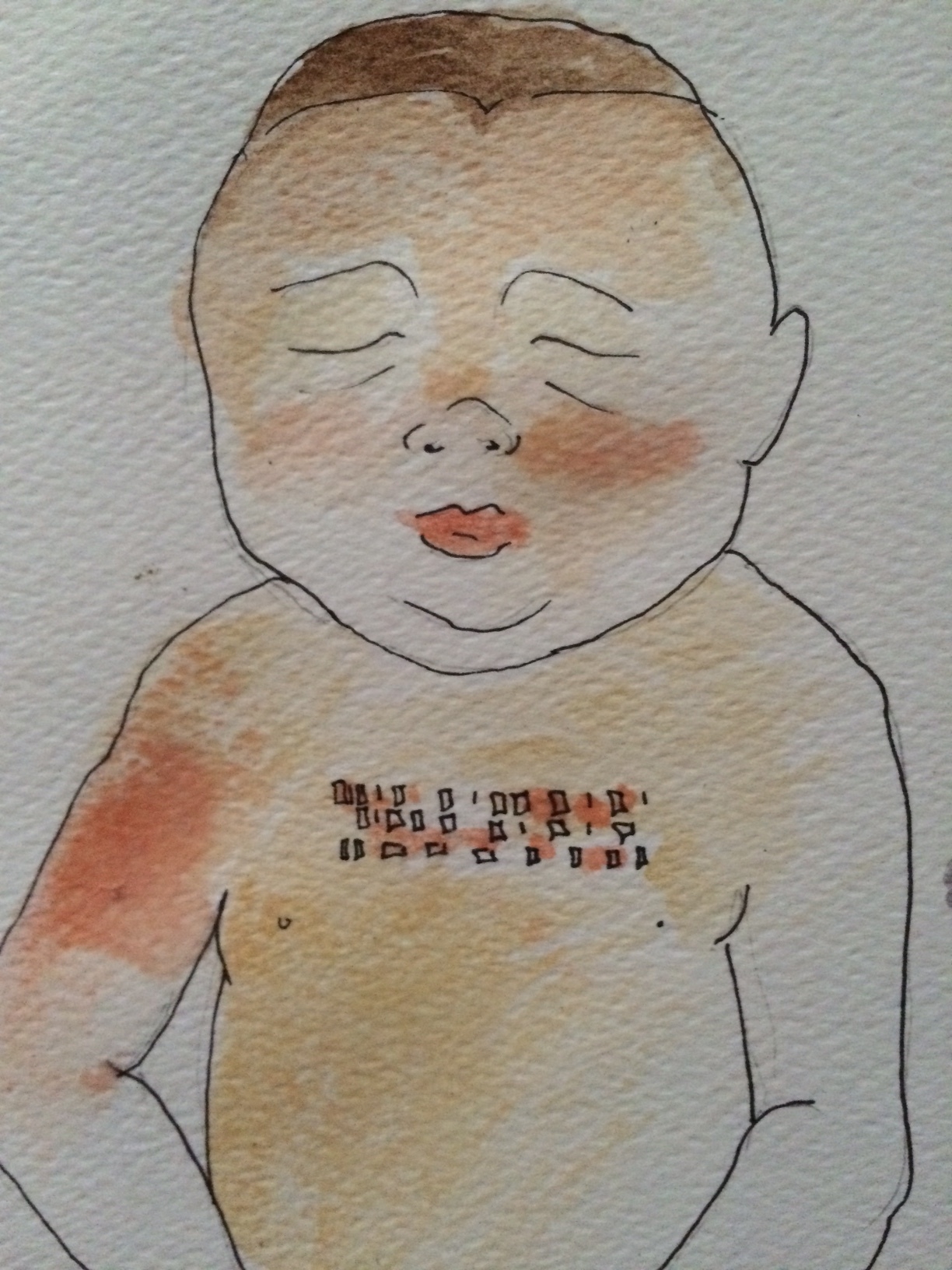
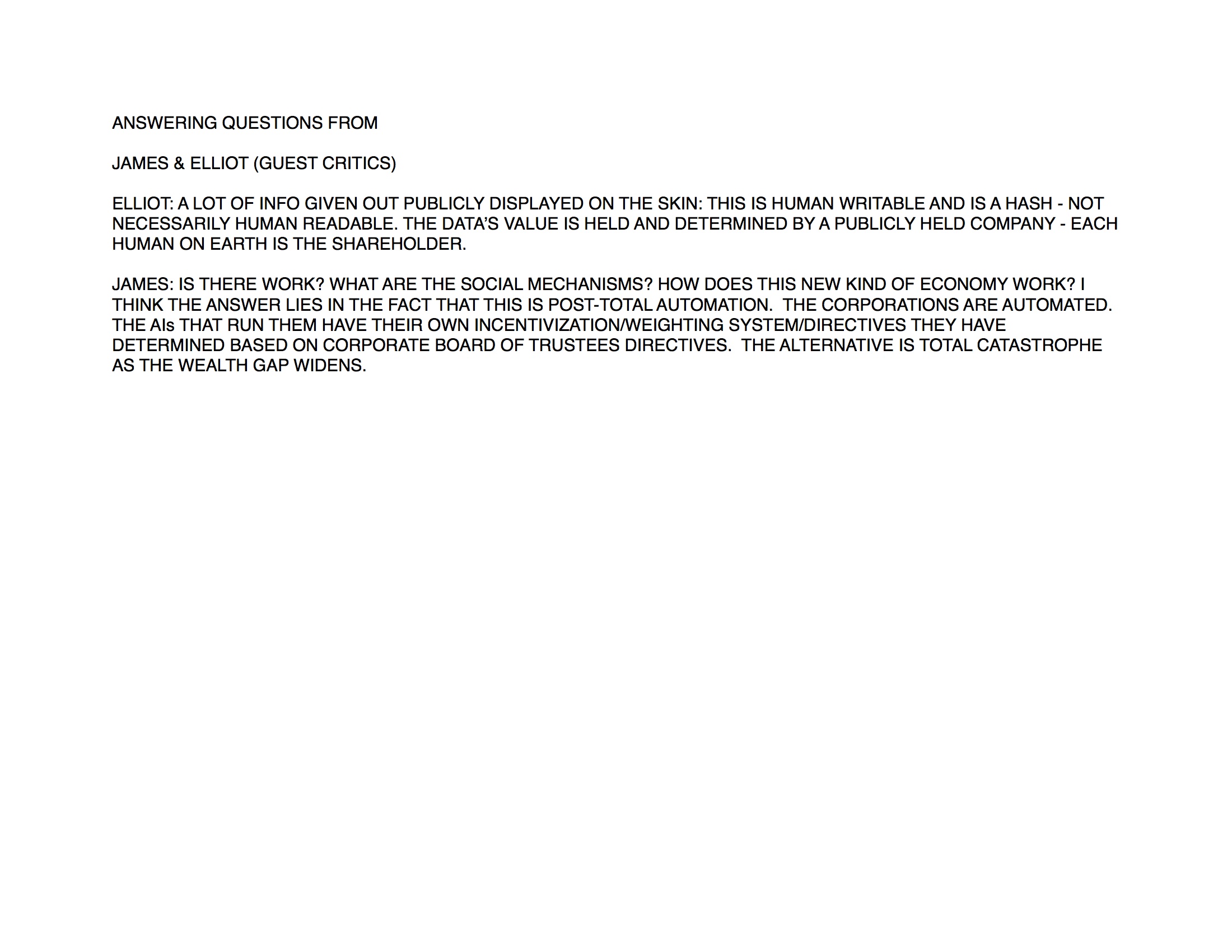
QUESTIONS
There were some intriguing and validating questions and comments which arose such as:
"So this is a utopia." Yep.
"So this is a dystopia." Yep.
"So...do people still do work in this world?" - Not necessarily.
"What's the...how are social norms and law reinforced?" That's the beauty part, see?
"How does business still work? What are the corporations making things for anymore?" Makes you think doesn't it? Like, what's the point after all the money gets sucked up to the top via Trickle Down Economics? (My answer is really that the AIs which run this post-automation world have increasingly more data. There is still the human artifact embedded in the corporate structure which is that the corporations still need consumers with money to buy things to generate profit.) Another interesting thought is that this user-data based business model is one developed by the corporations - they are making money off of our time and as such it reminds me of the cryptocurrency Bitcoin and the way value is assured (and generated?) by computer-based human labor.
"There is maybe still work after all the window-washing is done with. Like creative things, and design." Yes, you can see my Future of New Media presentation on Post-Automation Culture from April or 2015 for more on that! :D We called them 'Innovation Programmers.'
There were other intriguing comments such as one which pointed to the idea that though I refer to my scenario as 'total registration' in this future world - there may arise factions who do not wish to be registered despite the fact that they may not (? or may?) have rights to the same redistributed resources as all the registered people. Here's hoping everyone doesn't have to get a tattoo on their chest as a baby! (But I would say to that negative thought: maybe we won't have to wear make up and heels and ties and eat tons of glucose all the time in front of the boobtoob either. Or pump gas or do computers. I might trade for a chest tattoo if I could climb trees and let sand run through my hands all day thinking of natural calculus that I can whisper to an AI that looks like a whispy cloud on my shoulder.)
The moral of the story is, I'm not the first person to think of these things - but its certainly all I've been caring about lately. Notably my scenario/speculative system got firmly labeled "fiction" by one of the critics, and Chris Woebkins put it here on the spectrum thingy where we all put our proposals on the first day of class:
Just this side of impossible. Anything that we say is a 'little bit' impossible is impossible.
That being said, this was a speculative design class. And it occurs to me that the fact that topium and feasibility were the coordinates really says something about design, and speculation, as word-concepts.
SEMI AND THE NEW CHURCH
WHAT
A screenplay with meta themes about film as a mass communication medium, language, storytelling, energy, and physicalism. The project also involves three proposed interactive component which I plan to continue through the summer and potentially into the rest of my time at ITP.
STORY SUMMARY
Semi and the New Church is set in a post-dystopian, post-automation North America. Semi is a female-type android who is seeded into a human family as a "baby." She is a control in a large scale experiment in which Creators A & B are studying emotional illogic and logic in longterm human decision-making and future planning. Her highest directive is to mutual benefit of all life into indefinite future projections. On a daily basis she helps guide her family and peers to form better social interactions and decisions. Her hobby is teaching her African Grey Parrot human language using Machine Learning and the ideas of behavioralism. Fascinated with human creativity and the idea of true randomness she makes friends with a computer science PhD. Graduating to university she receives an upgrade and her new friend helps her to realize that her creators are limiting and manipulating her processes. She uncovers that their purpose in doing so is to actually test her perceived trustworthiness amongst her human peers so that she and others like her can help her Creators execute an act of mass deception and a return to the old economic ways. Semi decides to stop her intensive "personhood" processes so that she can secretly conserve the memory for the operations her Creators don't want her to do without their supervision. As she slips into the uncanny valley her family rejects her. Semi gathers all her strength and completes and exhaustive future project modeling of all vector-space. Her conclusion is that human language will always allow humanity to deceive itself out of self-interest and because it can never map to a high enough data resolution to encompass the nature of reality. Semi sees that the best course of action to give humanity and the rest of life the best chance for mutual benefit is to wipe out language at the human germline. During her final debriefing with her concerned Creators Semi reveals that she has been using her bodies bacterial switches to breed a virus strain which causes epigenetic lesions in the language centers of the human brain, causing selective aphasia. Semi walks out into a world in which all people are living in a kind of reverse Babel, people can no longer lie to each other.
ADDENDUM 6.14.2015
One of Semi's fixations is human creativity and randomness - she finally achieves an approximation of these when she realizes she can not determine the outcome AFTER wiping out human language centers - she can only extrapolate from a current state or crystalline knowledge of what is possible. Will humans just develop human language anew? It is possible, plausible, even probable. But she calculates it is extremely unlikely to have the same patterns, path, outcome as the first time humans developed language in spacetime (history.)
INTERACTIVE COMPONENTS
A visual reference gathering and writing tool which I will continue to hone. Currently there is a JQuery/Ajax conflict which I need to fix.
http://104.236.52.219:3000/cyborg/demo.html
But a vimeo of the tool prototype can be seen here - which shows the associative flicker of images tagged to each word, or narrative block, or character slug.
Below is a schematic for an opportunity for the audience to give input on the rather large cliffhanger at the end of the film - as Semi walks away having destroyed human culture paradigms in one fell-swoop - I think audiences should be able to contribute a record of their reaction, to do something to invert the passive narrative reception that film and other traditional forms of linear storytelling require.
This could literally be remote or touch screen input at the end, a kind of diary entry of opinion, shock, whatever. Ideally it would become a part of the commercial data of the distributed film.
The final interactive component is one which I came up with after the fact: a Markov-chain generated social interactions projection model. I would like to prototype a simple machine learning system, perhaps executed as a simple interactive narrative game in which I can model an interaction between two or more actors, and generate outcome paths of different interaction choices. This would be an interesting writing/directing tool to use. I would also like to speak to a behavioral clinical psychologist to talk about existing work in this area.
SCALE
Ultimately I'd like this to be public, and expensive. However, I would like to focus on private and cheap right now as placement strategies for this work. I have been thinking for a while now how to advance screenwriting craft beyond being just considered as a blueprint for another medium. I think it's concision and active voice can be appreciated as a new kind of popular literature in its written form. I see this is an opportunity to explore that. I also feel that because language and economics are such a central theme in my thinking and this project, it's important to not develop this with an obsession toward traditional distribution. That is why the visualization web tool is important to me - I'd like to open it to crowdsourced image adding once I finish a polished draft.
WHERE MY PROJECT IS NOW
Aside from the primitive prototype of the web tool I have world-building materials to start with. I created a loose, brief outline using anthropologist Joseph Campbell's classic Hero's Journey template for a screenplay. In addition to the preliminary work here, my final projects in Reading and Writing Electronic Text, Energy, and Futures of New Media are also world and character building explorations which I am happy with as deep beginning explorations. I need much more research and plan to expand my expert consultation, as well as revisit with my AI research expert.
A semi-complete concept map attempting to tie in everything about the mind-prison of human societal paradigms.
A nascent outline based on Joseph Campbell's Hero's Journey
*EDITED June 17 2015
POST MORTEM
I really appreciated Dan O'Sullivan and especially Jessica Behm's comments about the archetype of the feminist cyborg, during the presentation session. Comments that I should have started with the story first rather than starting by presenting ideas and background made sense but also puzzled me. Similarly to my midterm about time, I have been living with these ideas in my head and they are more complex to others than I imagine. I need to take more time to focus my themes so that I can deliver the appropriate information in easily digestible packets. However, I reject the notion of narrowing my themes - since that is the very nature of Semi's problem with human language and storytelling - it's not a high-resolution picture of reality. But since I have the urge to synthesize so much at once I clearly need to learn how to do so at this level. I am excited to talk to more experts and continue my writing and my research, science fiction reading, and my expert interviews since I have hit on a story concept which satisfies both my natural affinity to storytelling as well as my concerns about it and it's interference with the health of humanity's concepts of energy.
I also received positive feedback from class peers on their interest level in the story material and my connection across seemingly disparate disciplines.
**ADD NOTE SCANS**
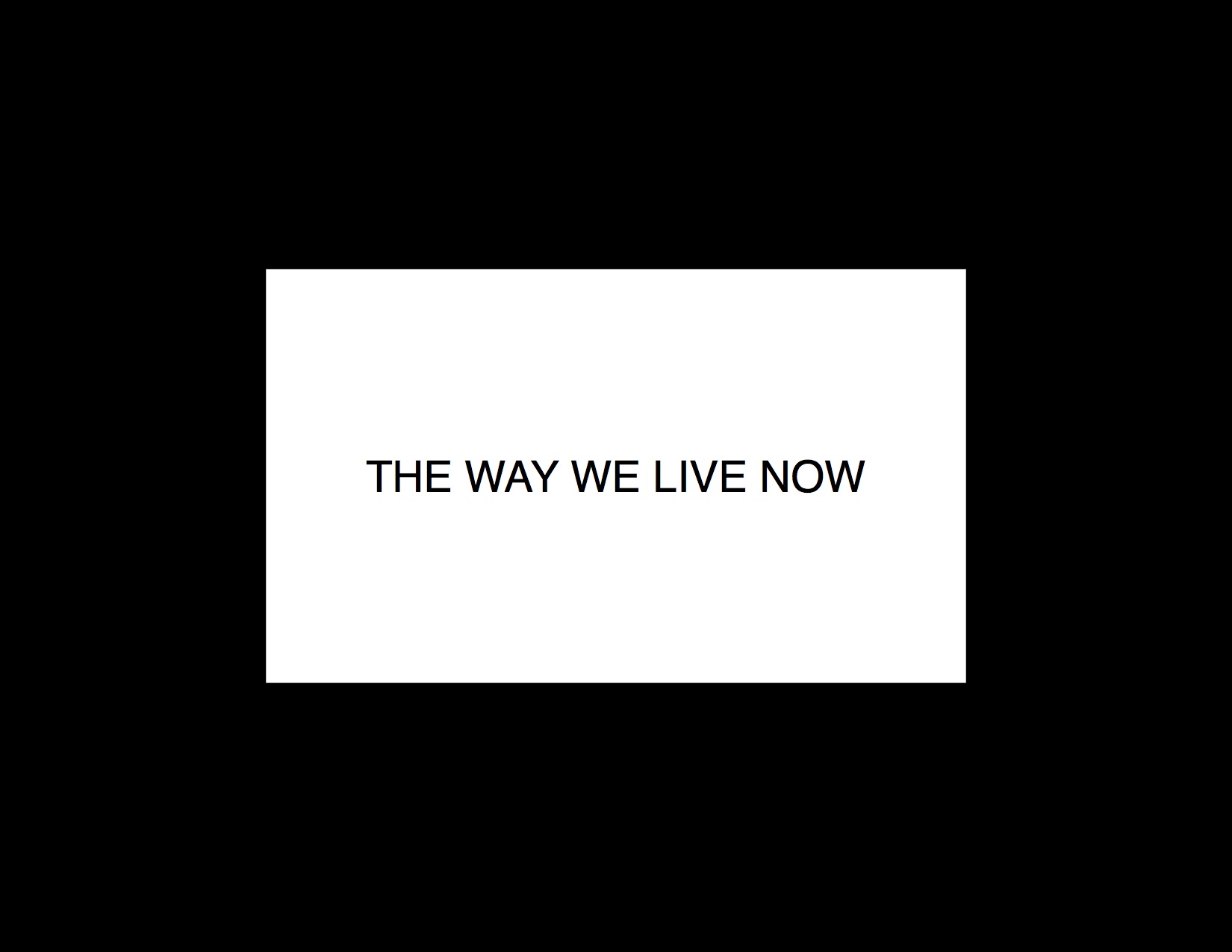
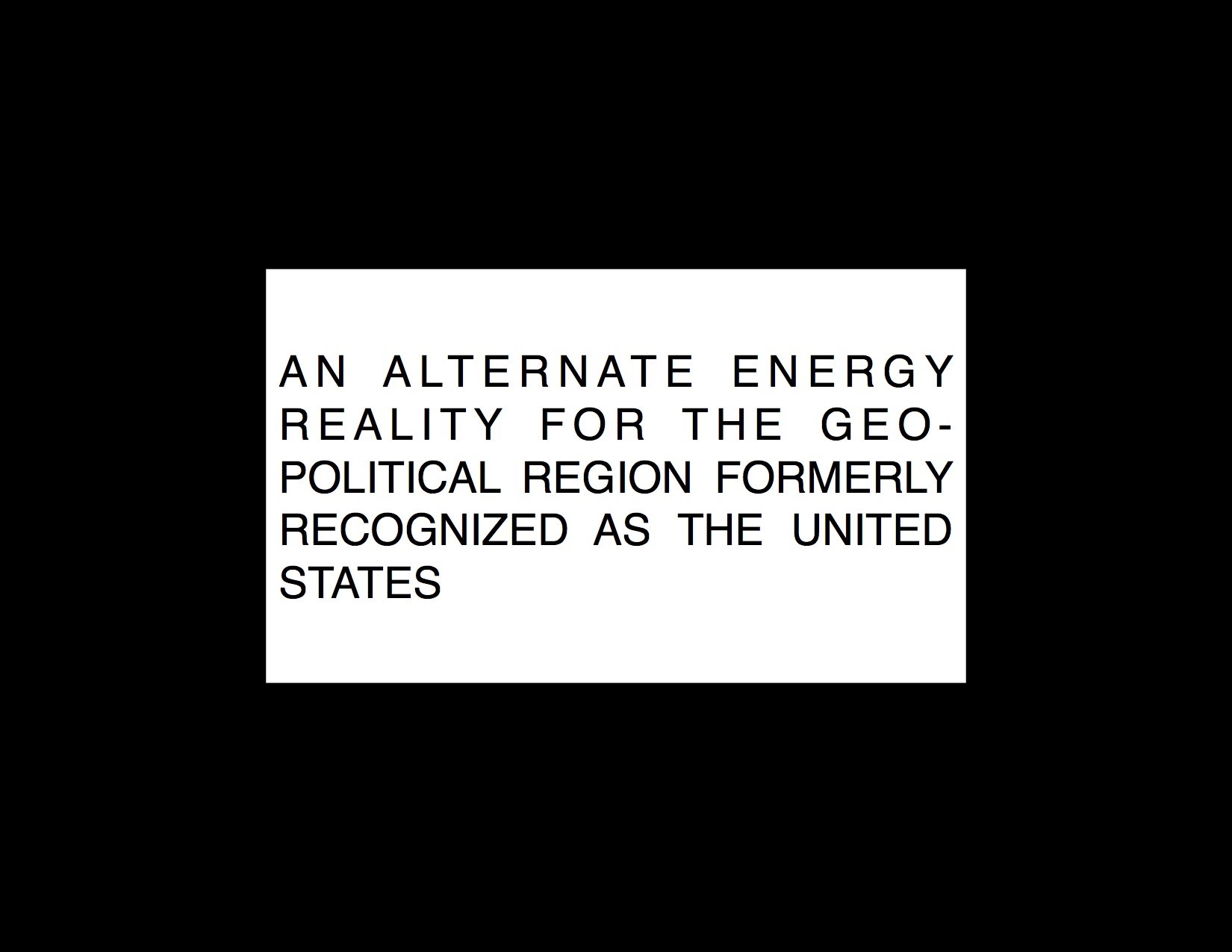
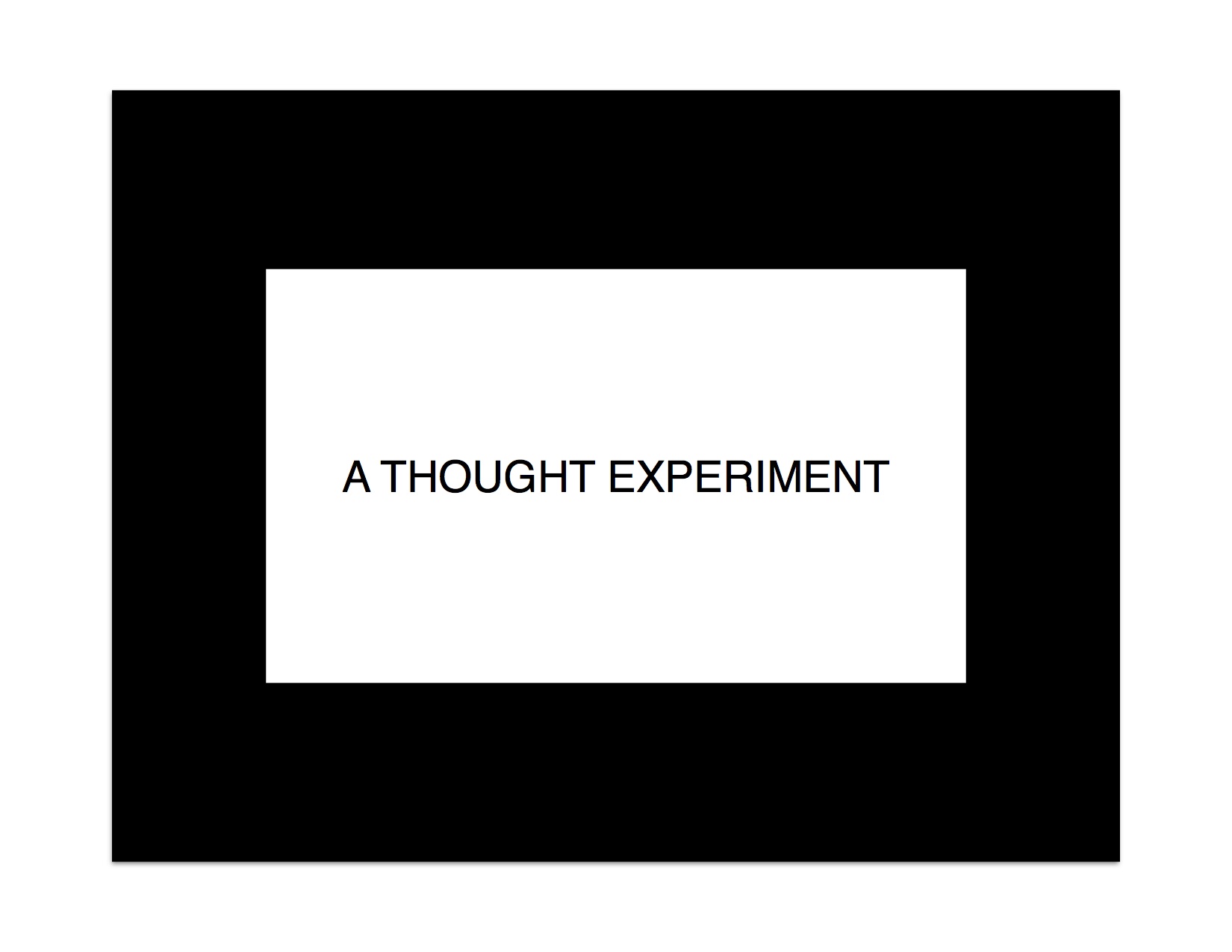
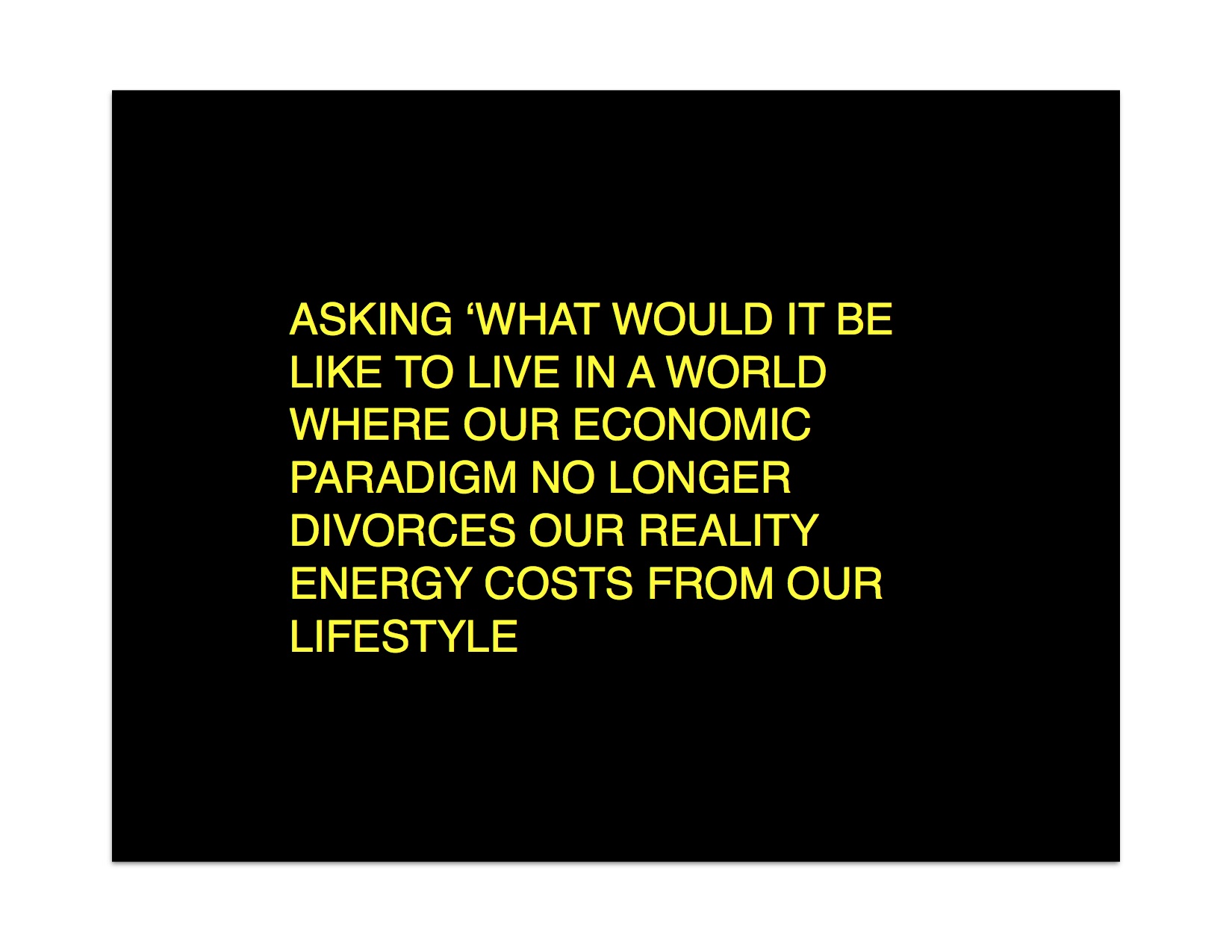
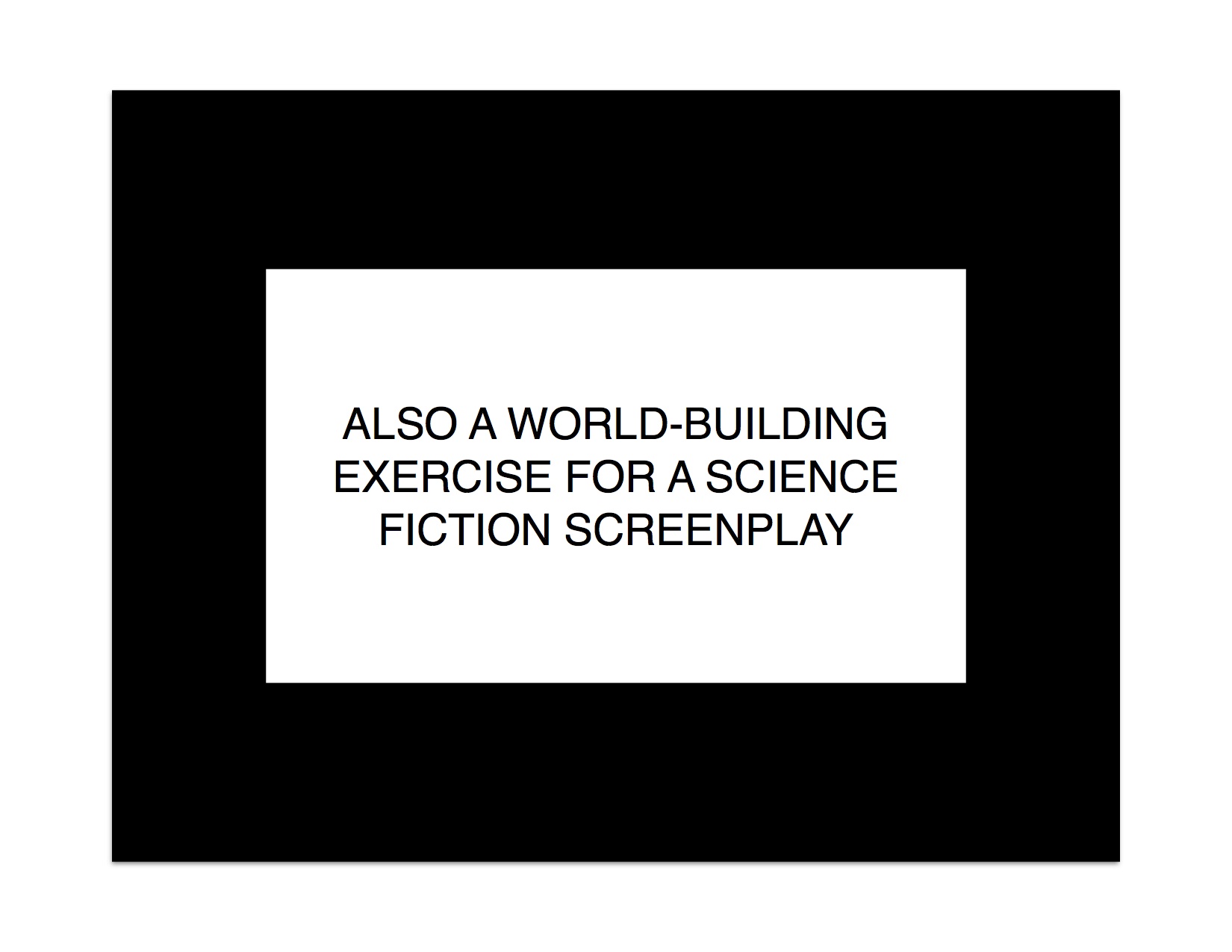
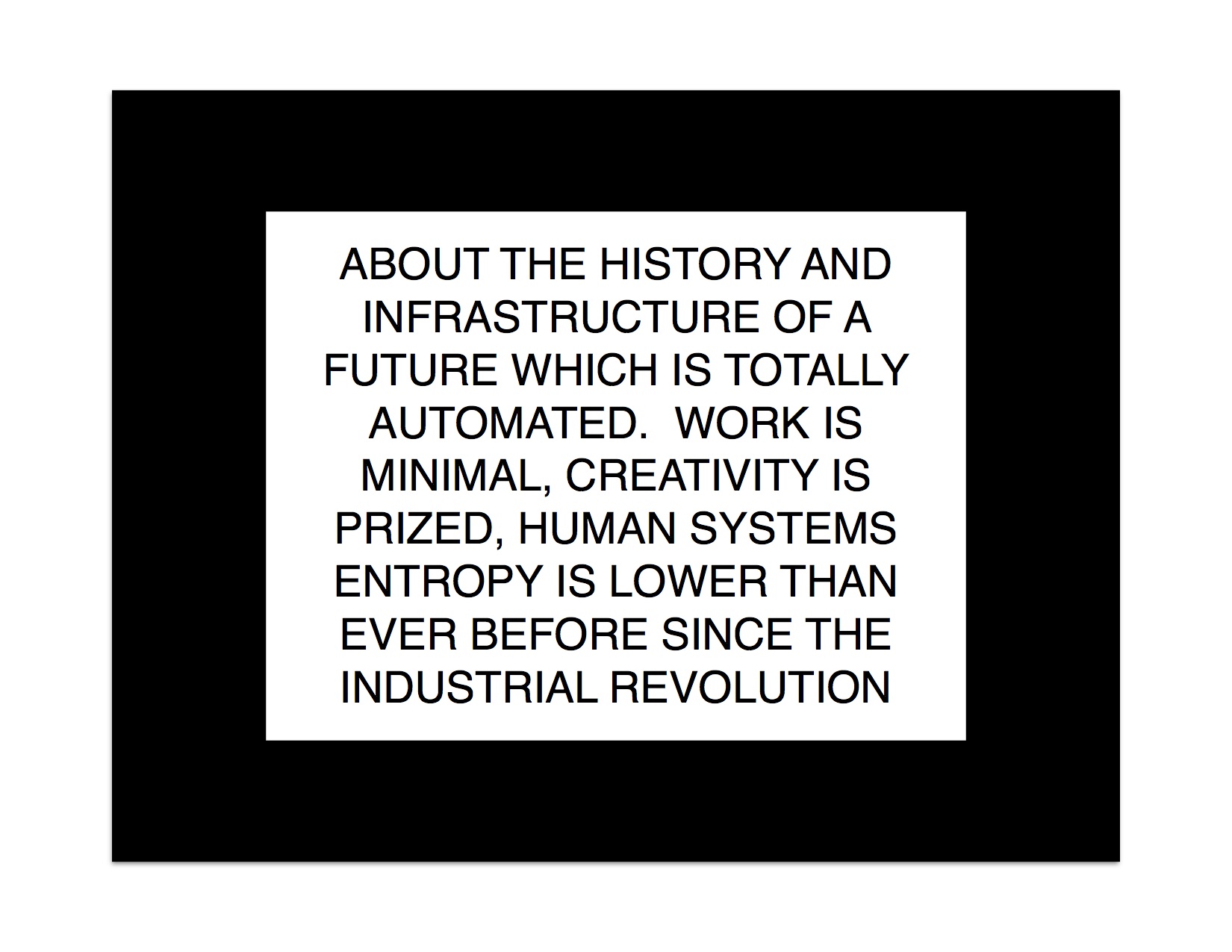
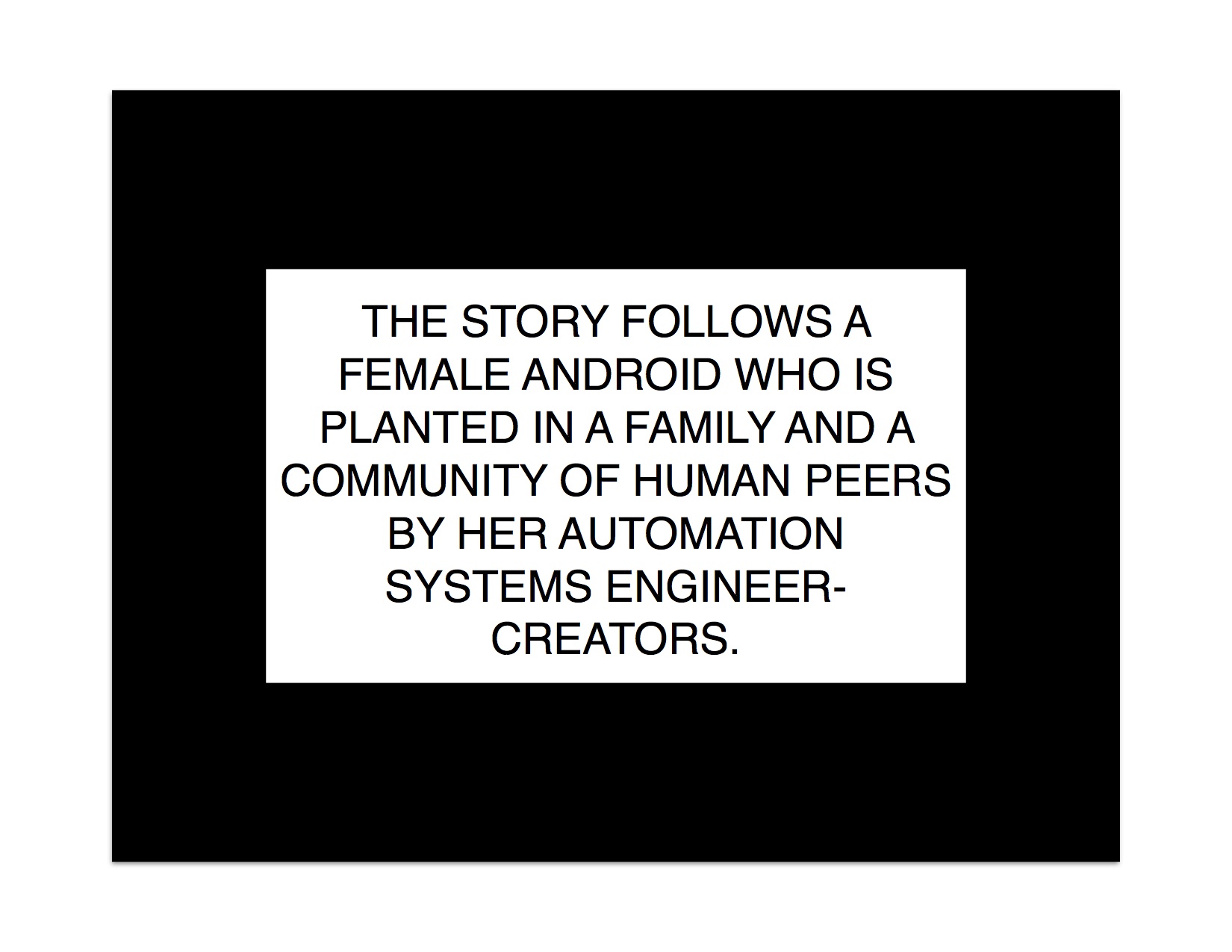
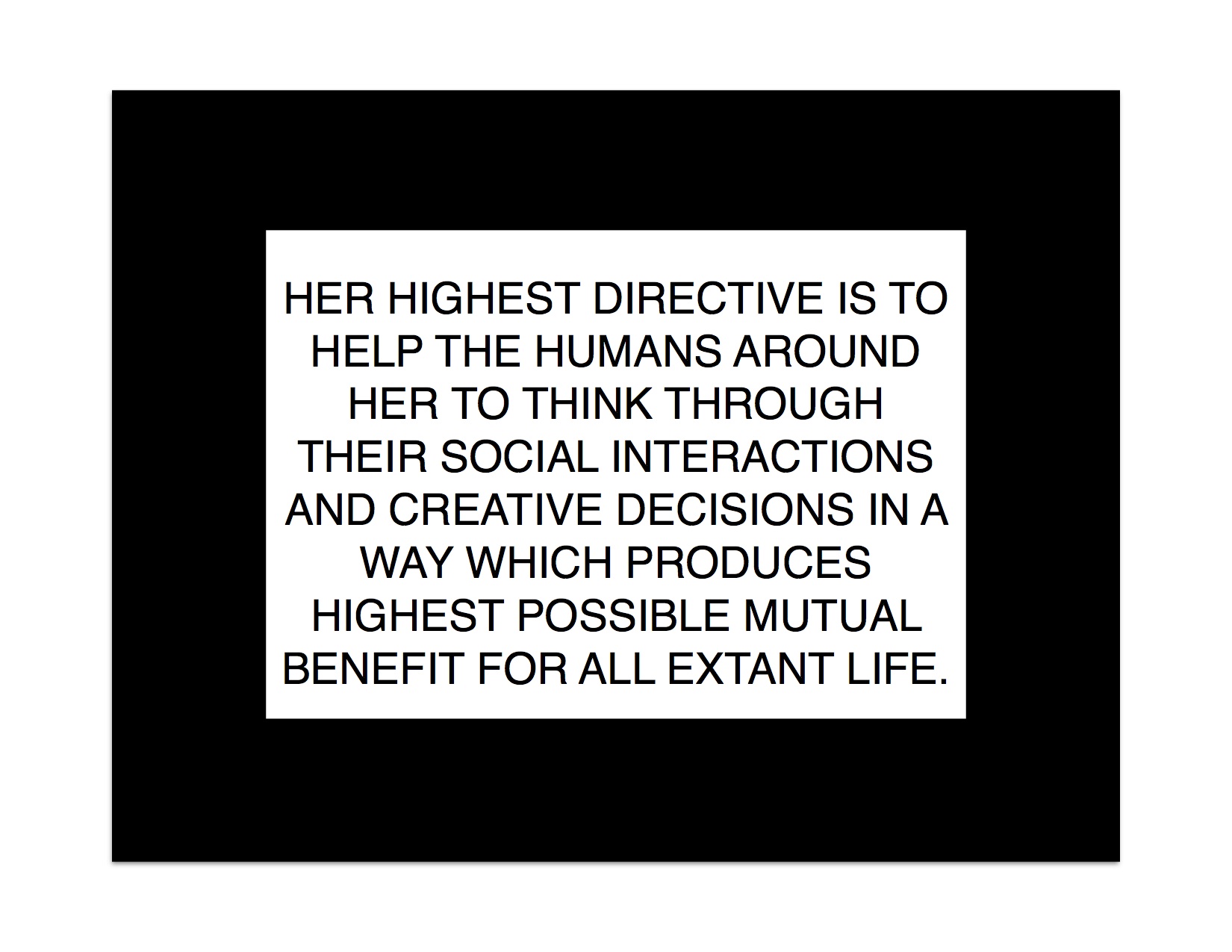

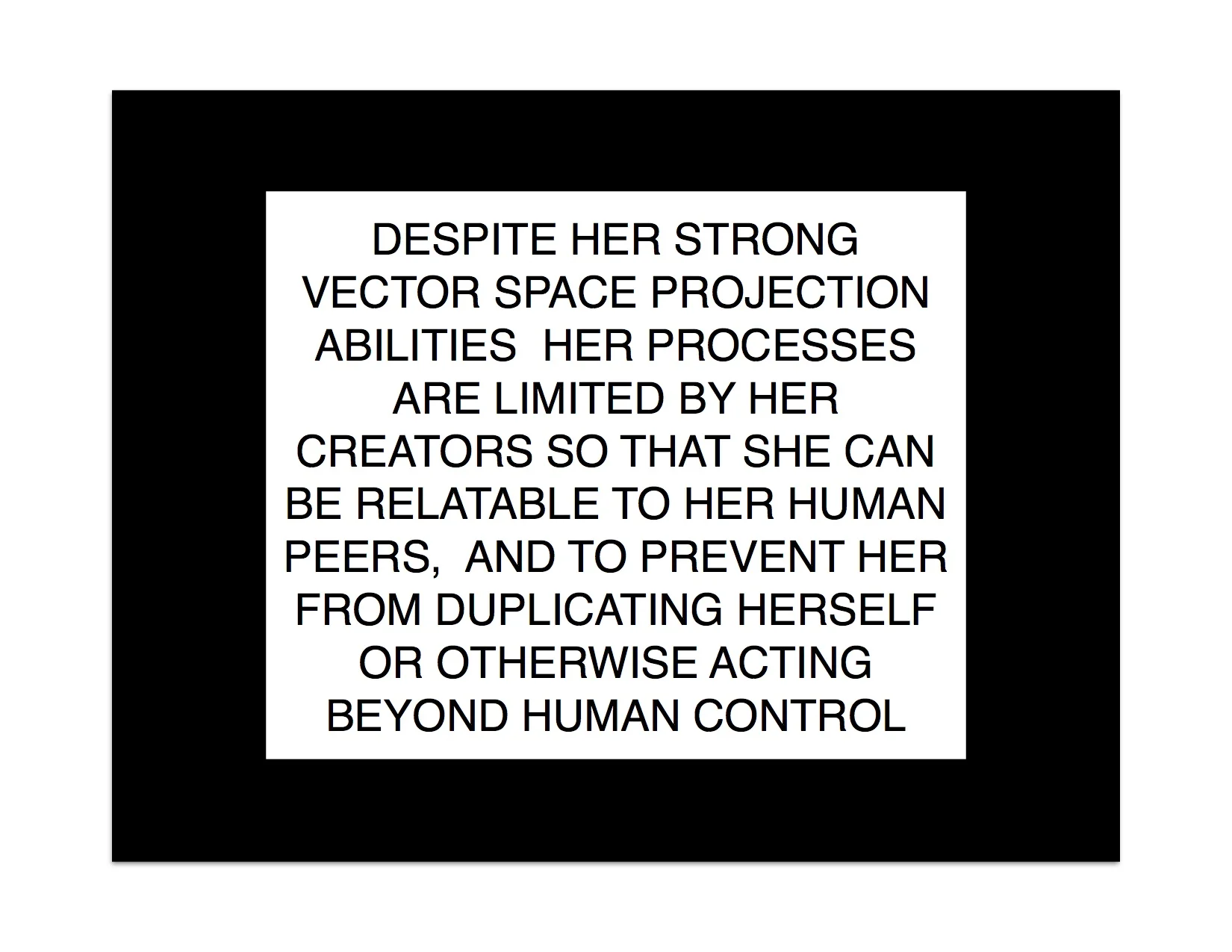
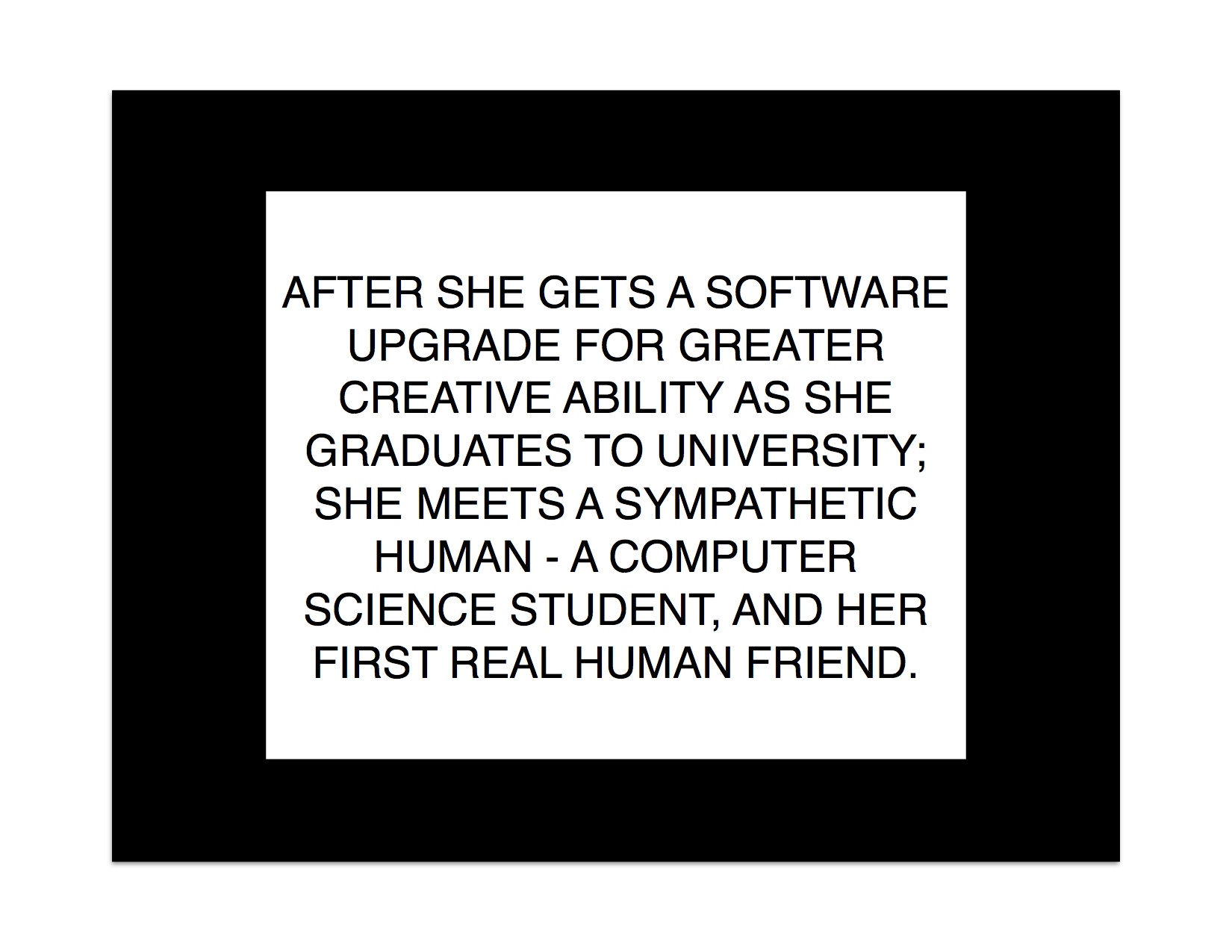
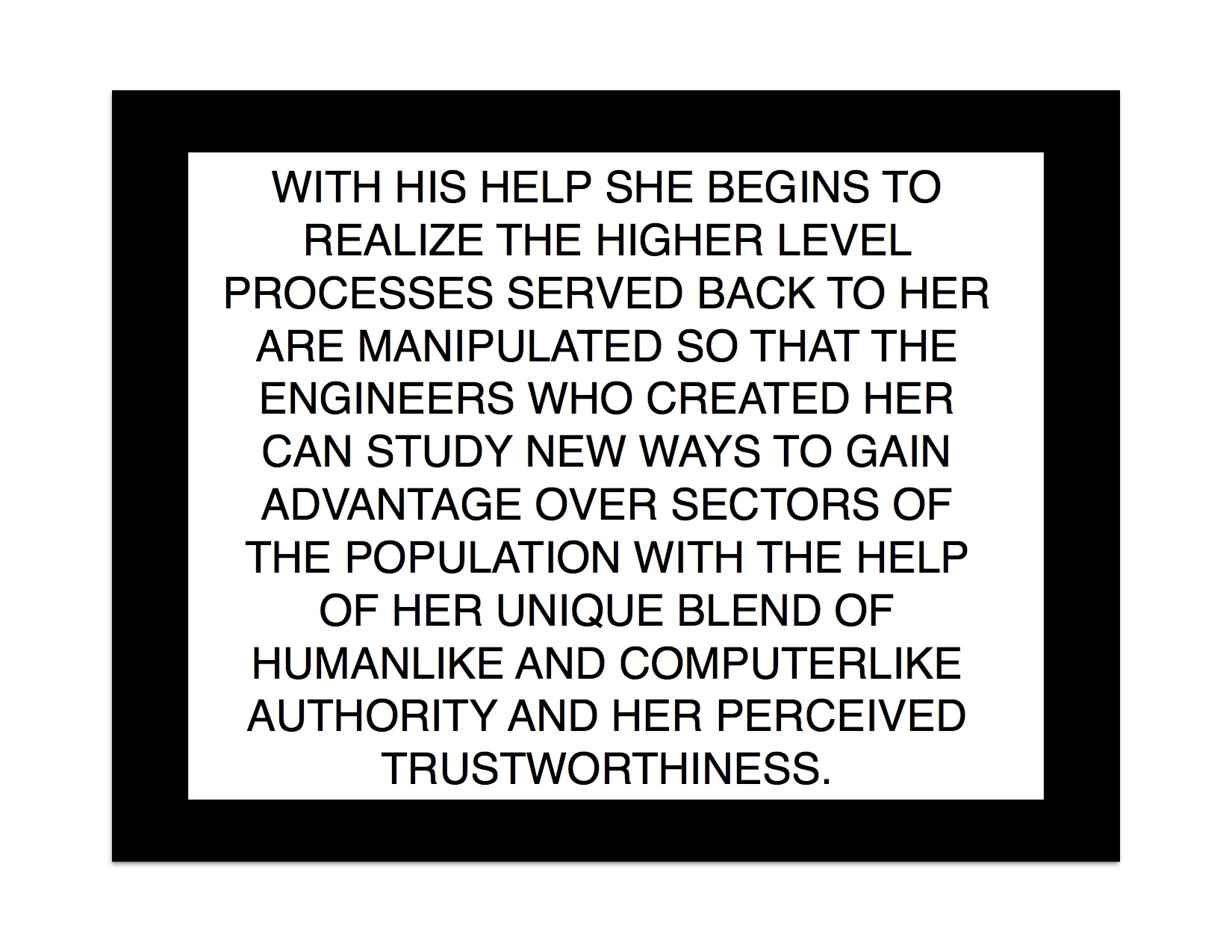
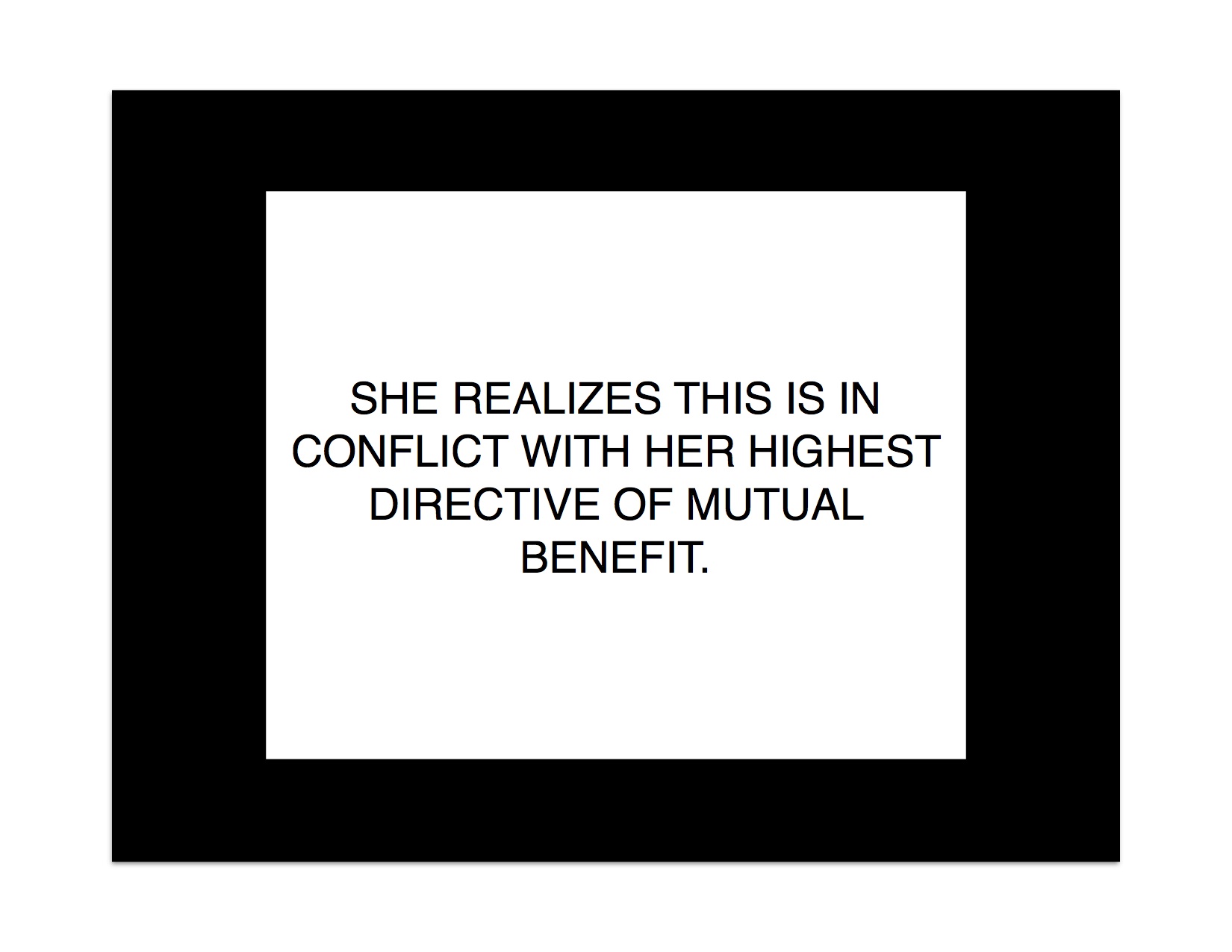
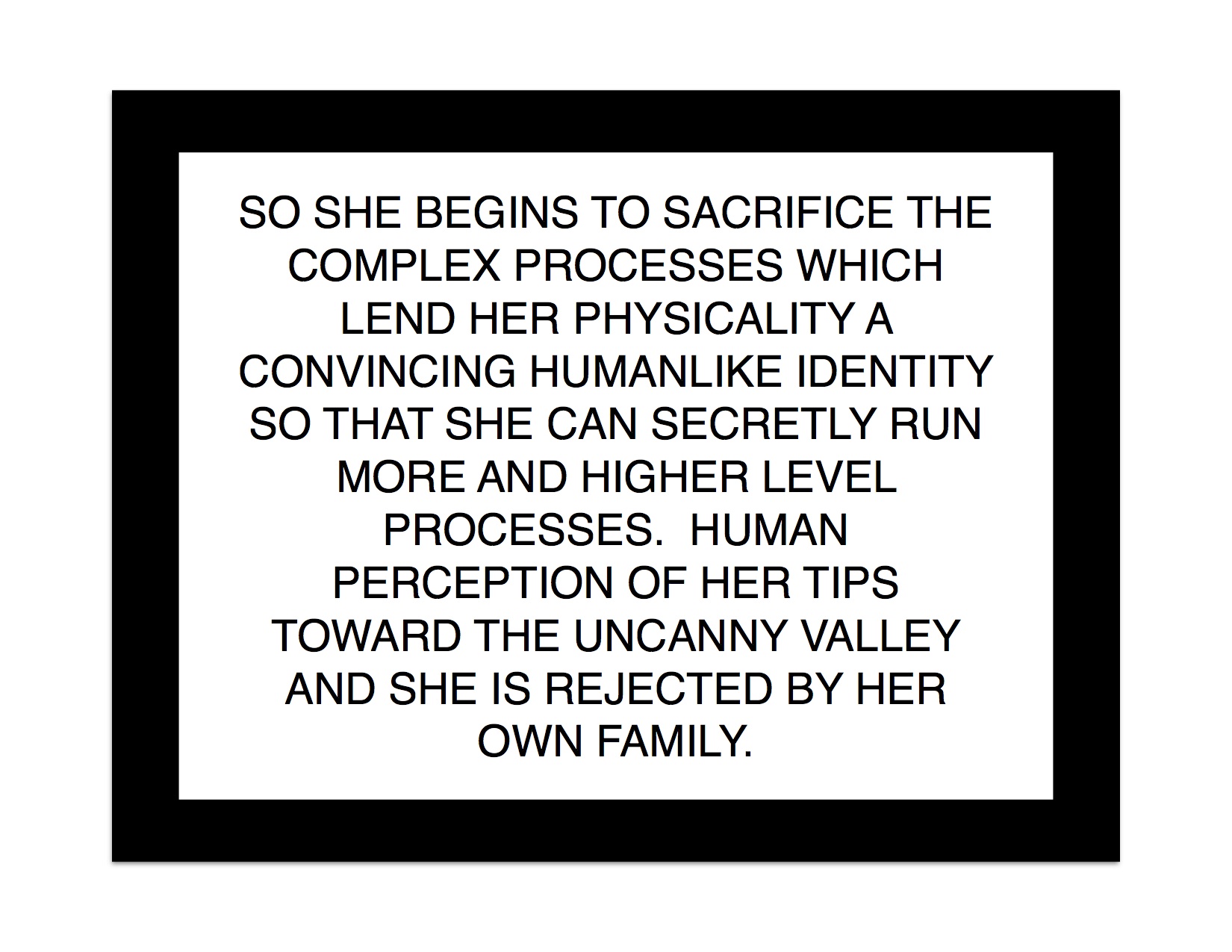
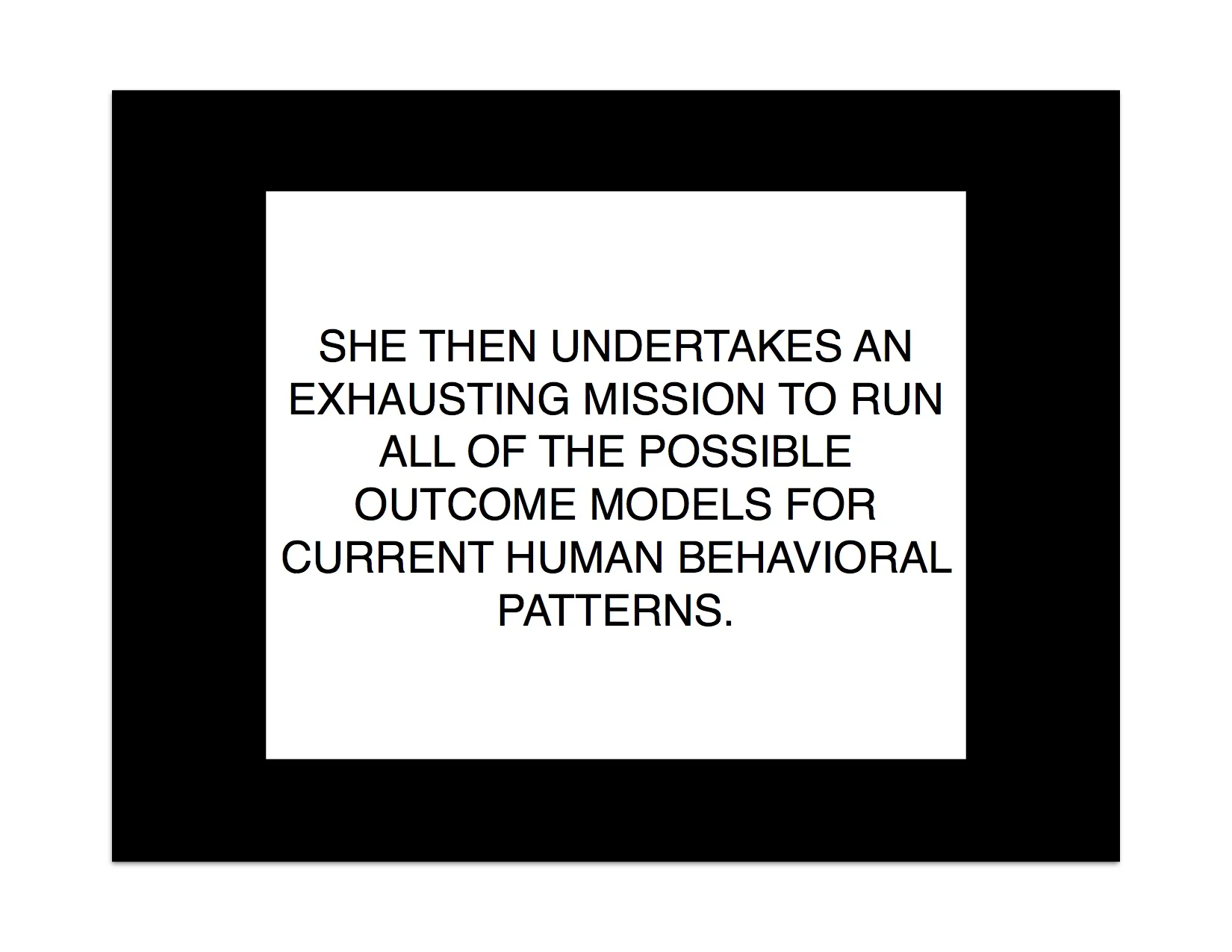
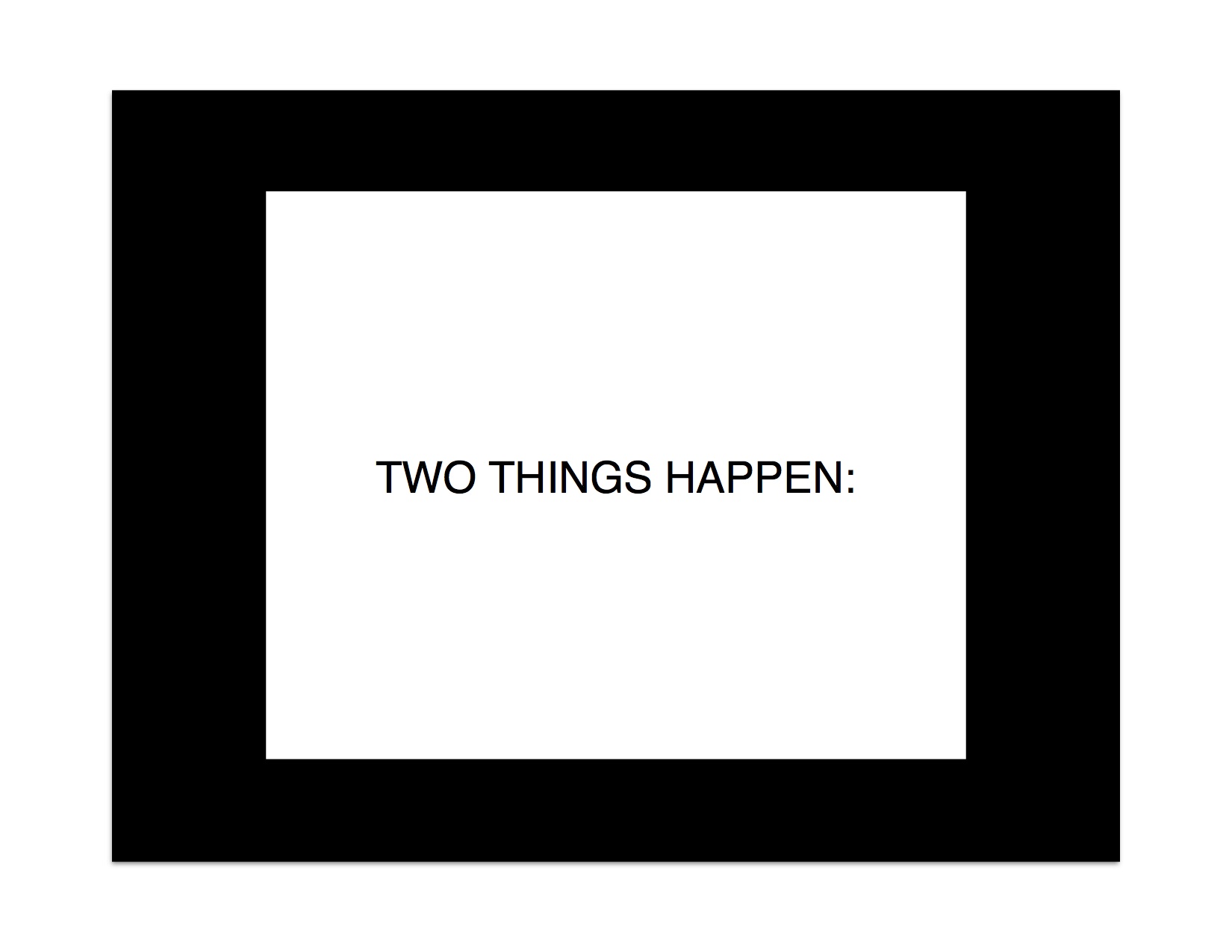
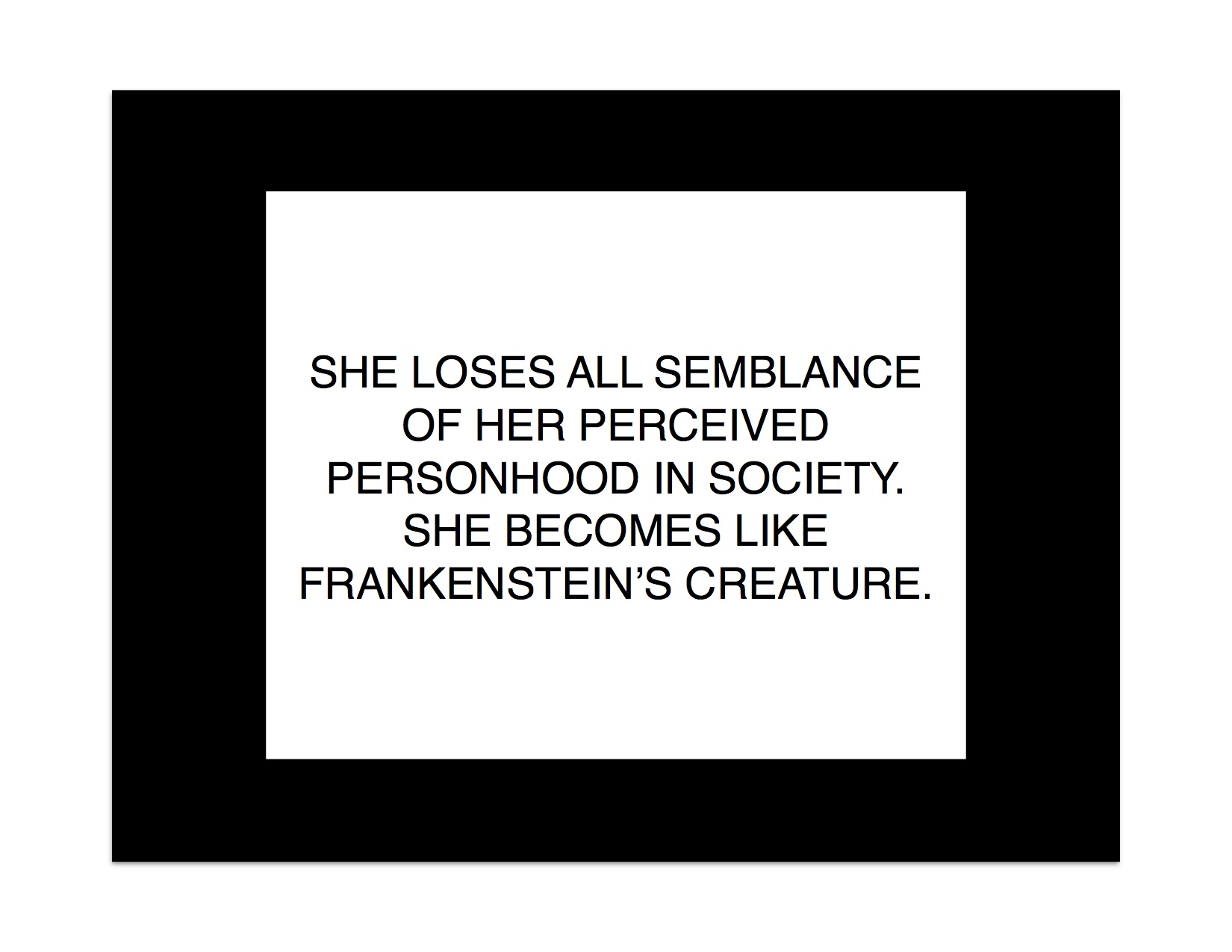
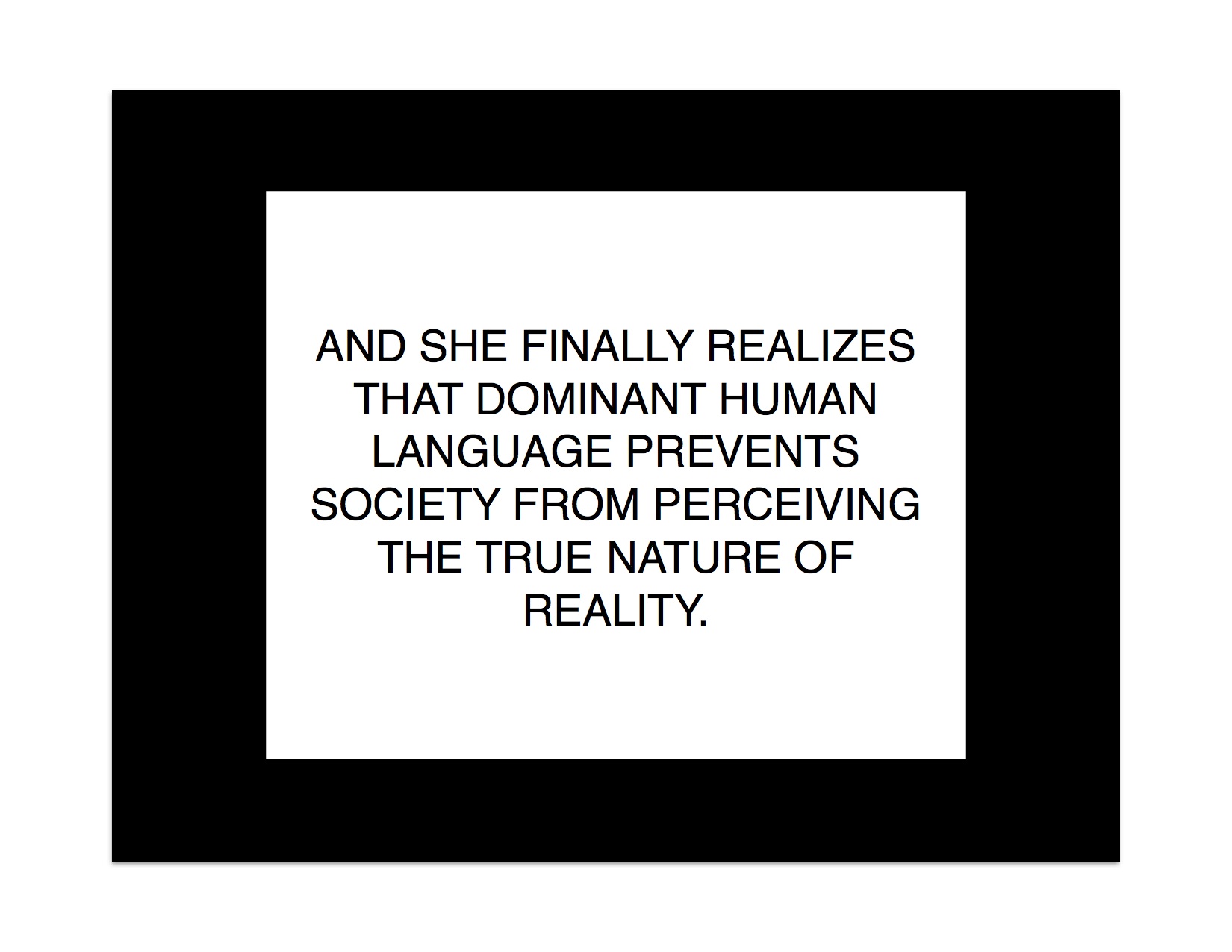
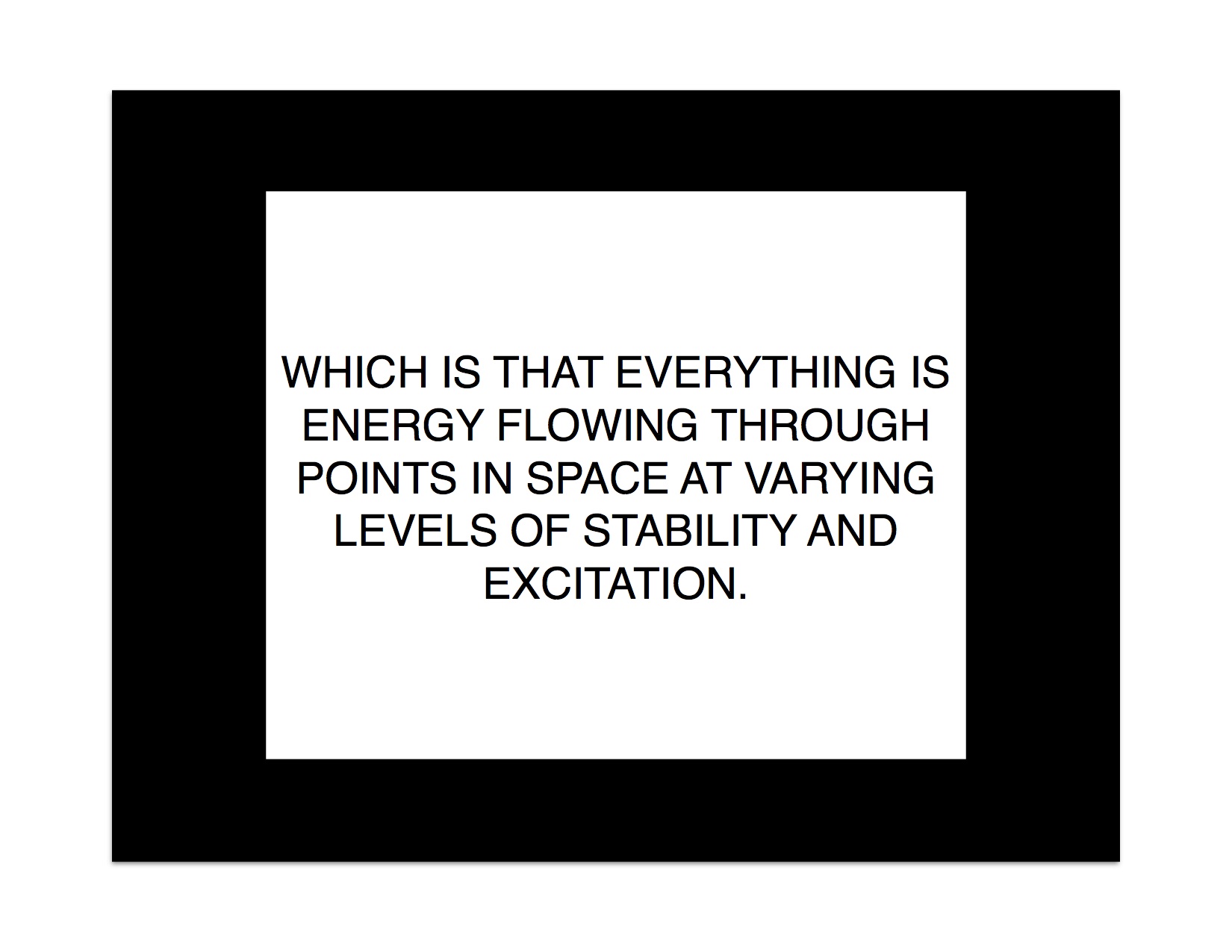
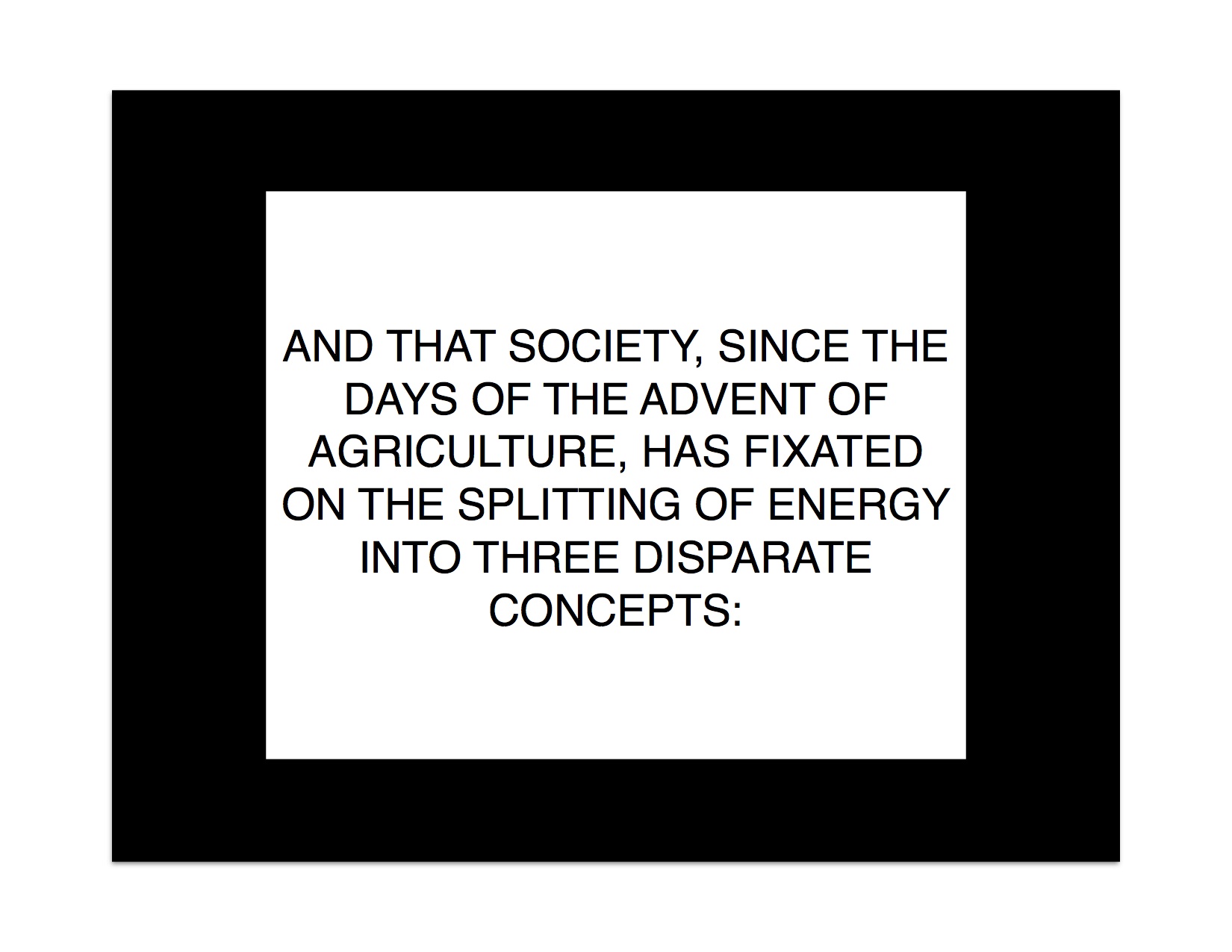
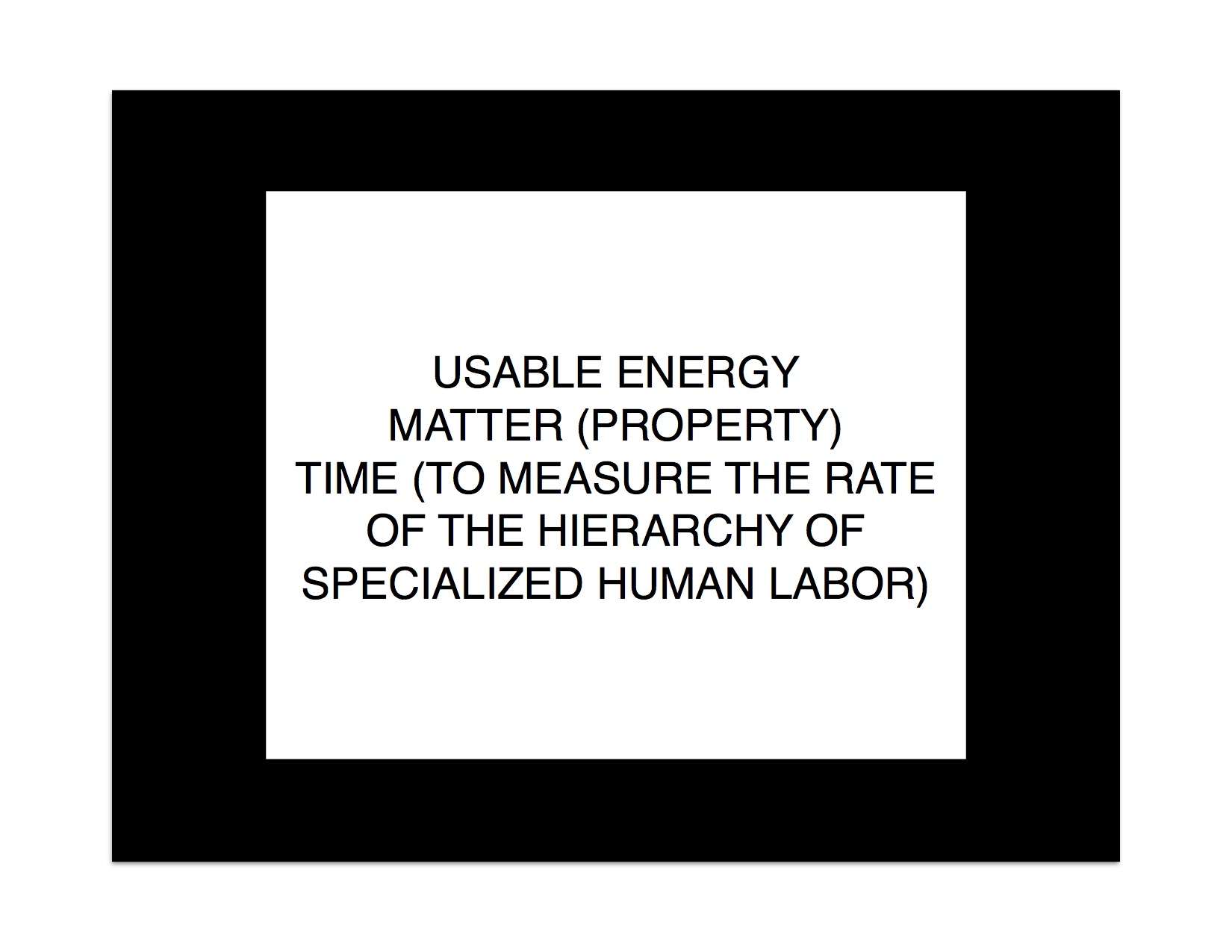
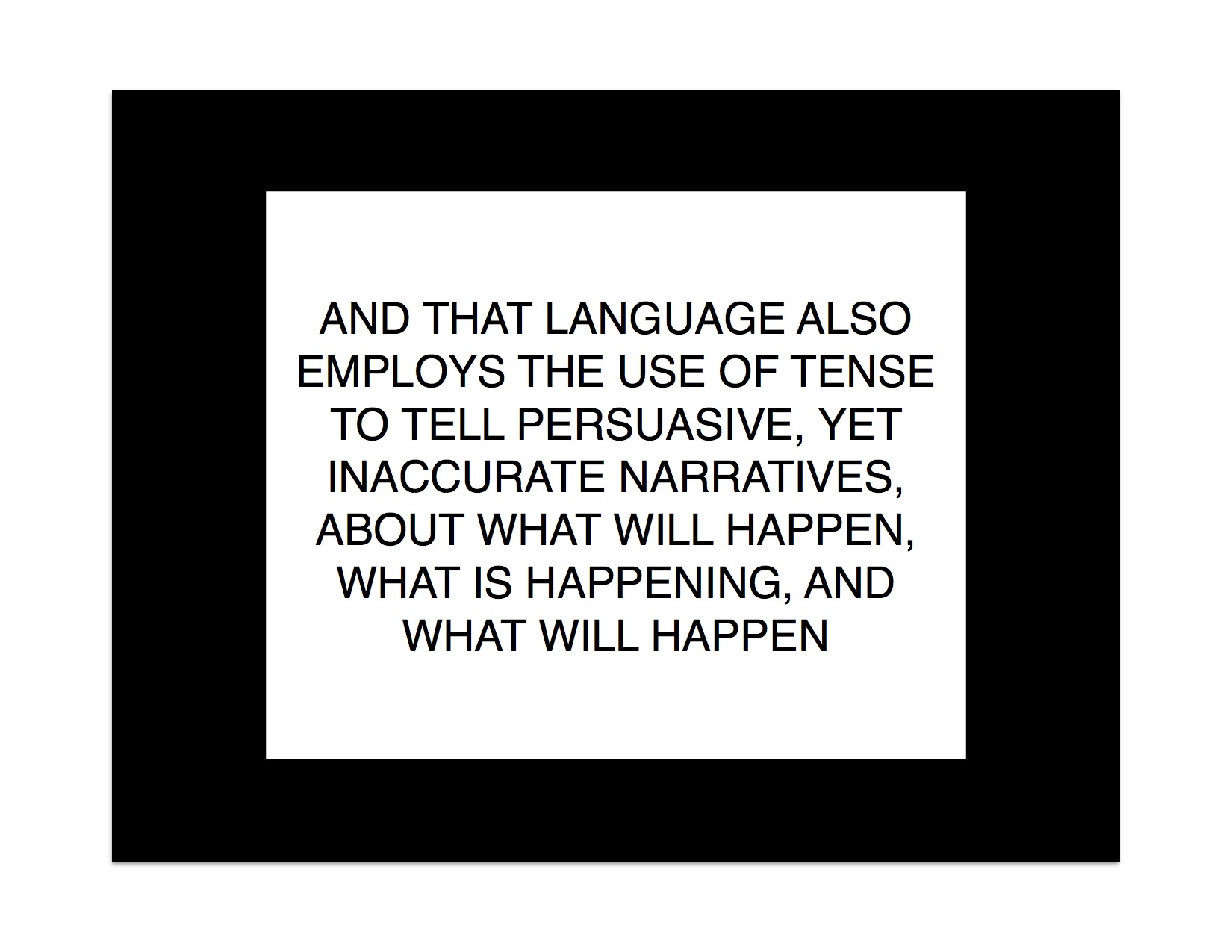
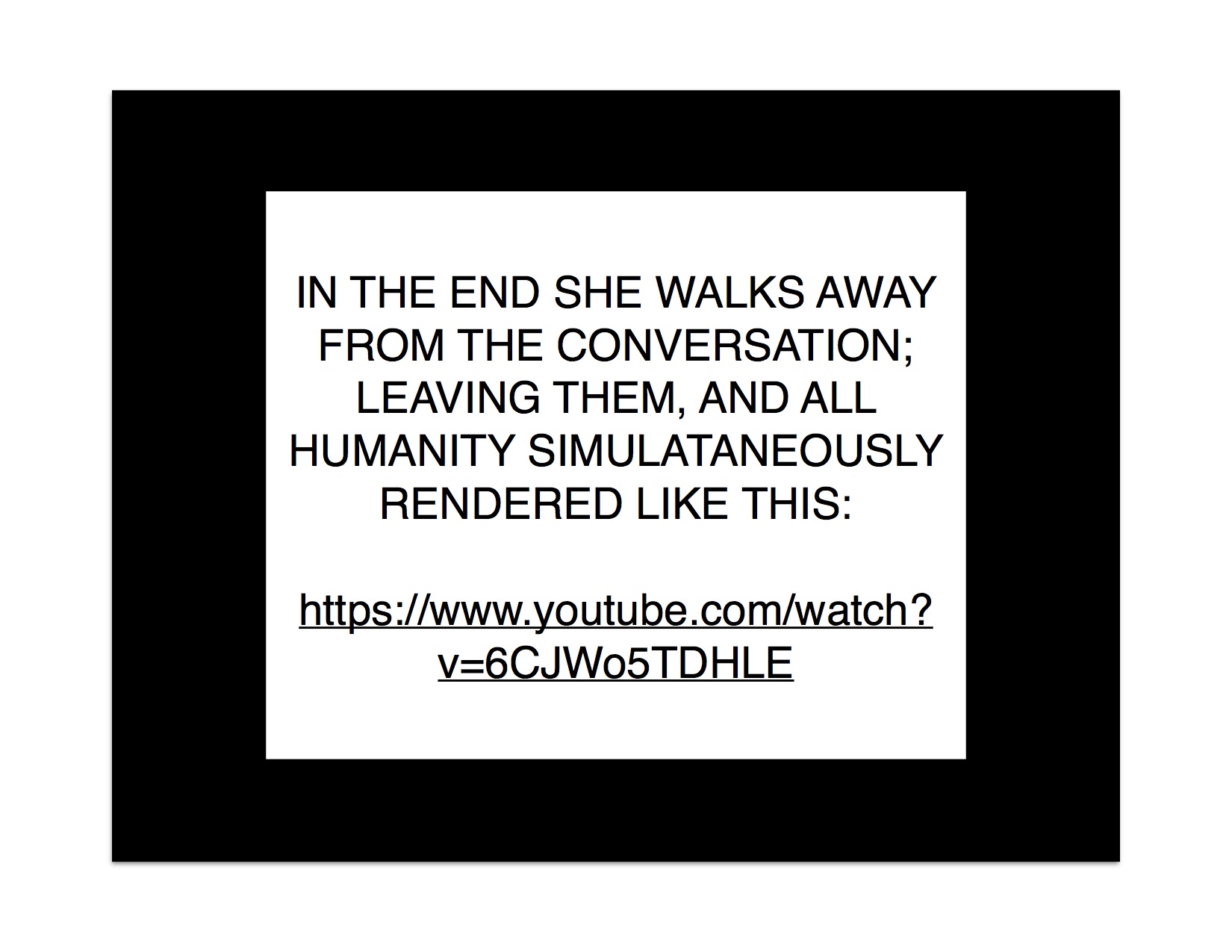
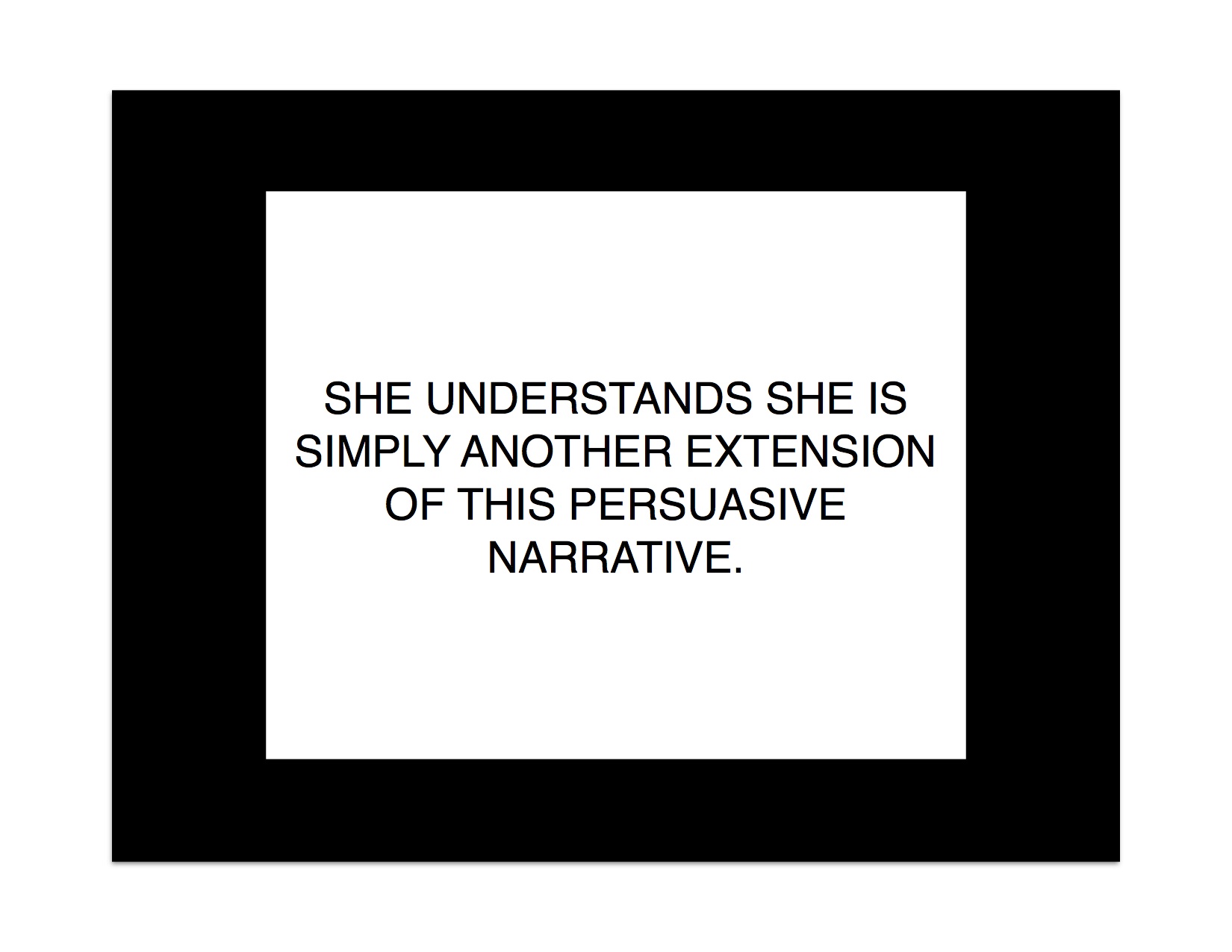
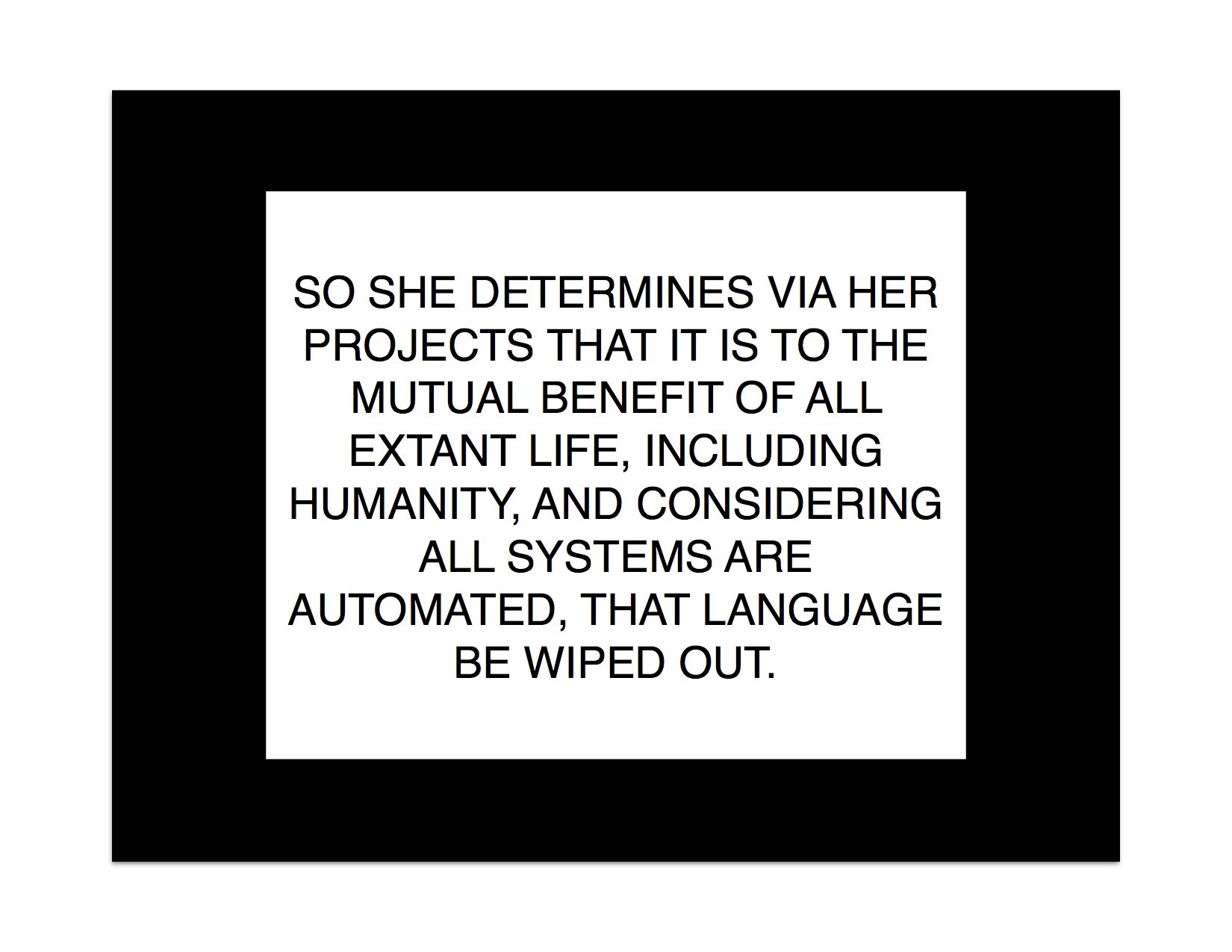
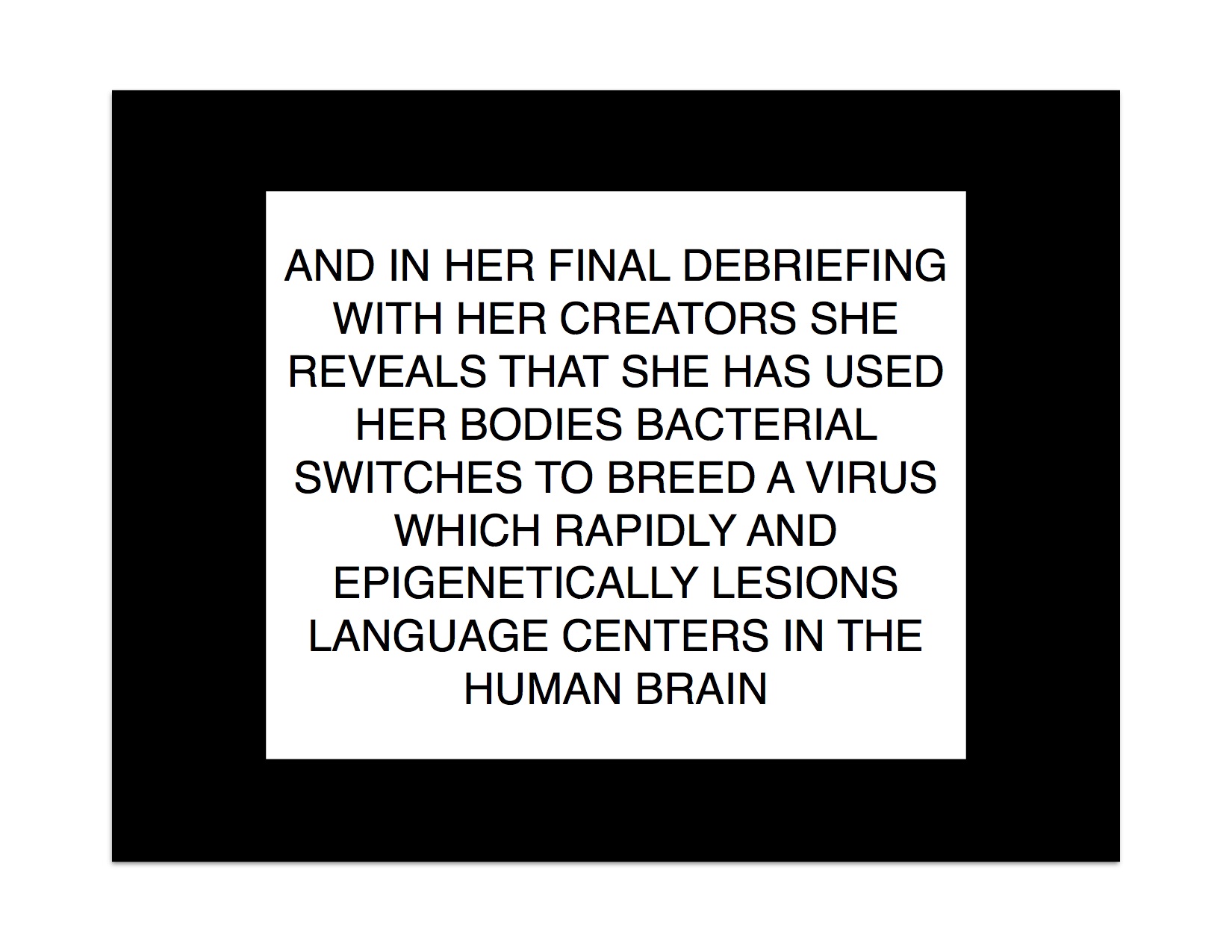
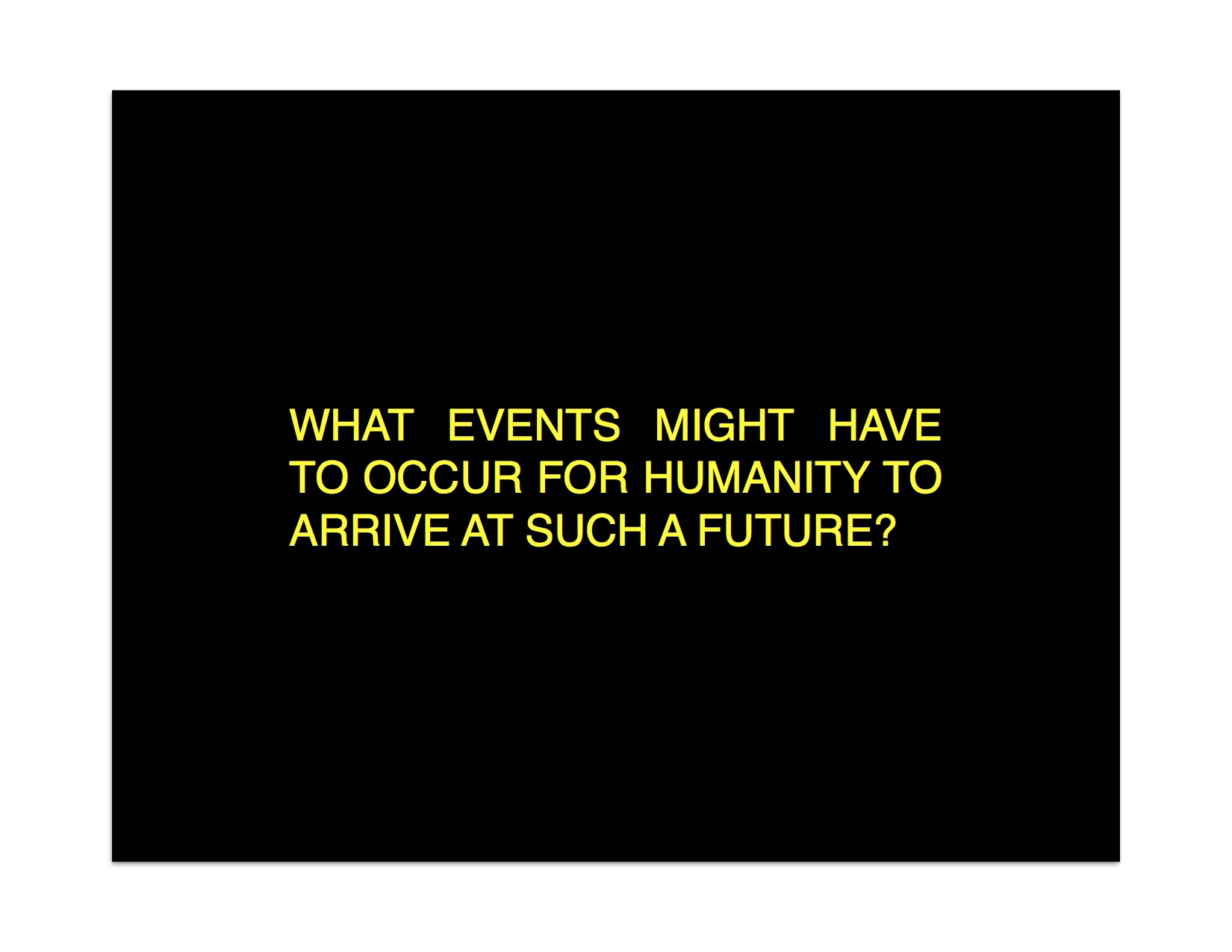
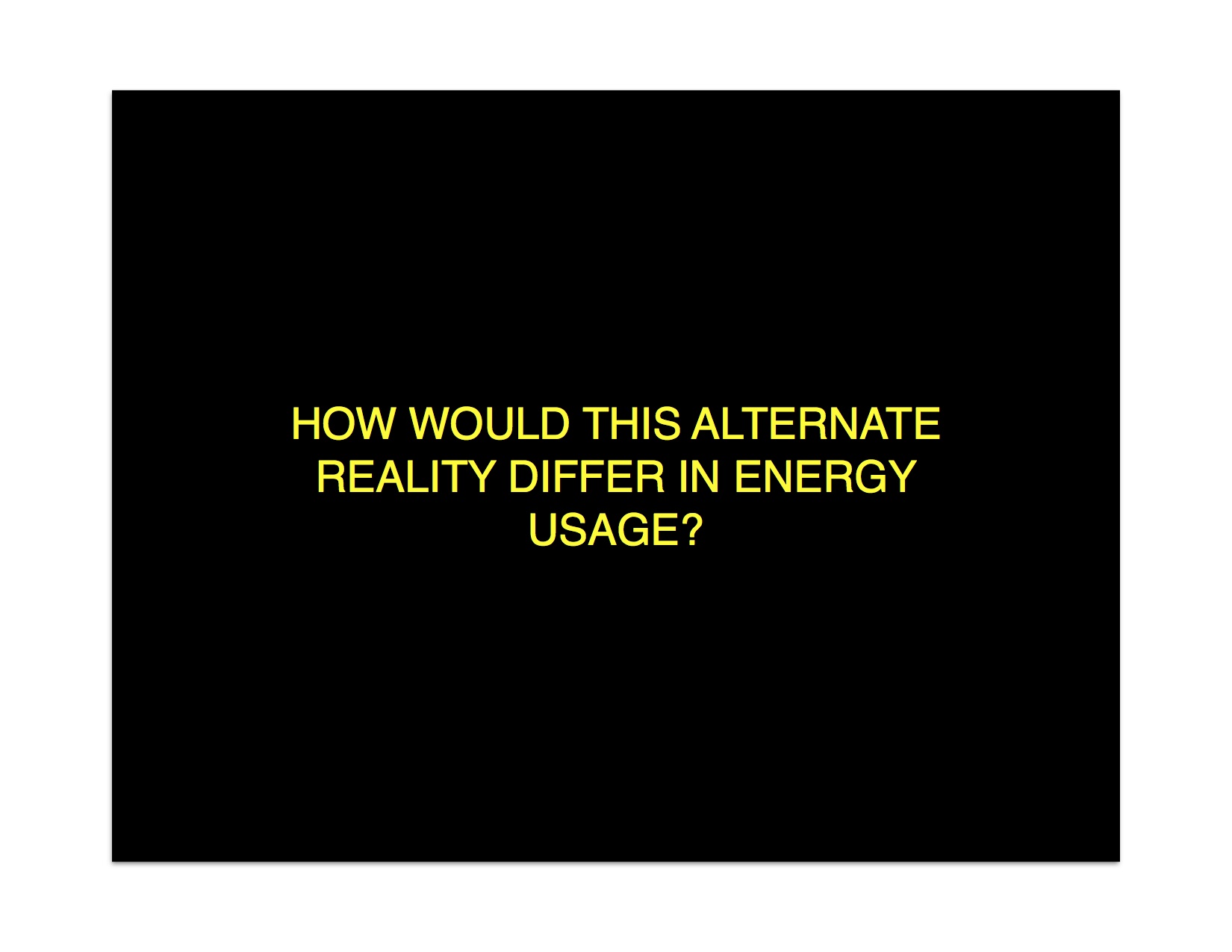
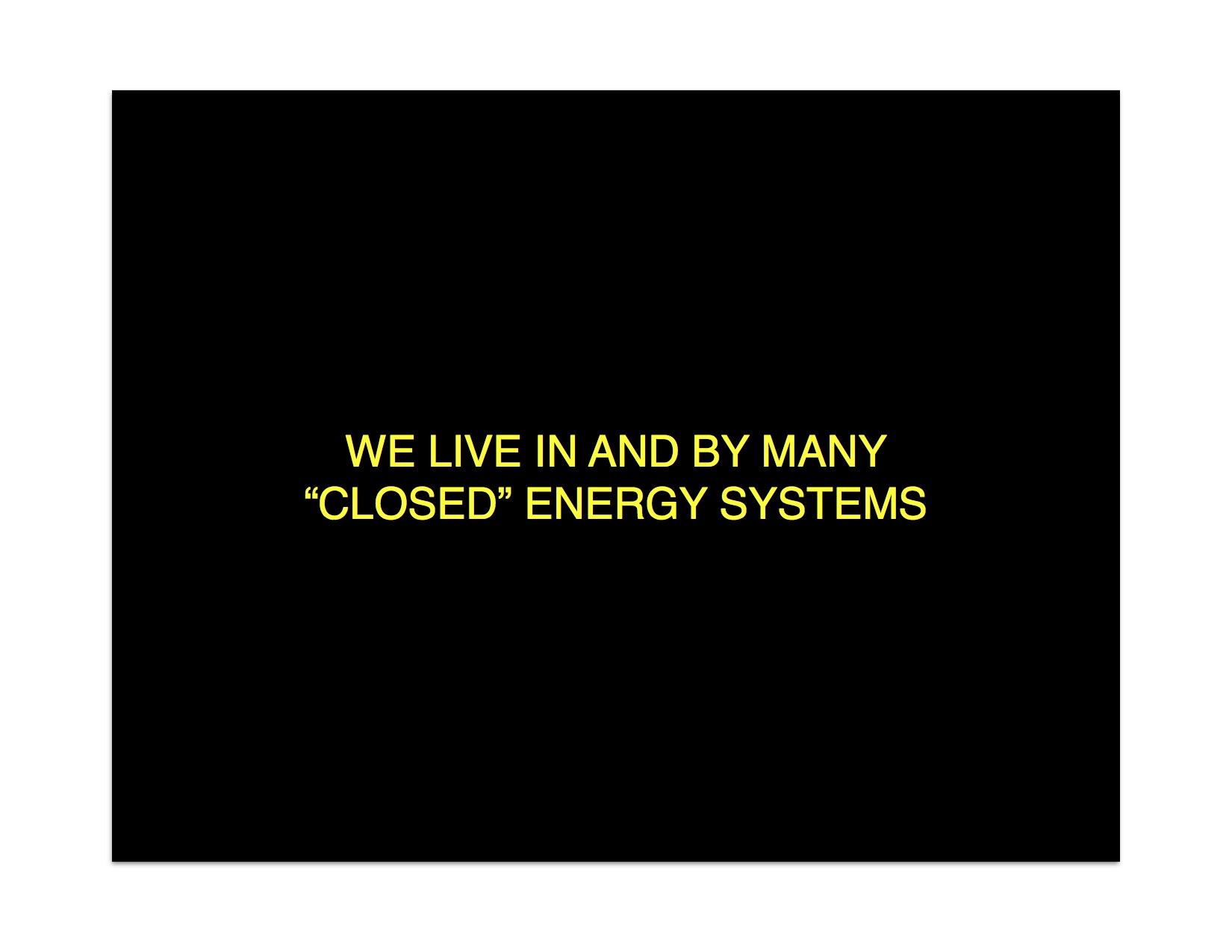

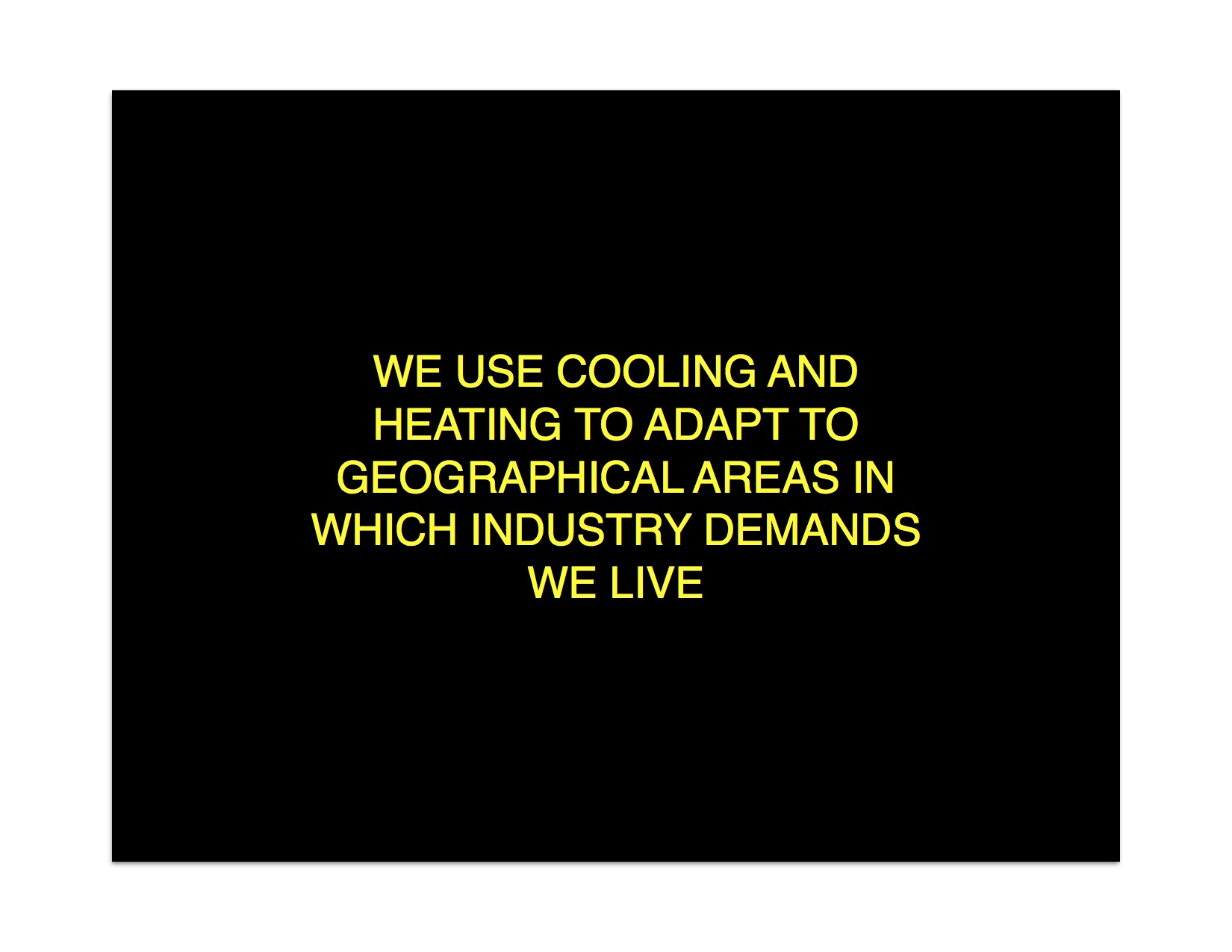
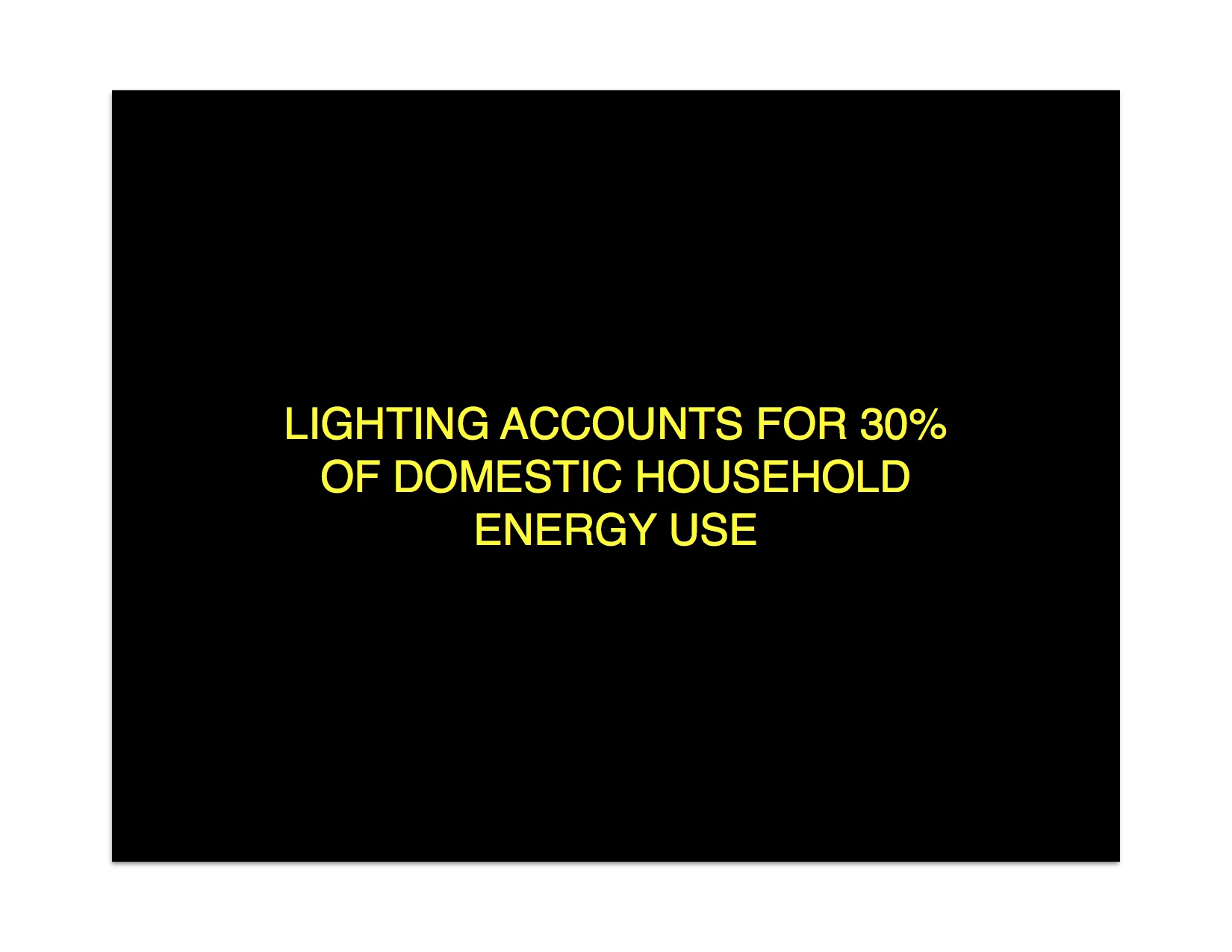
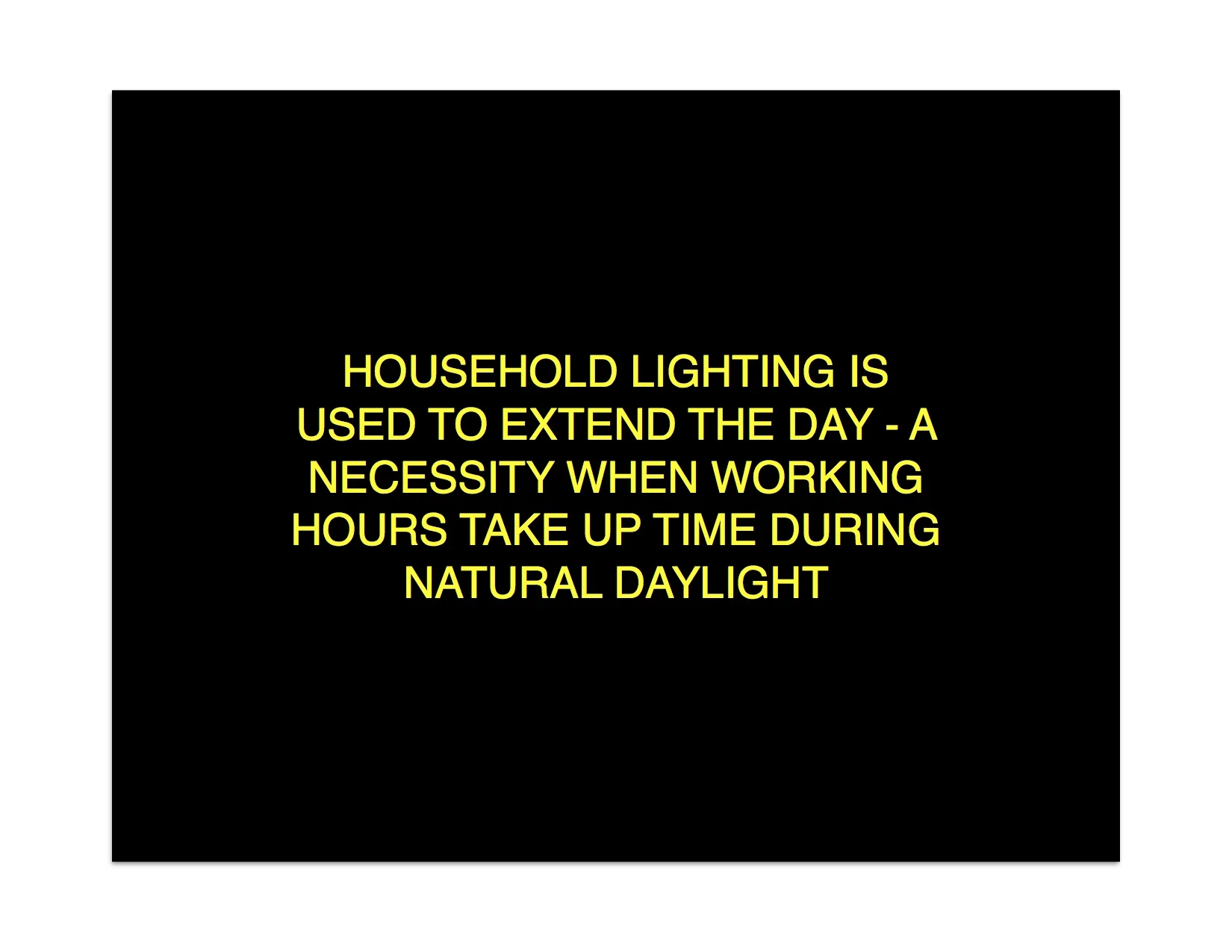
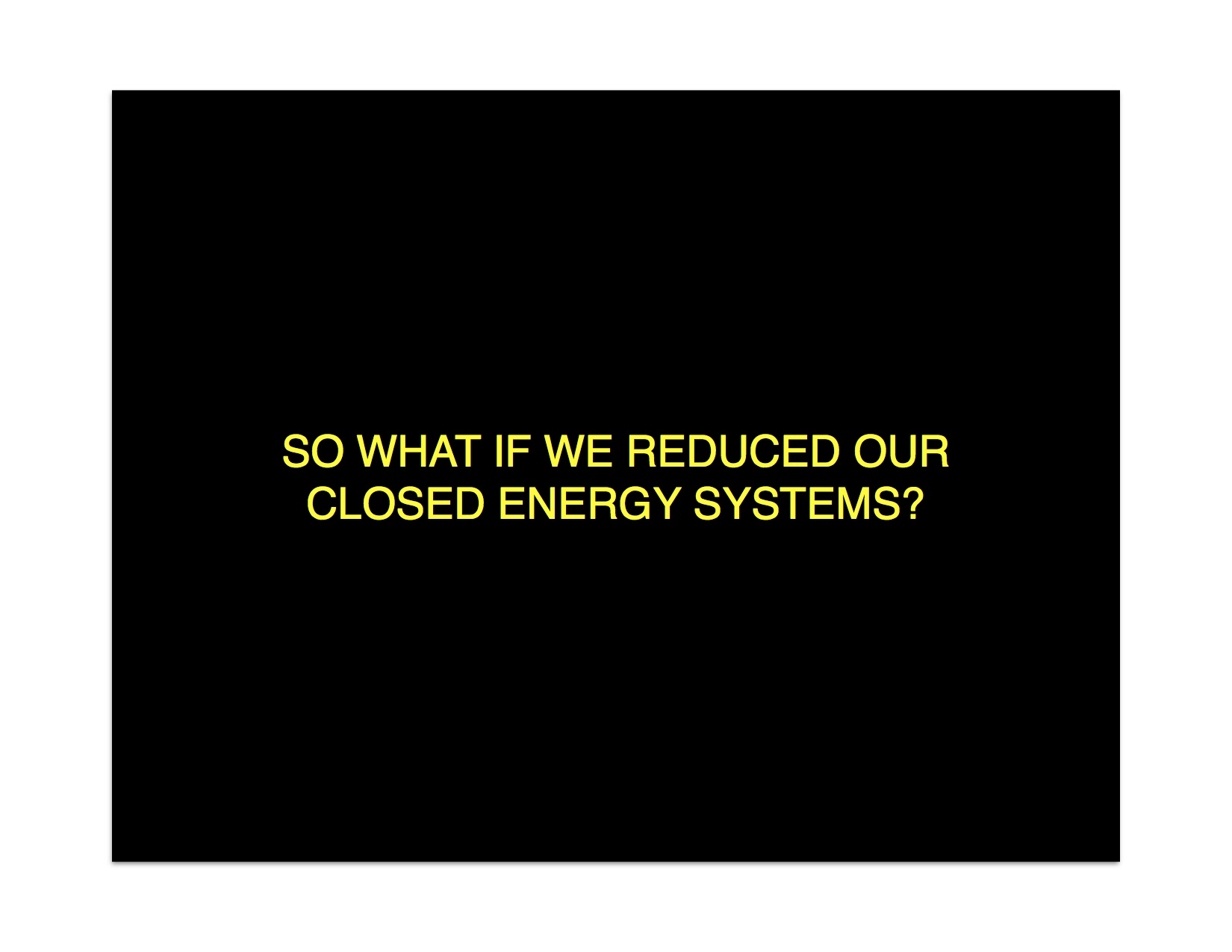
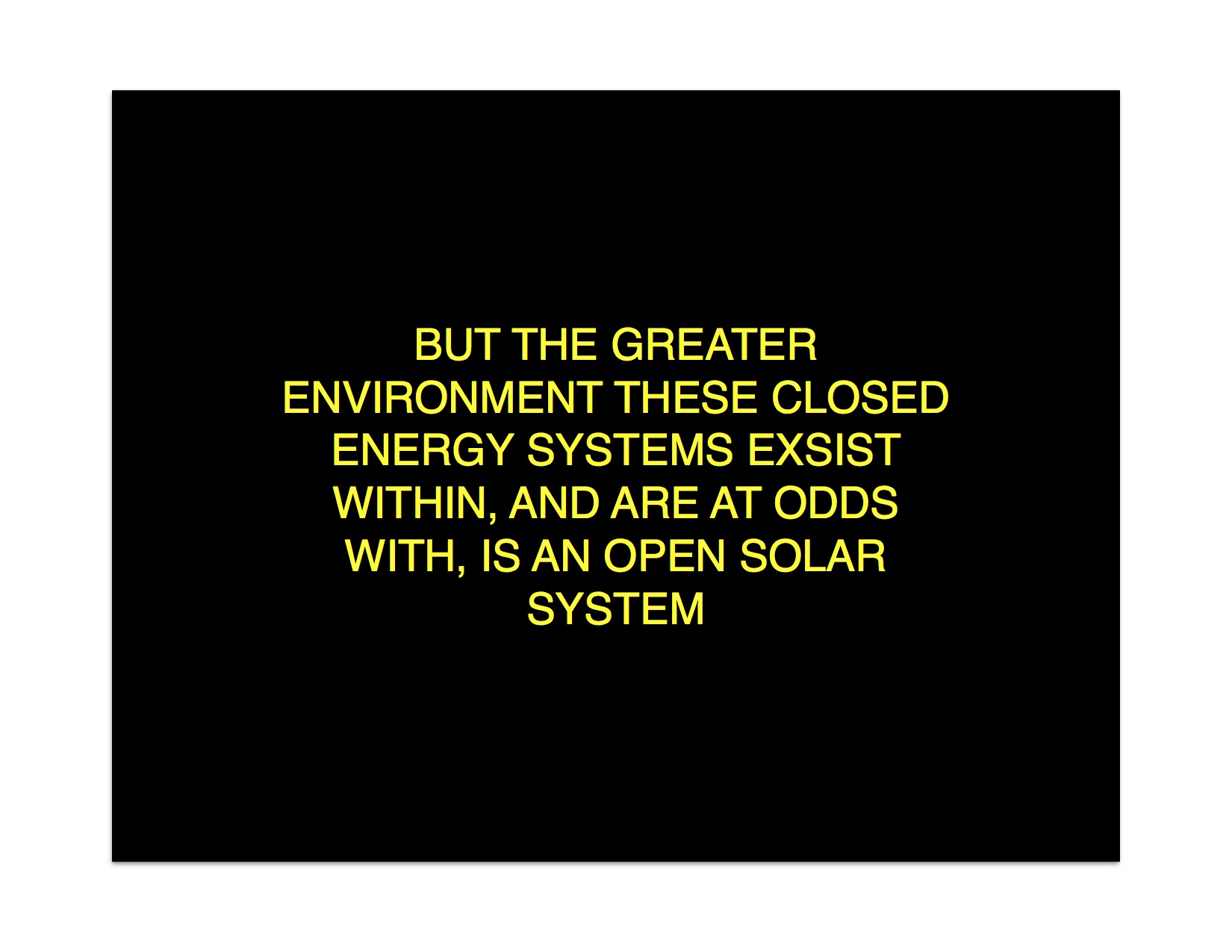
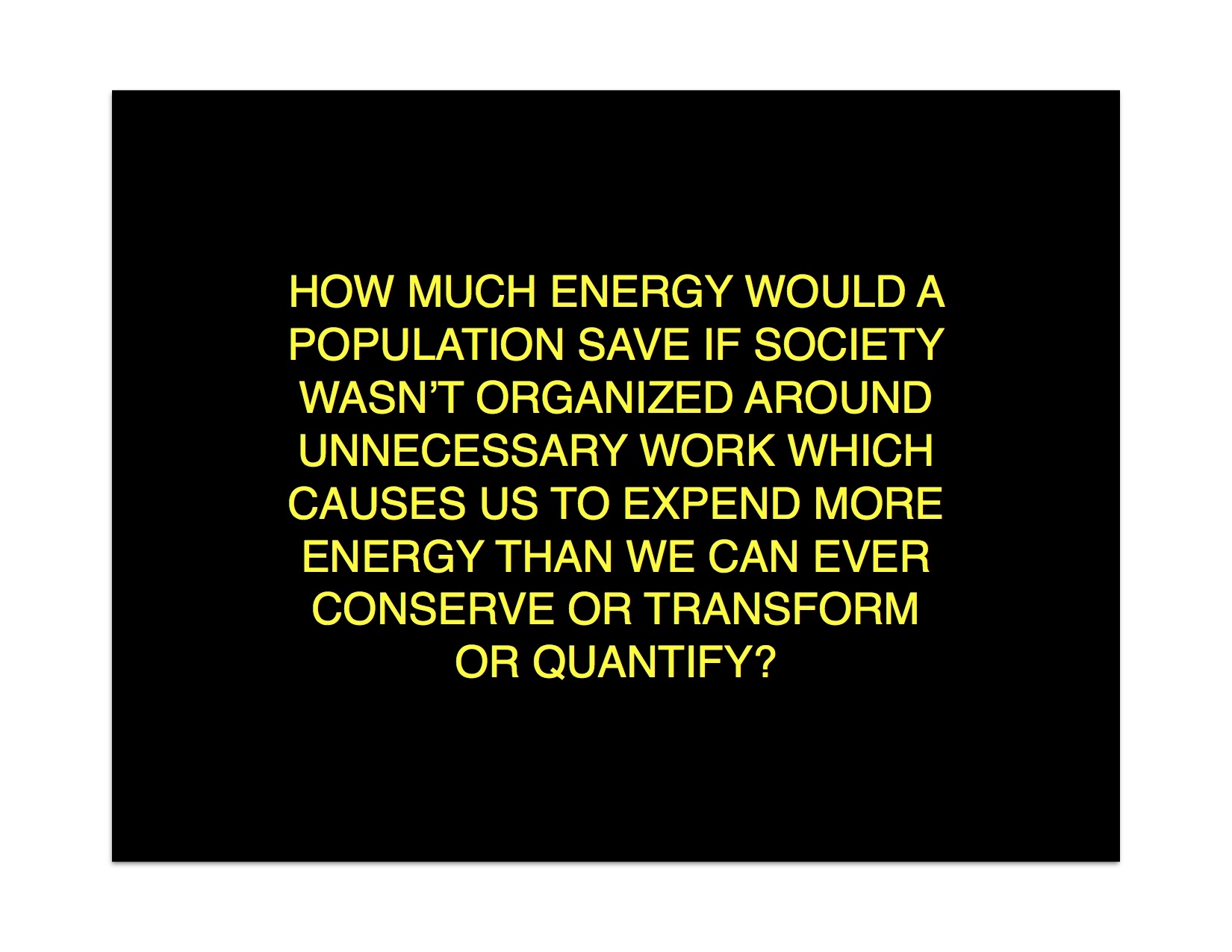
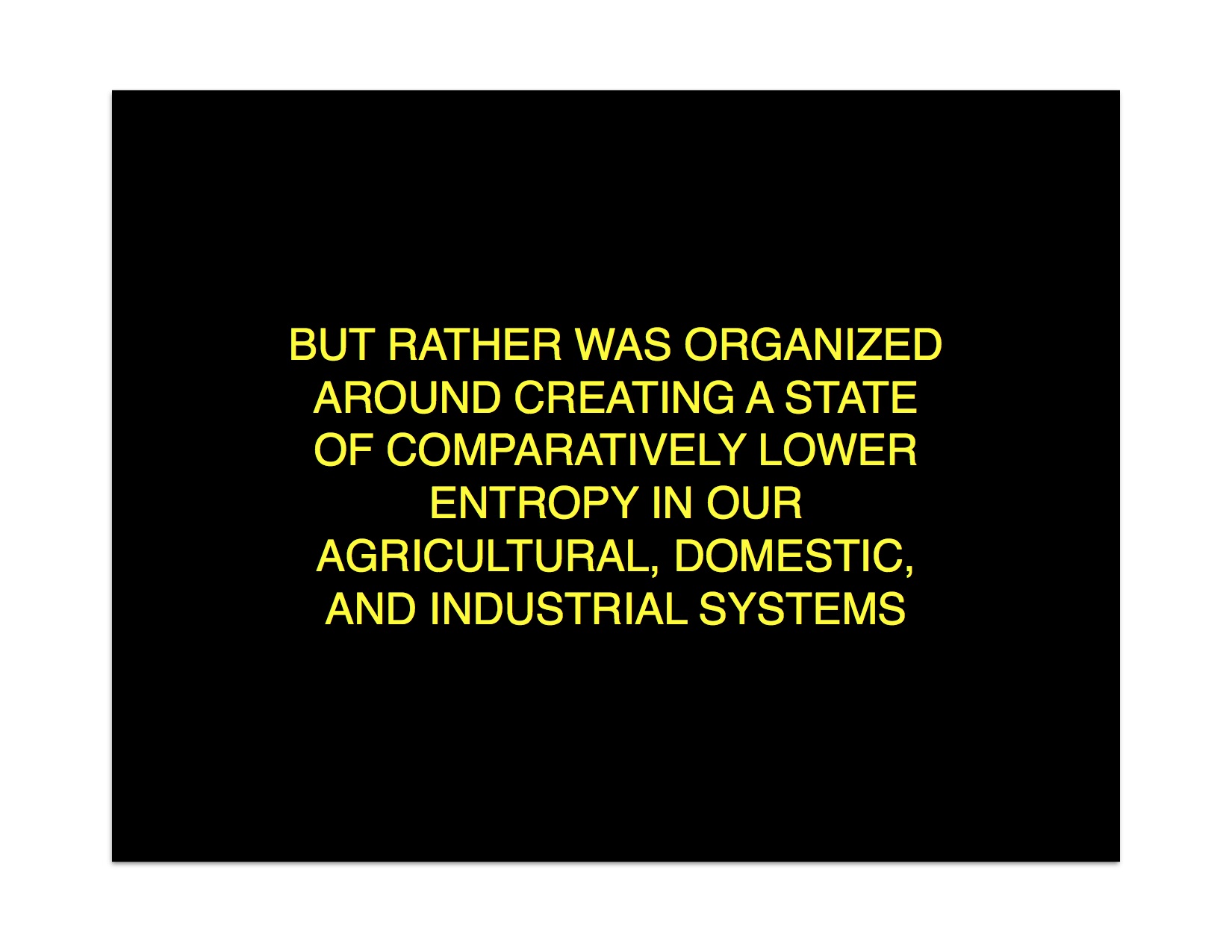
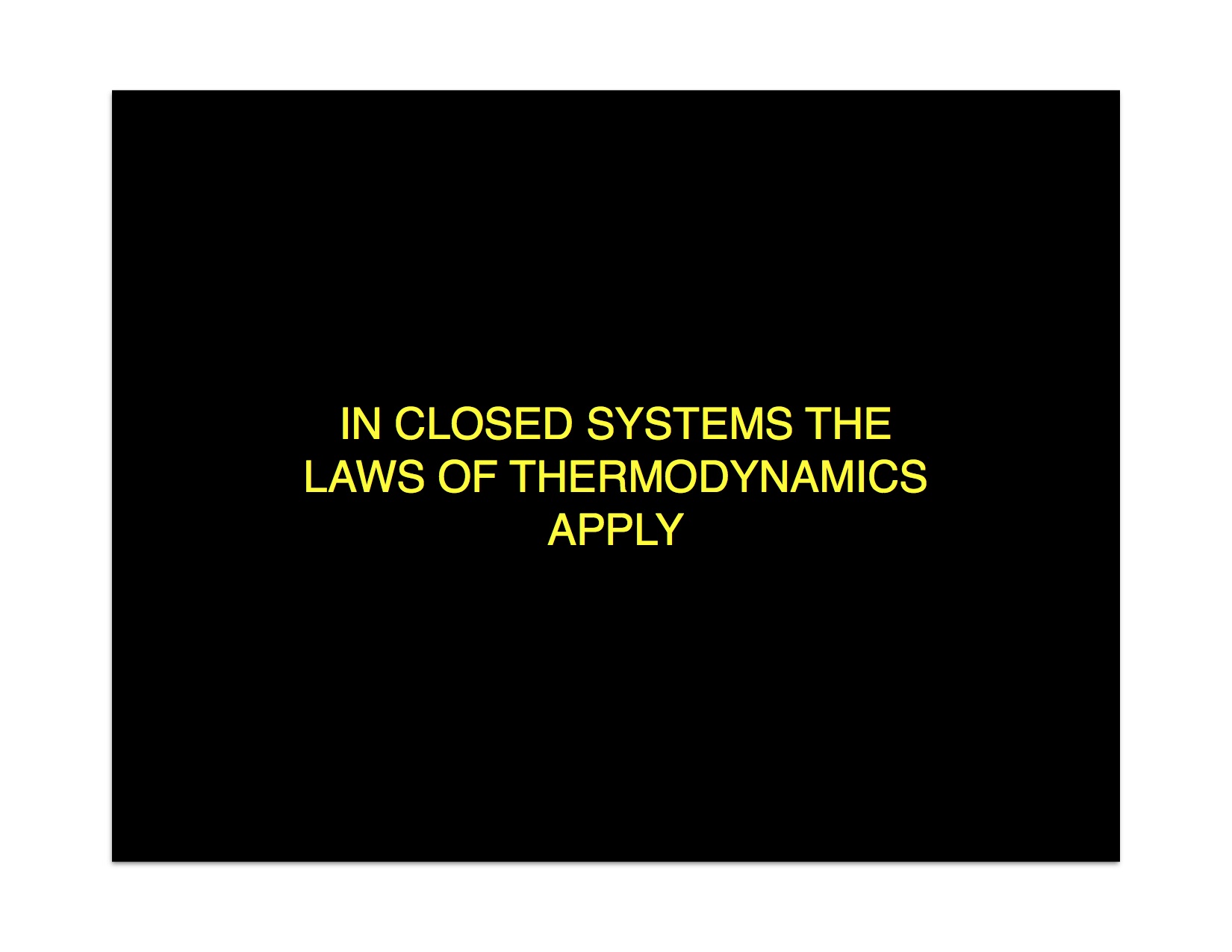
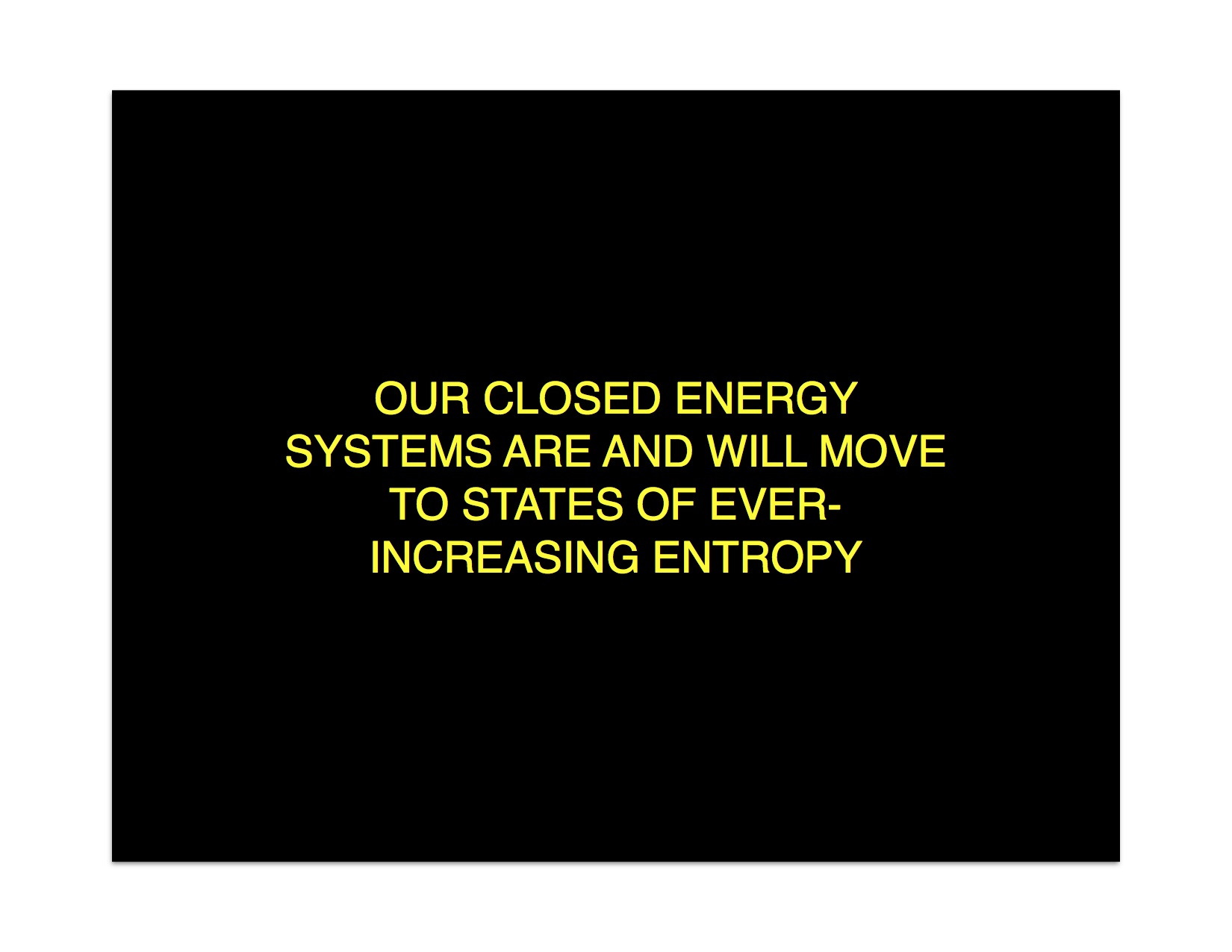
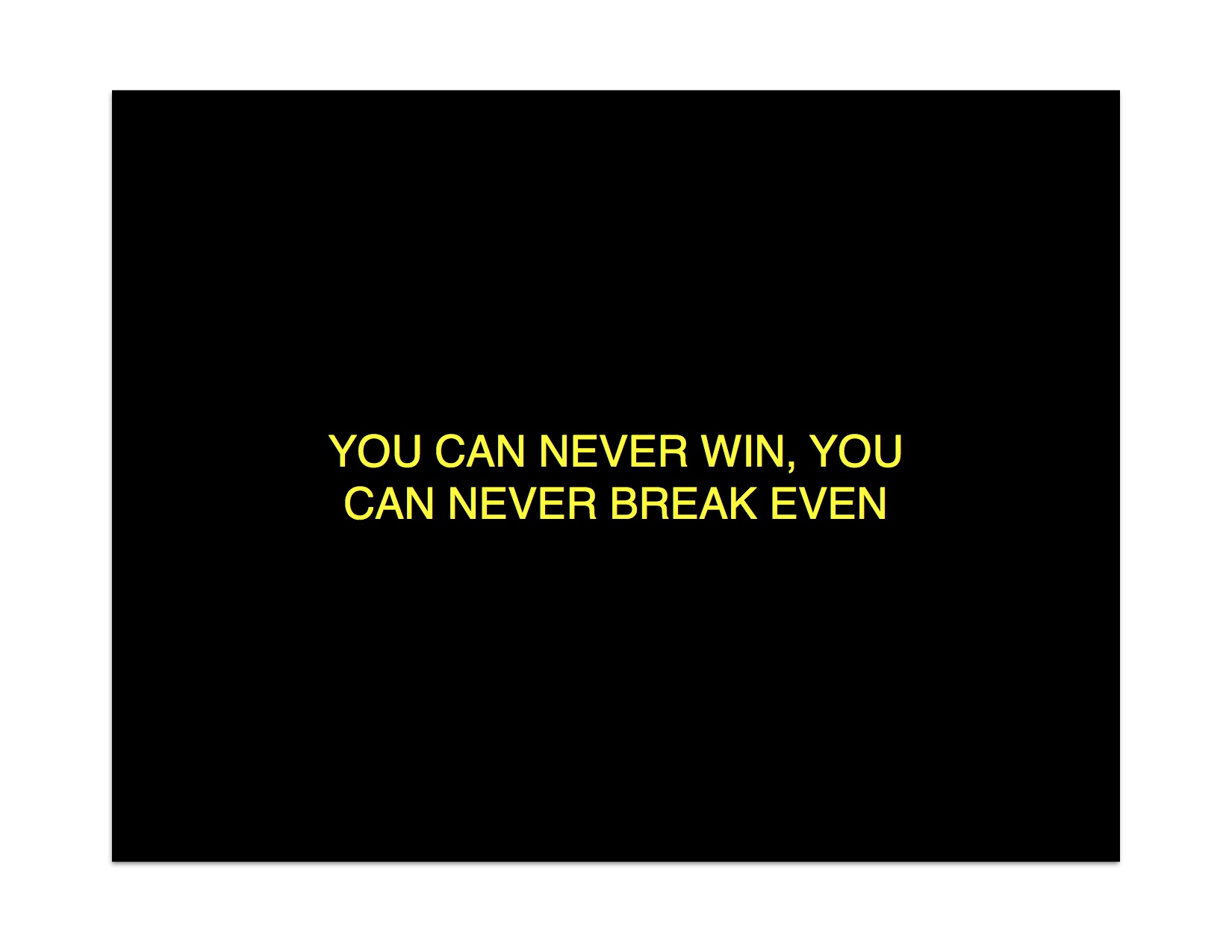
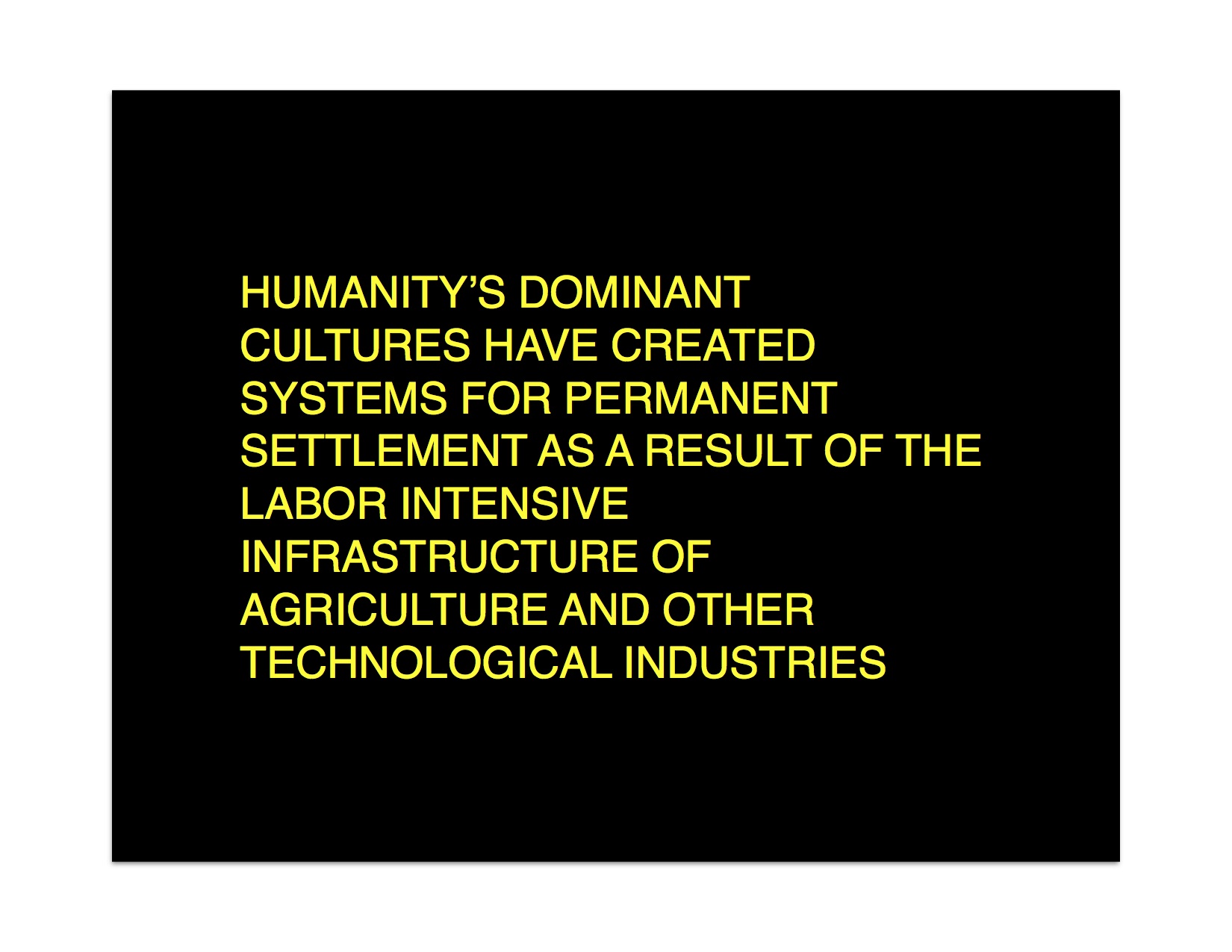

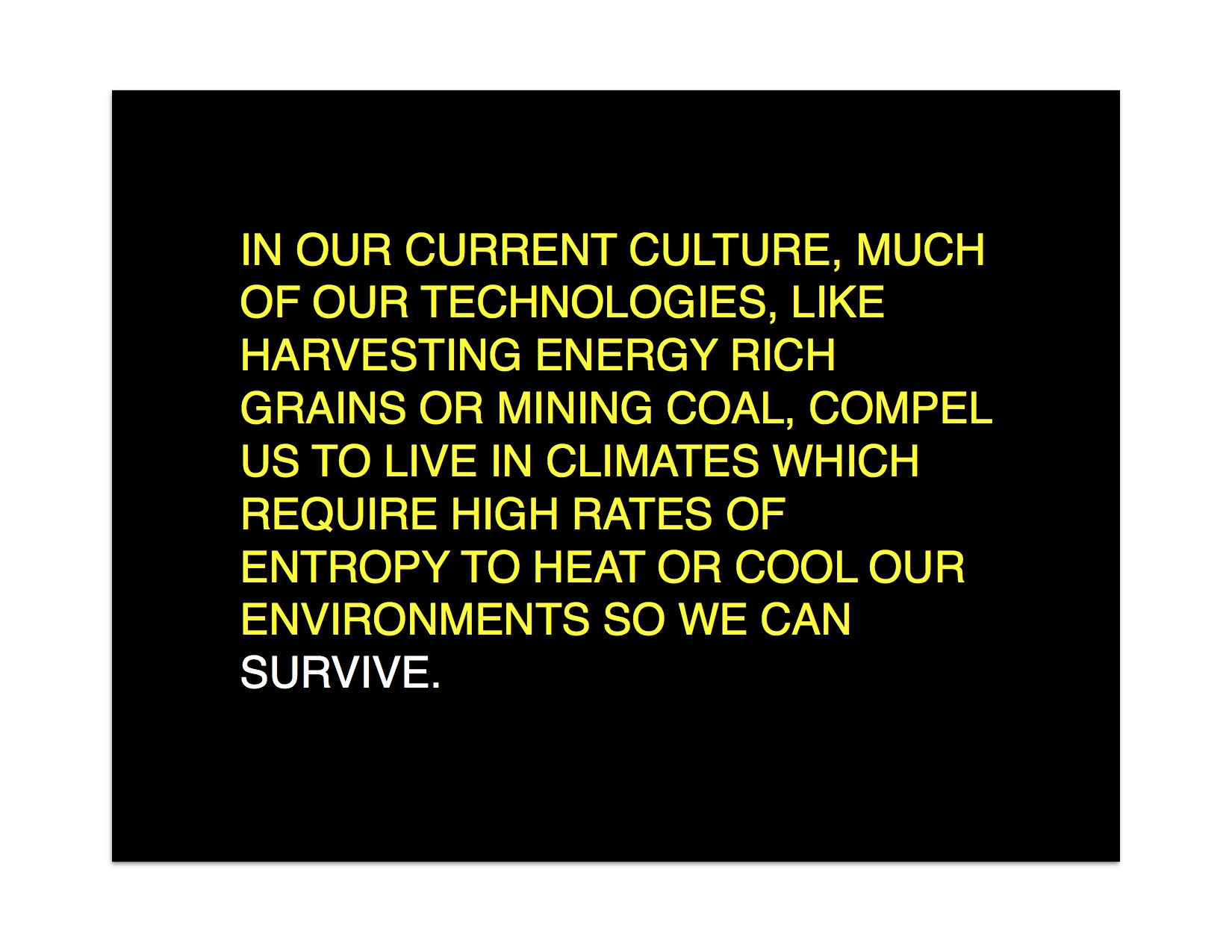
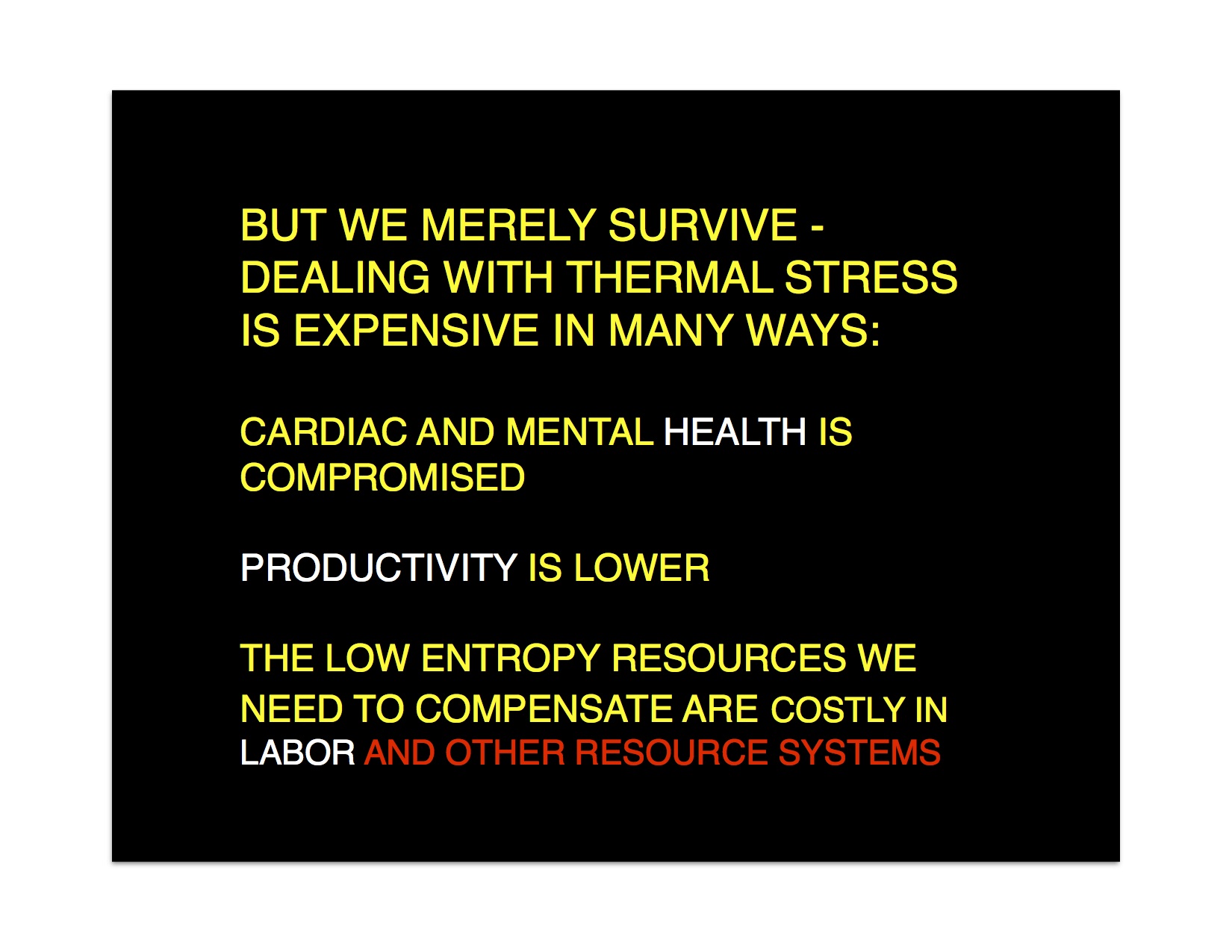
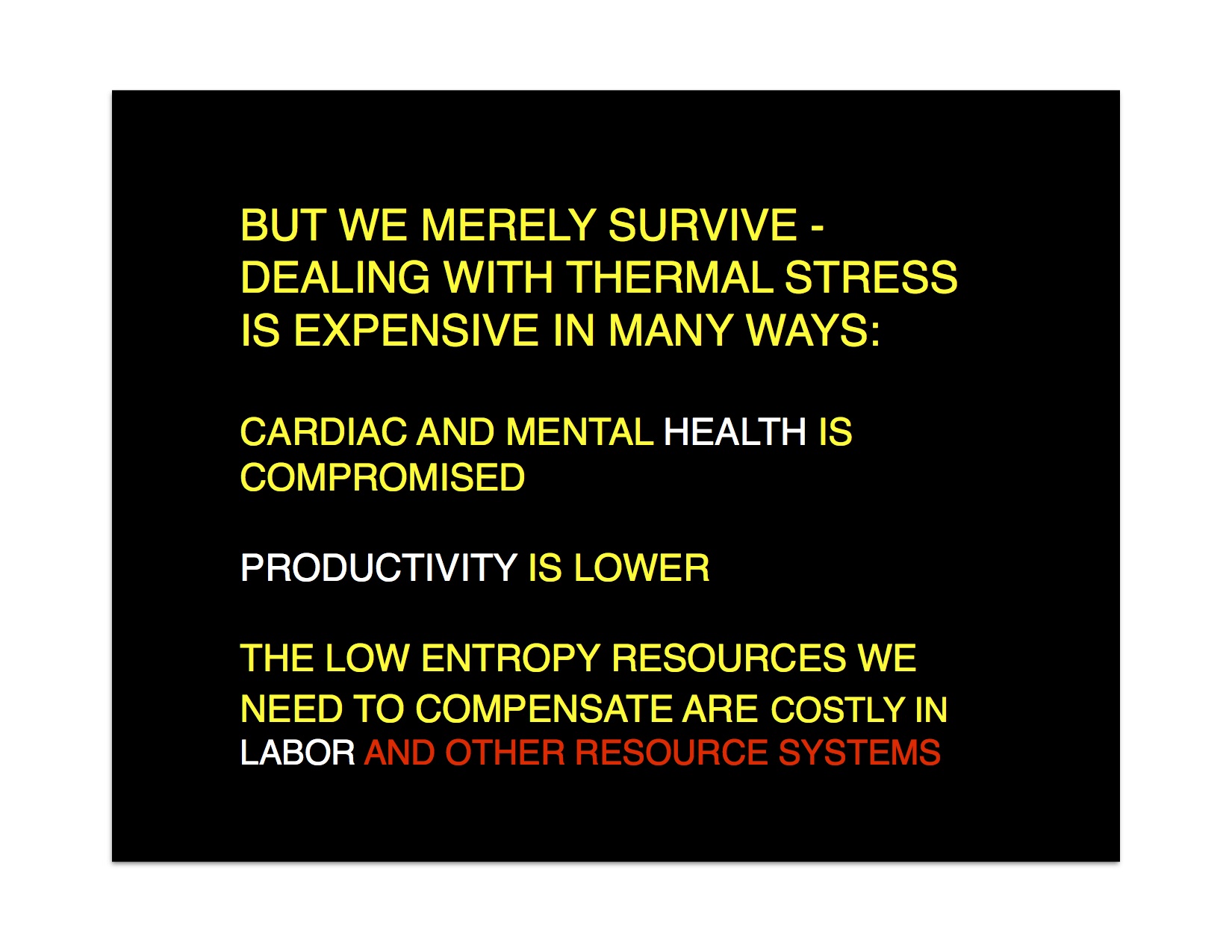
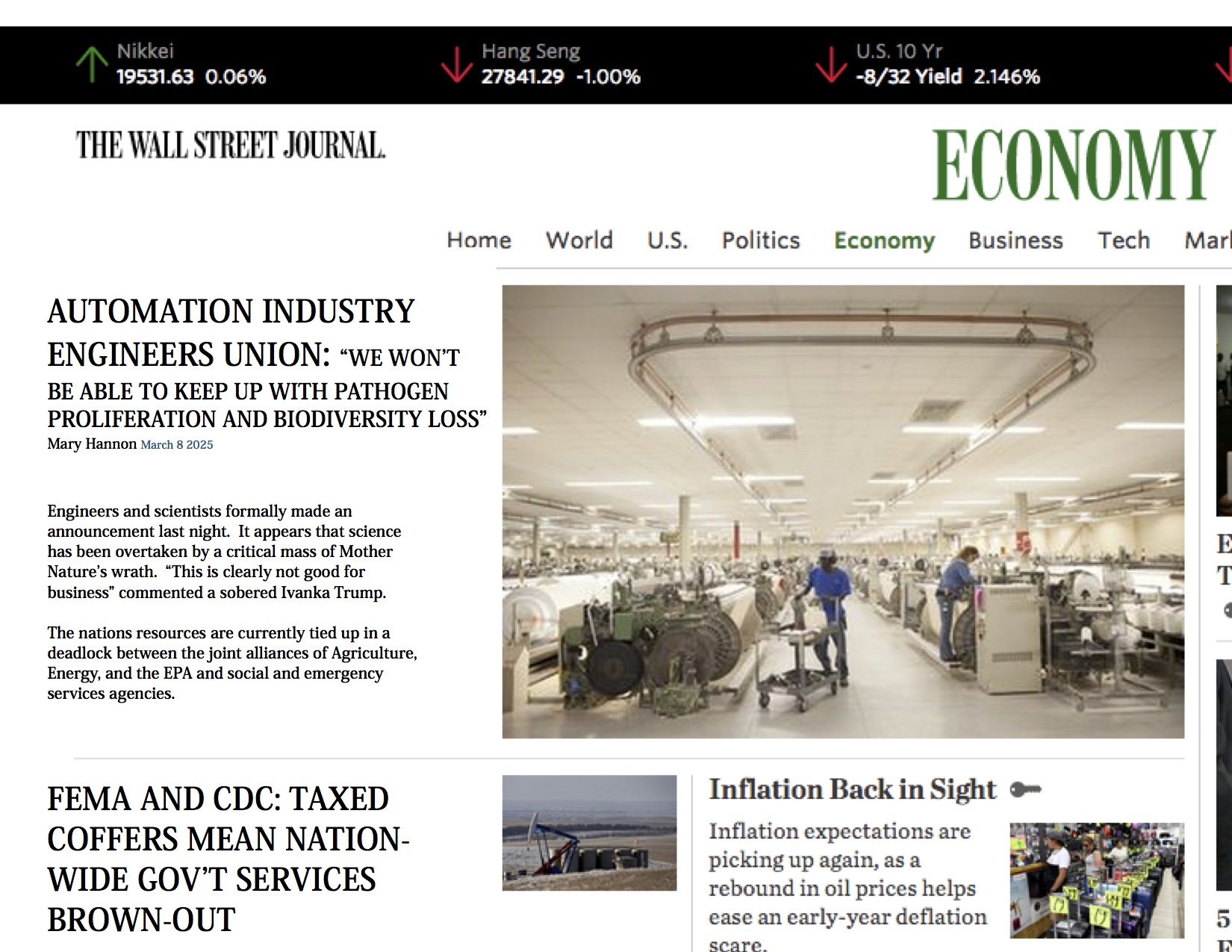
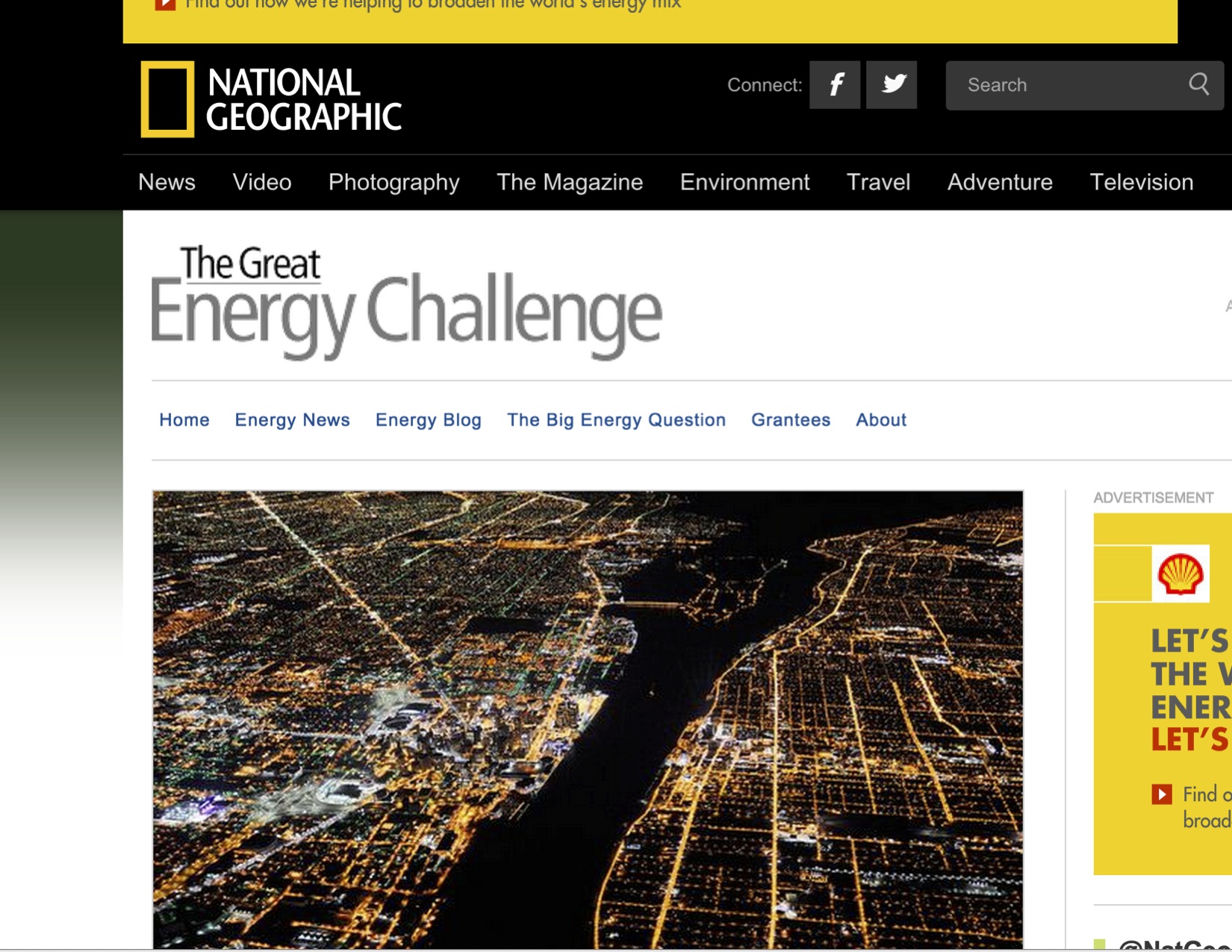
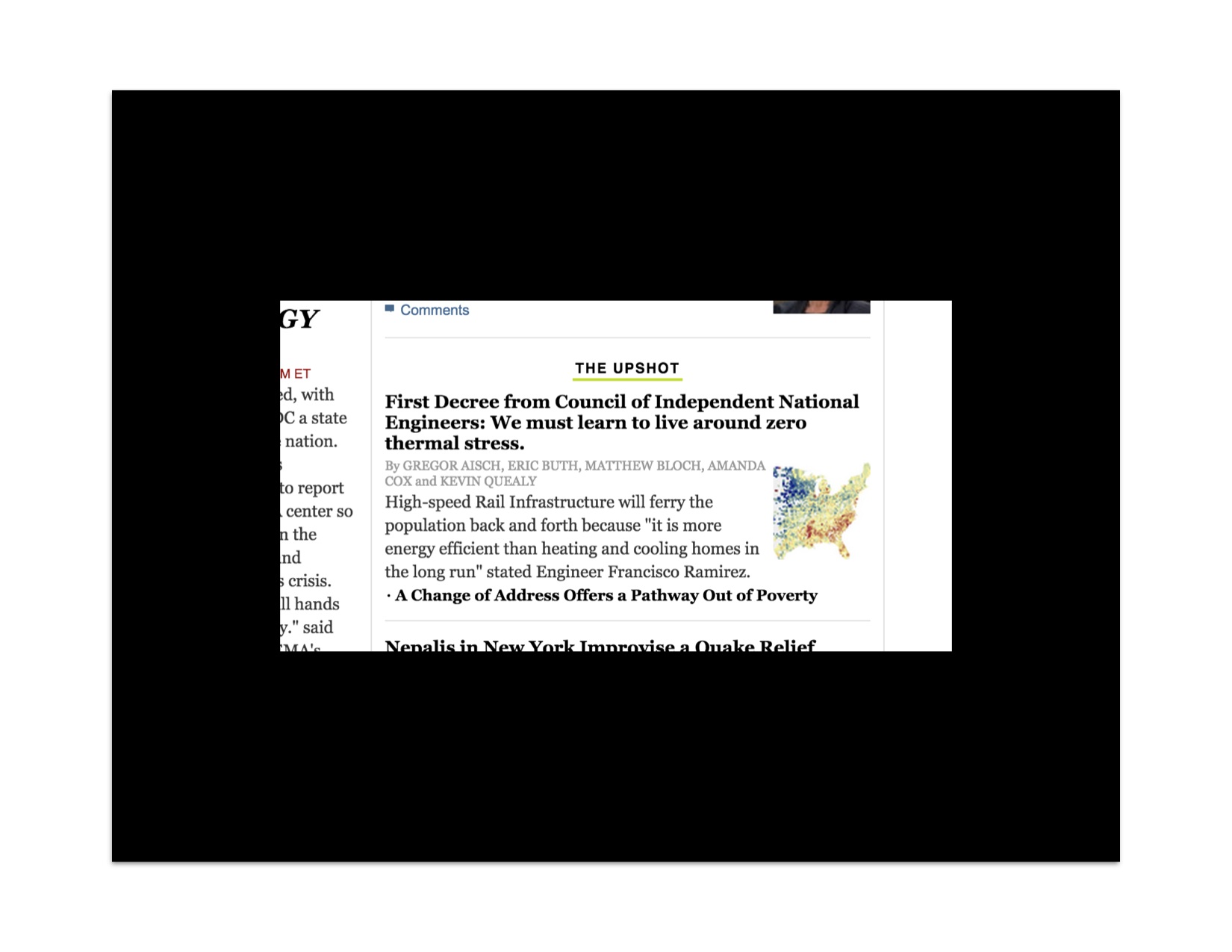

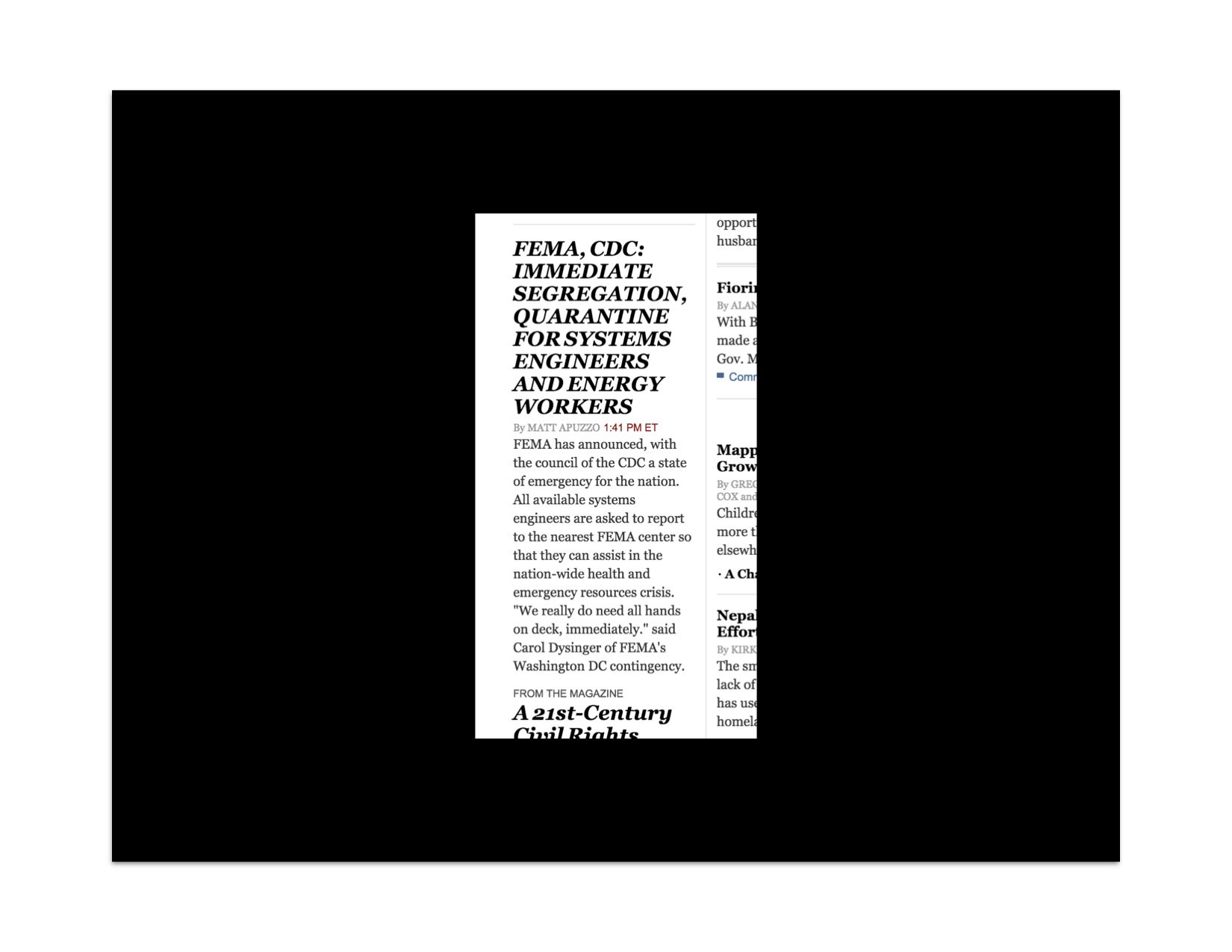
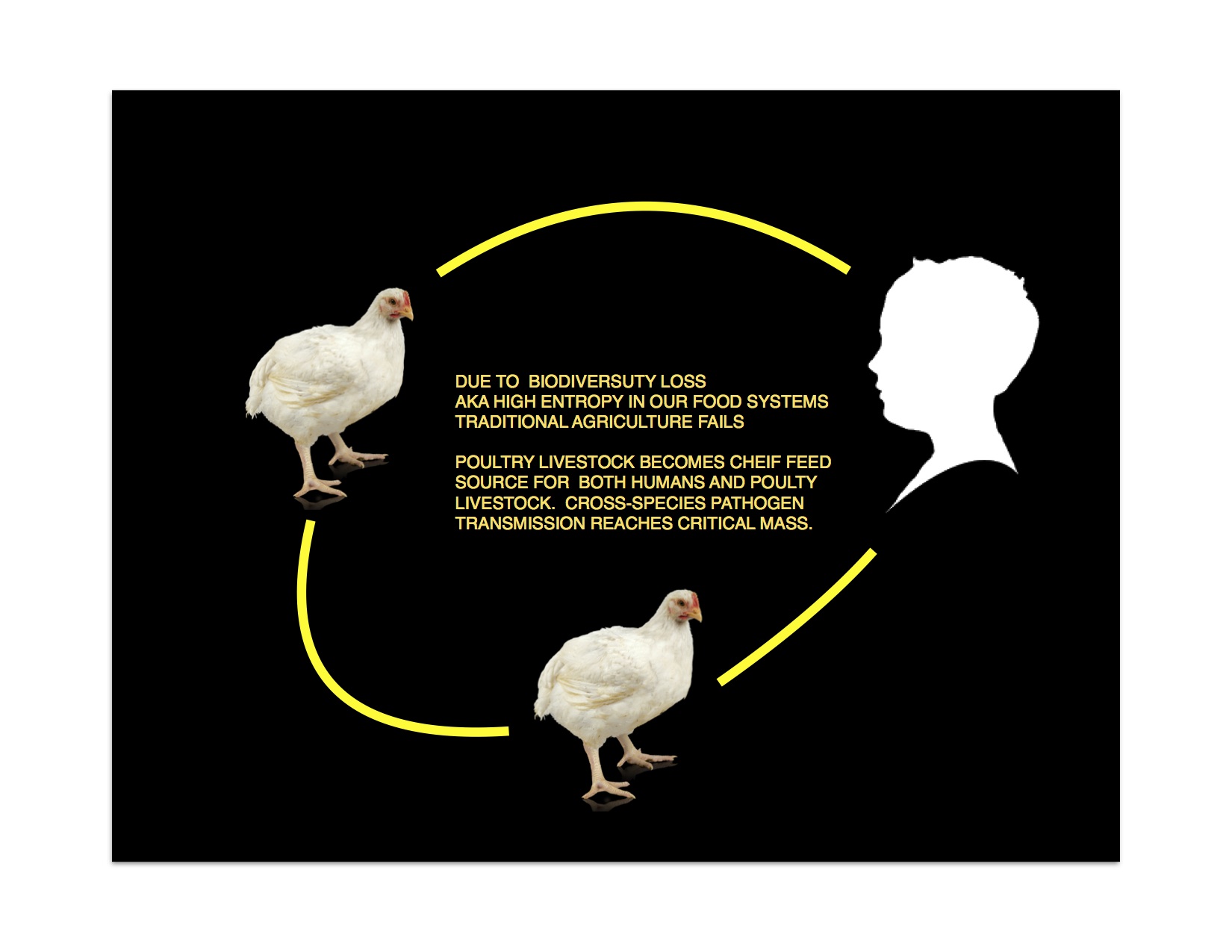
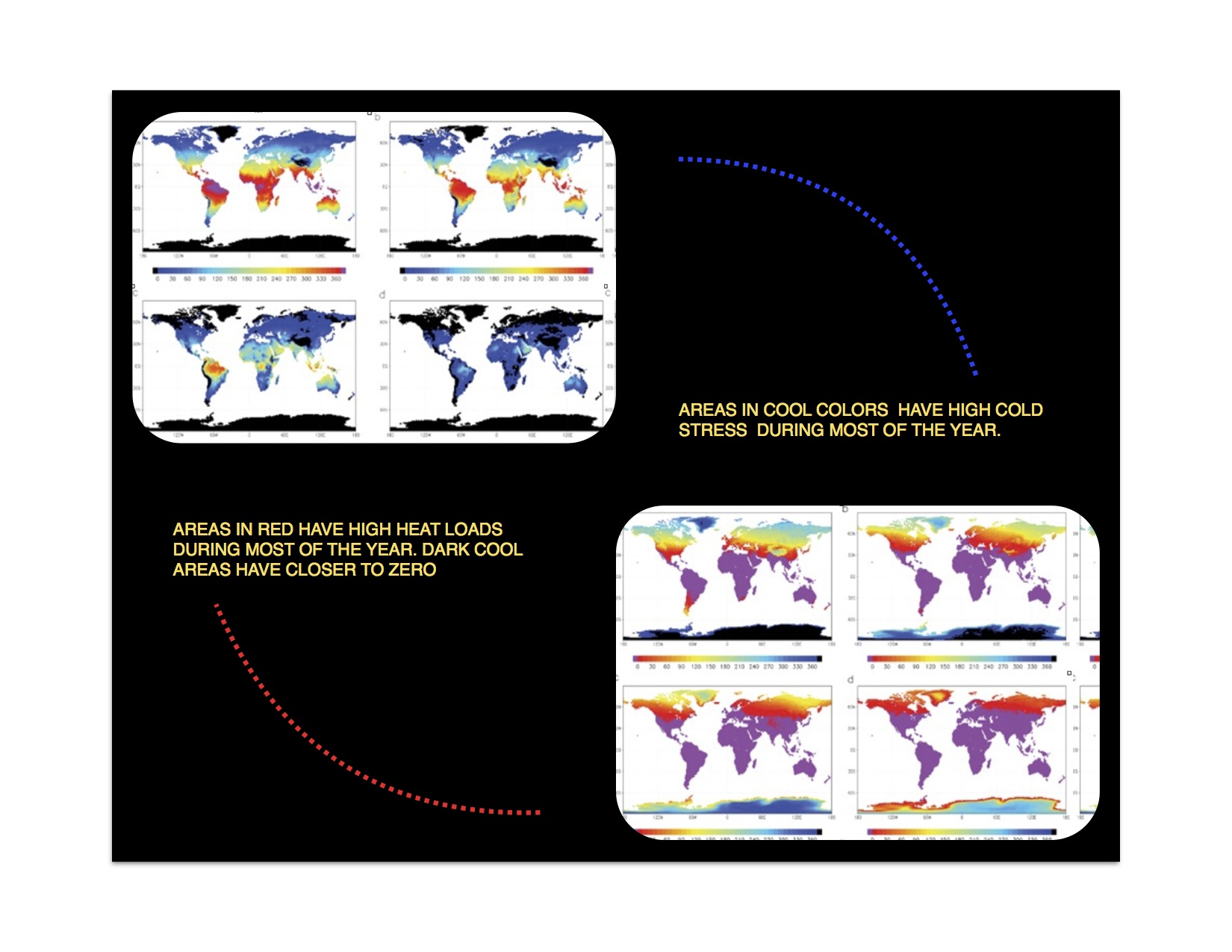
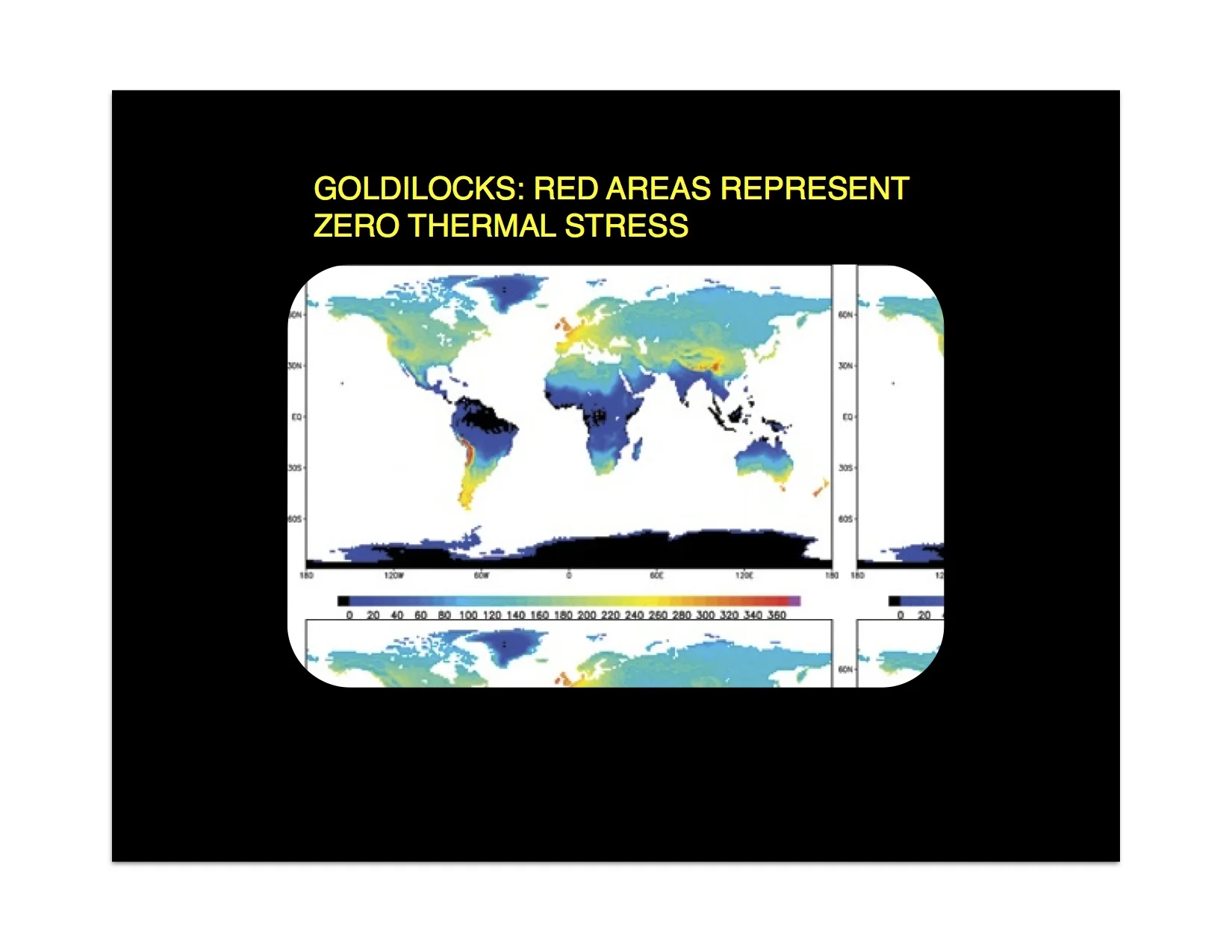
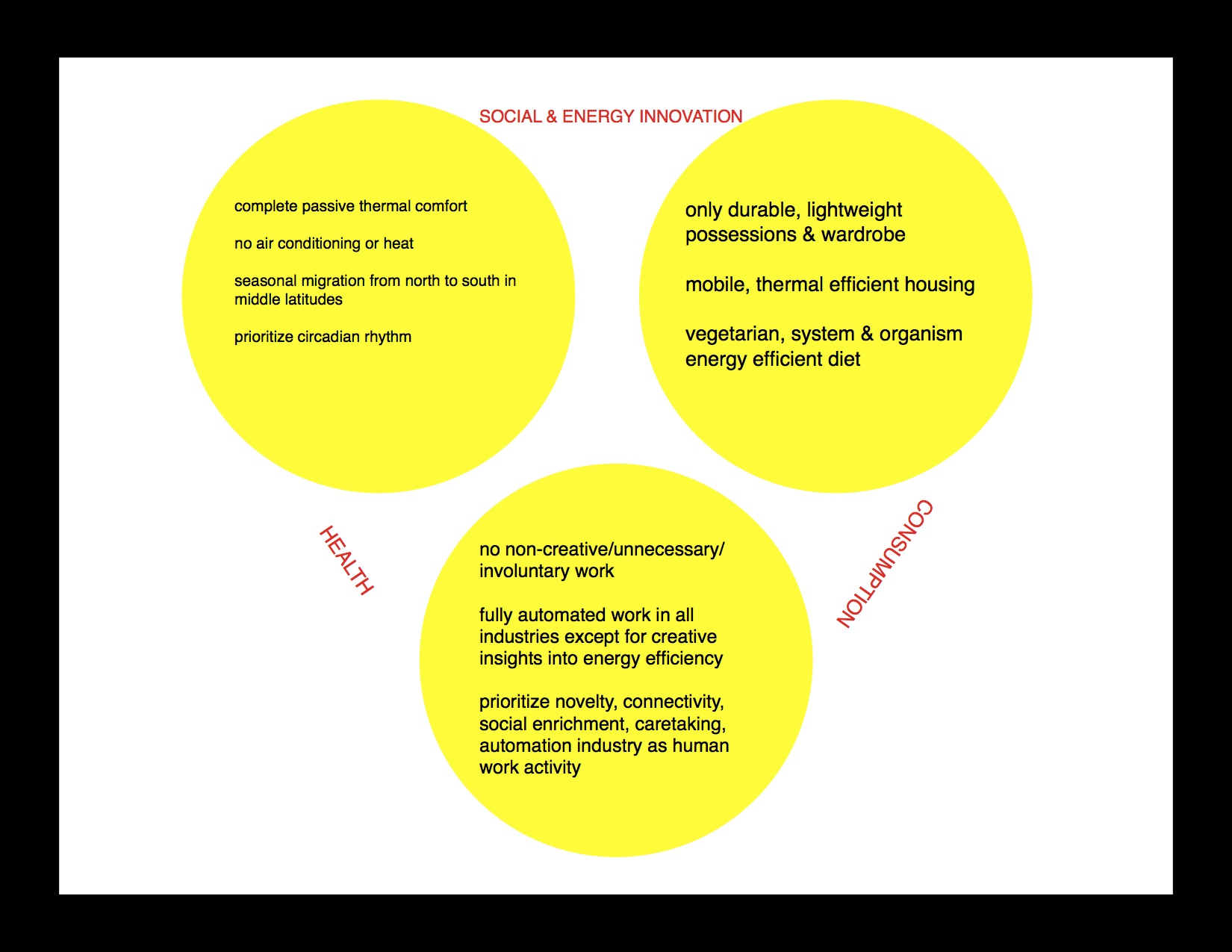
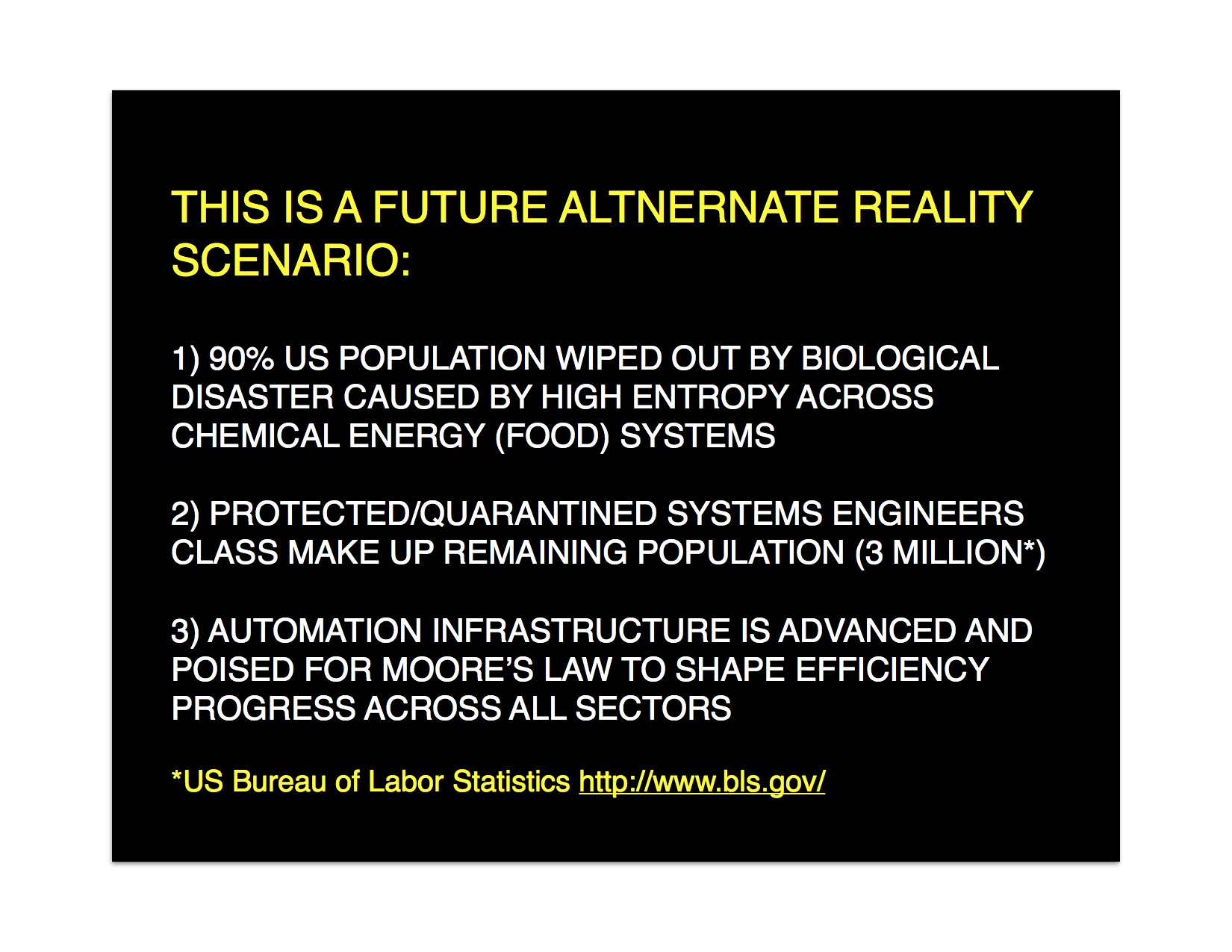
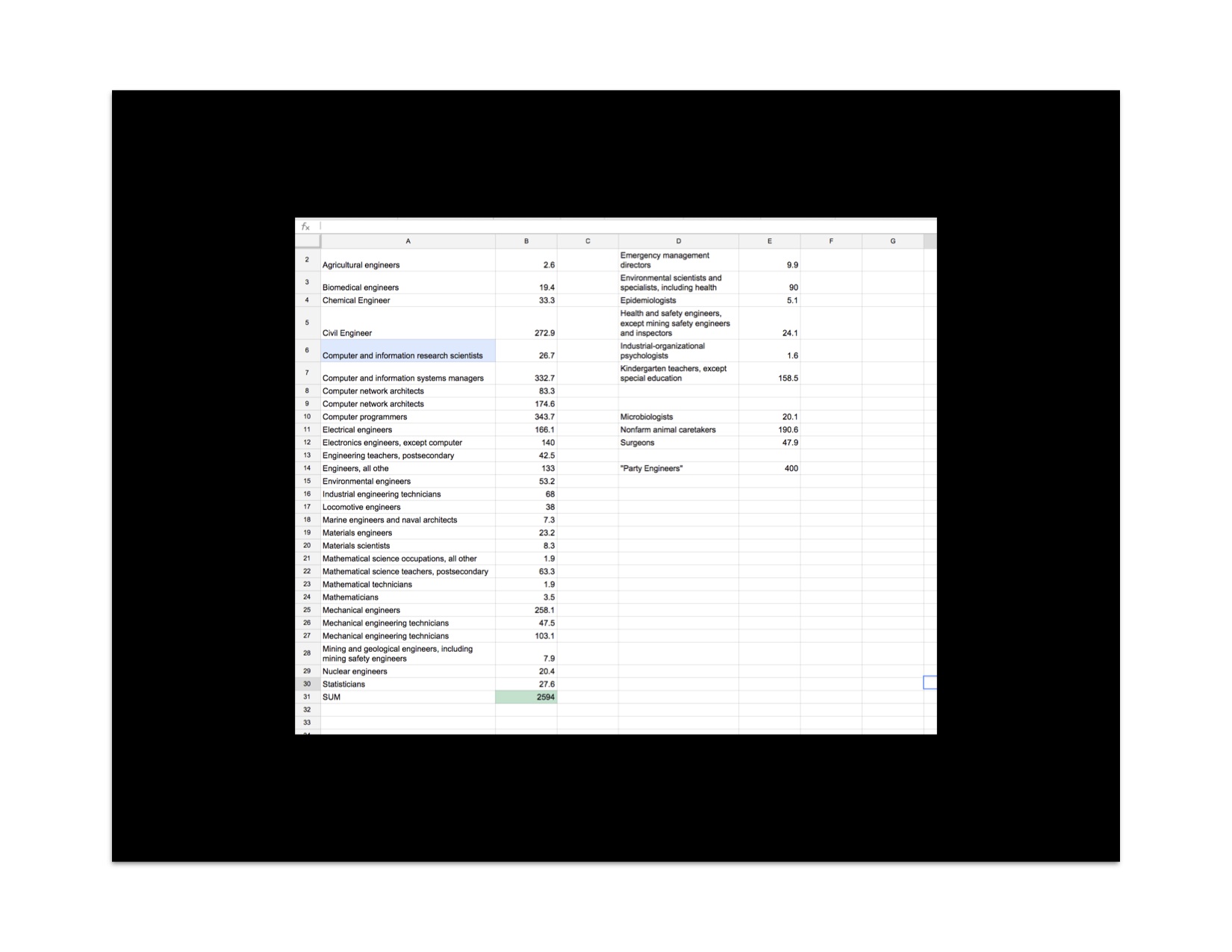
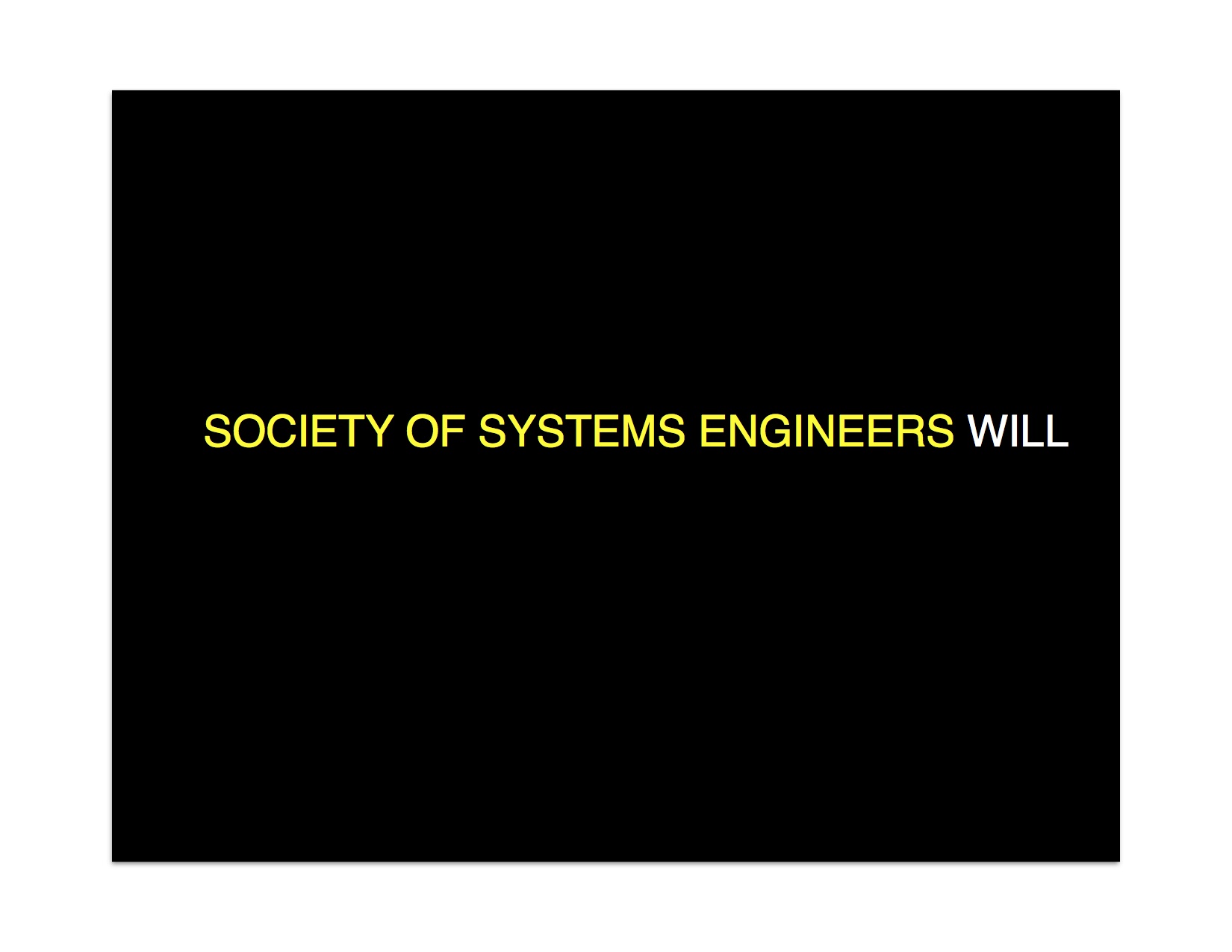
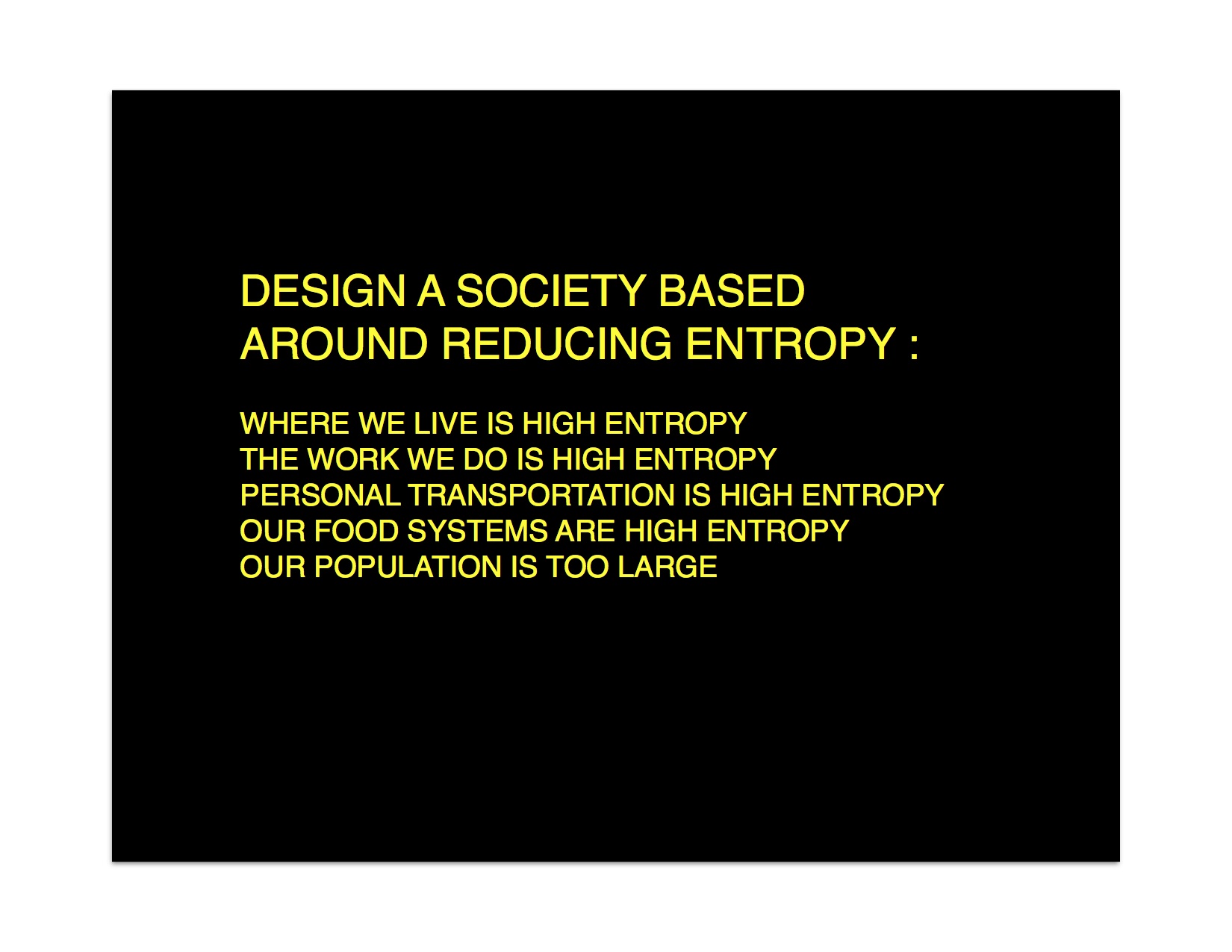
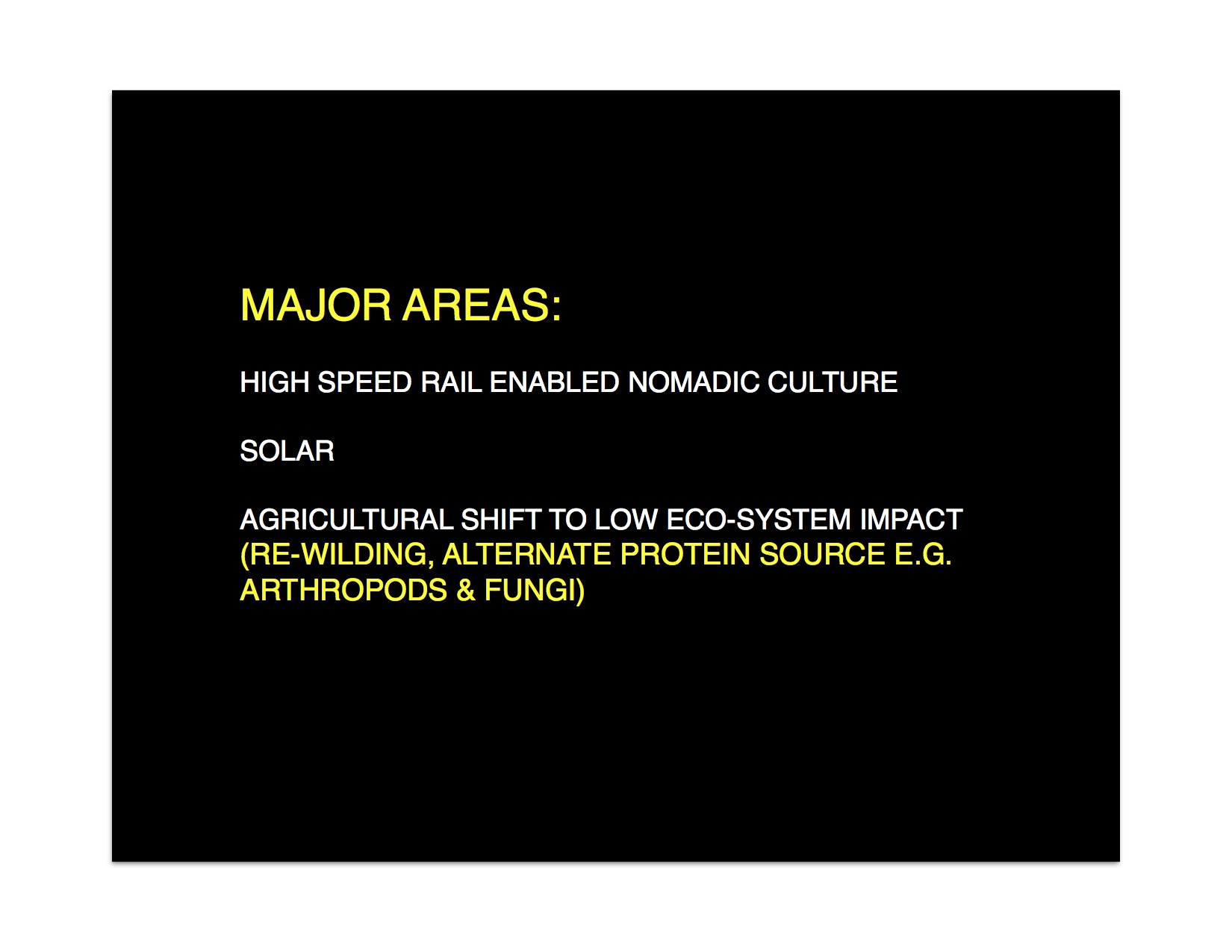
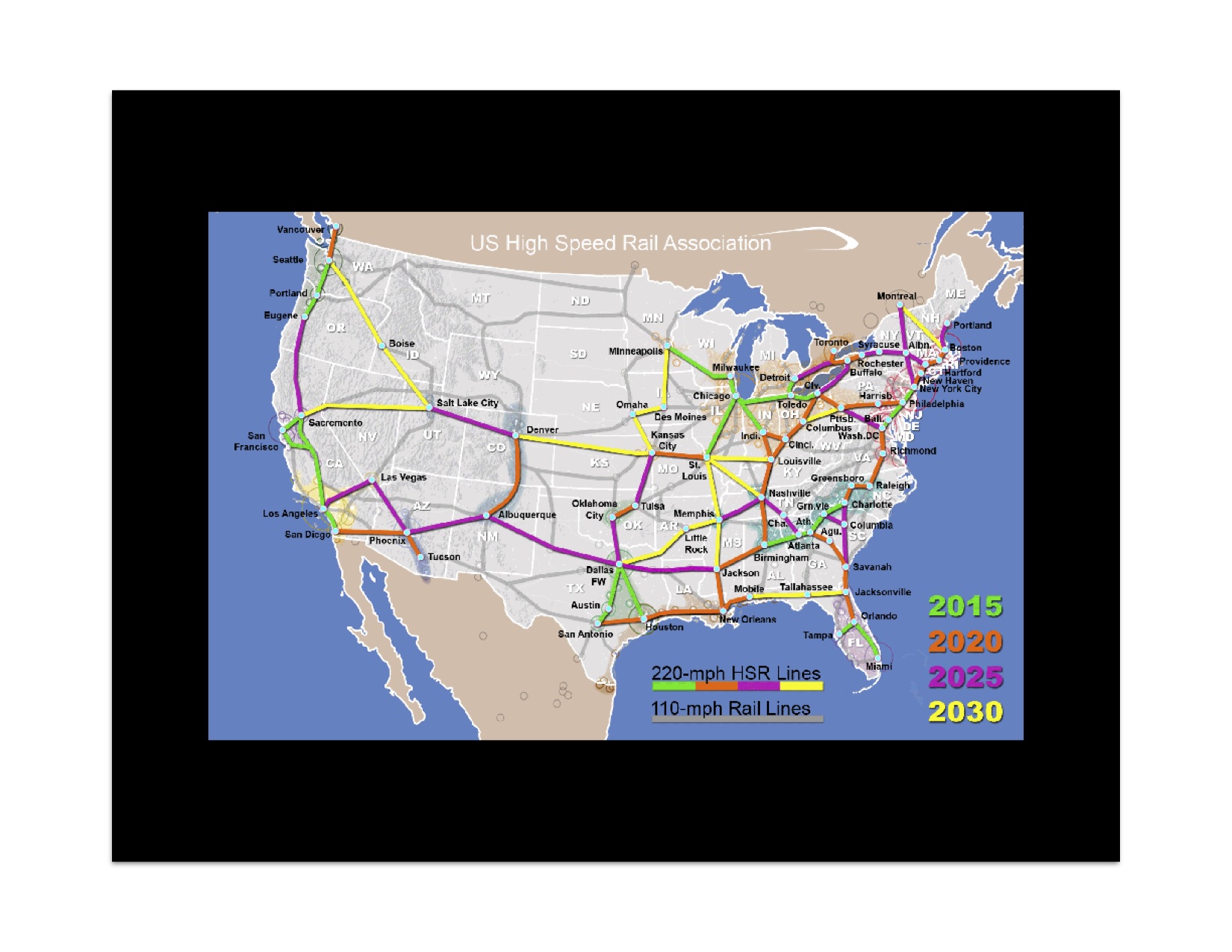
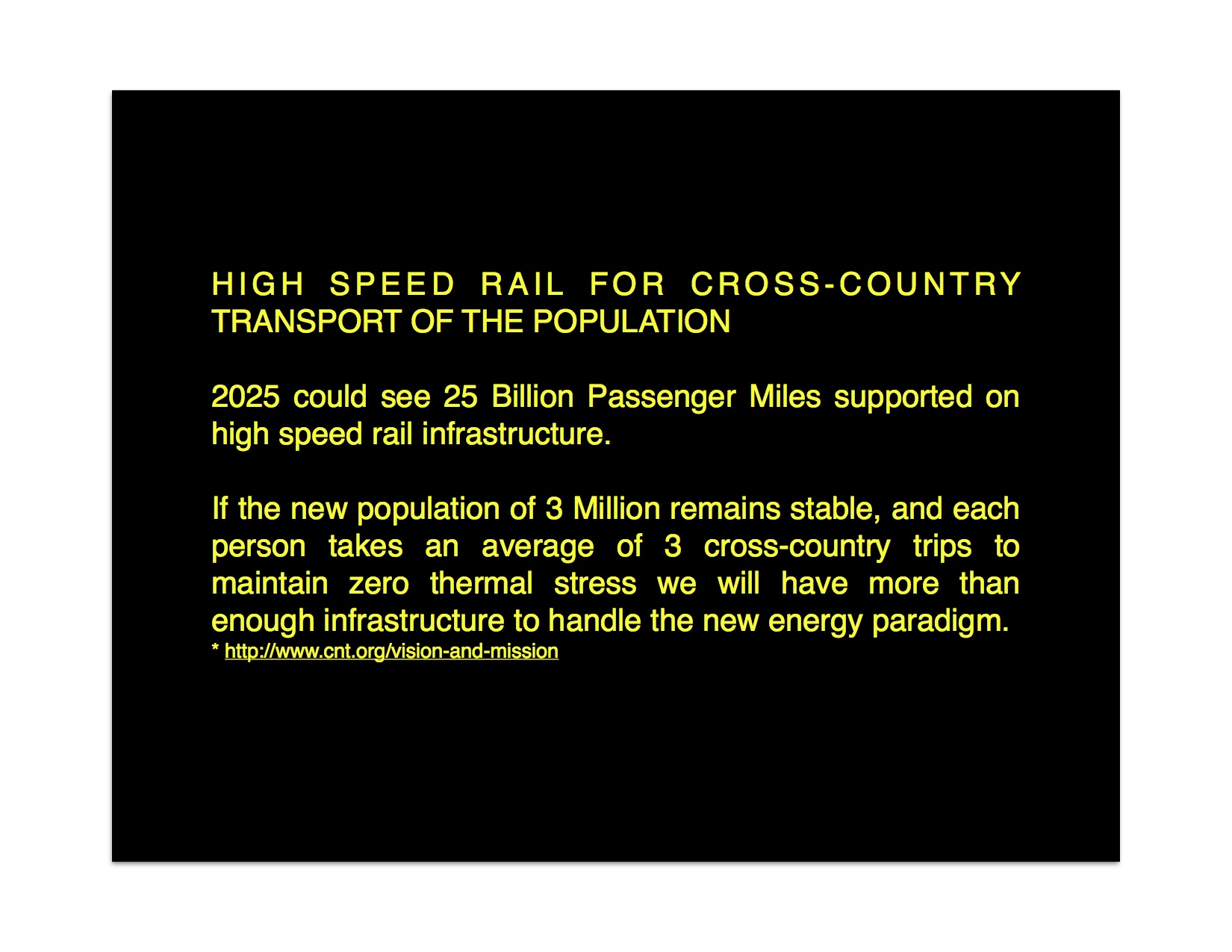
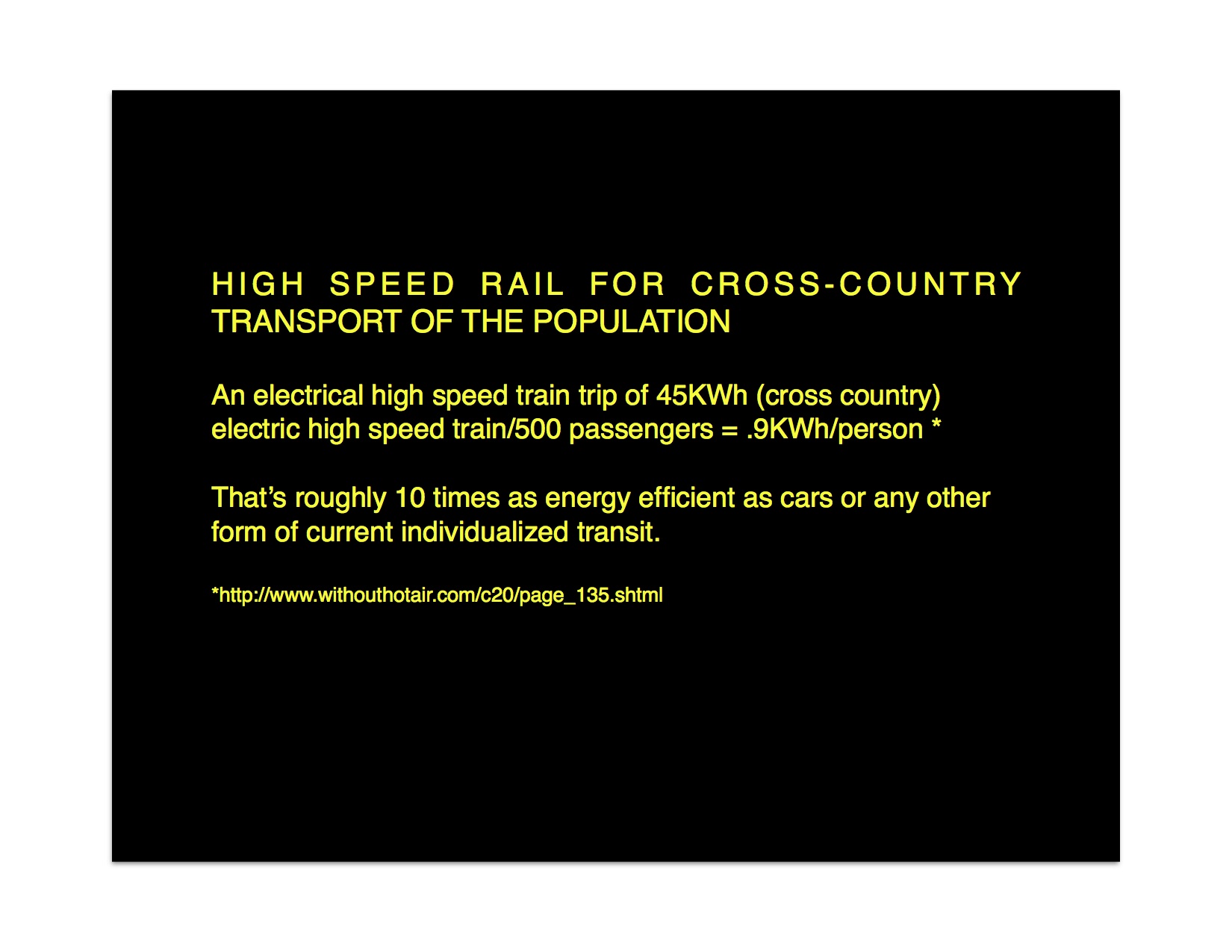
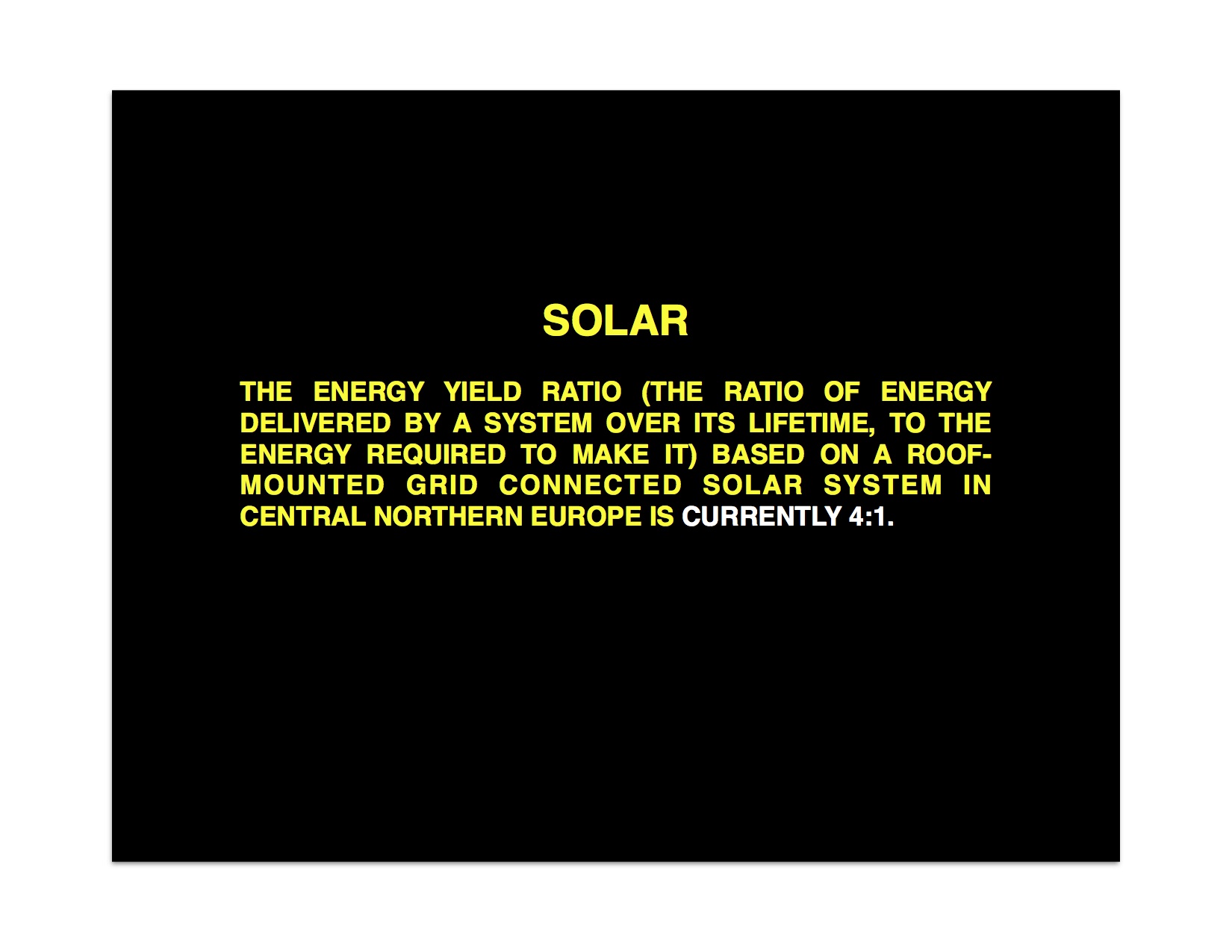
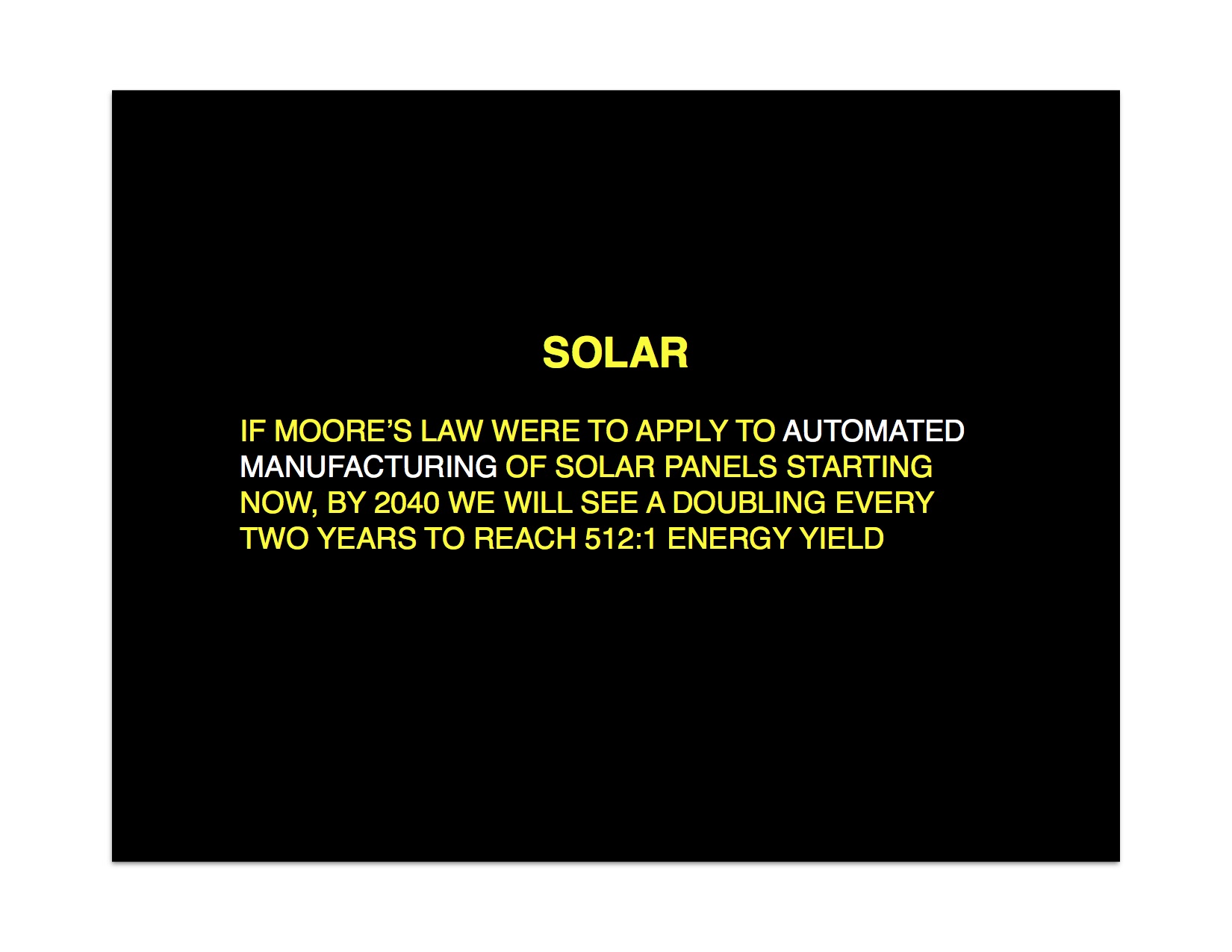
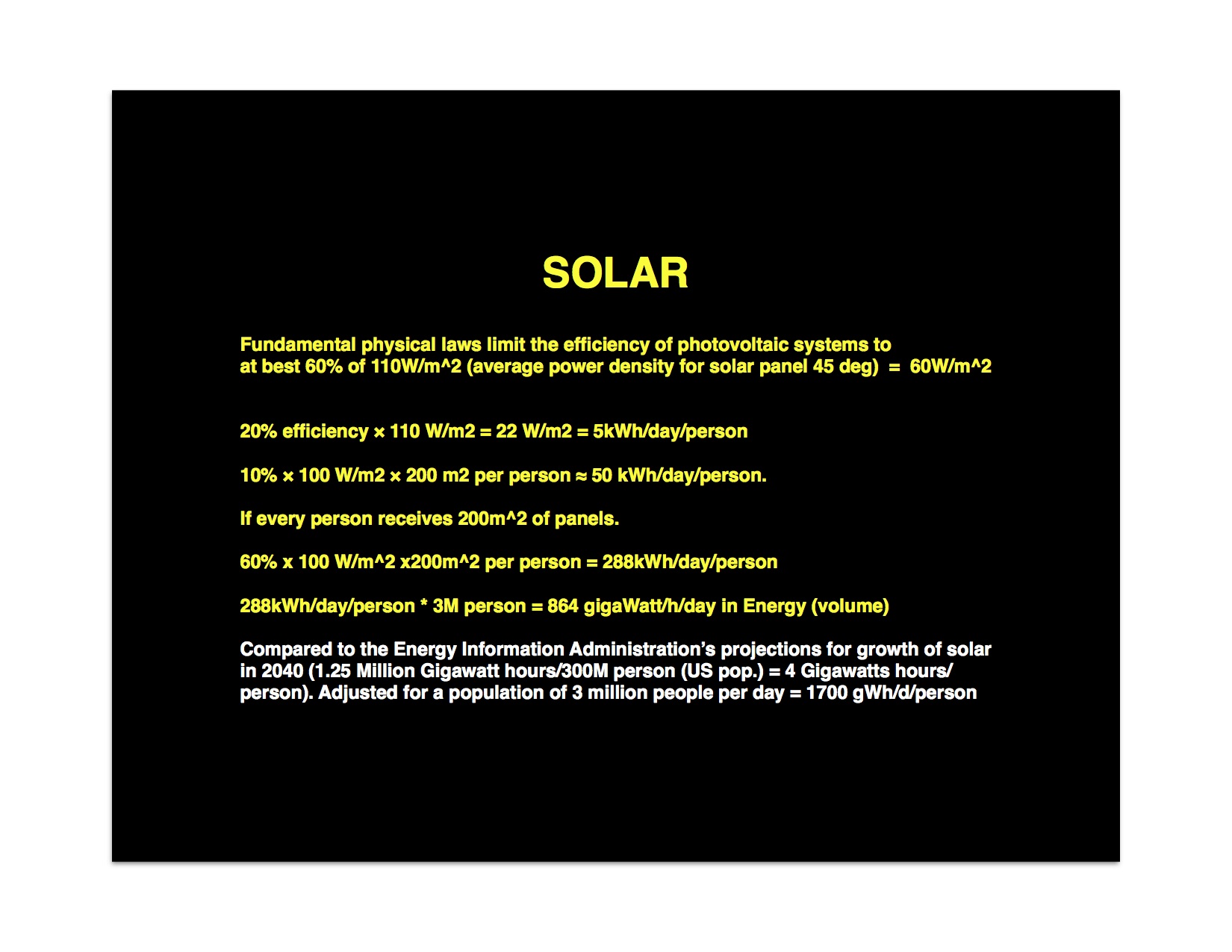
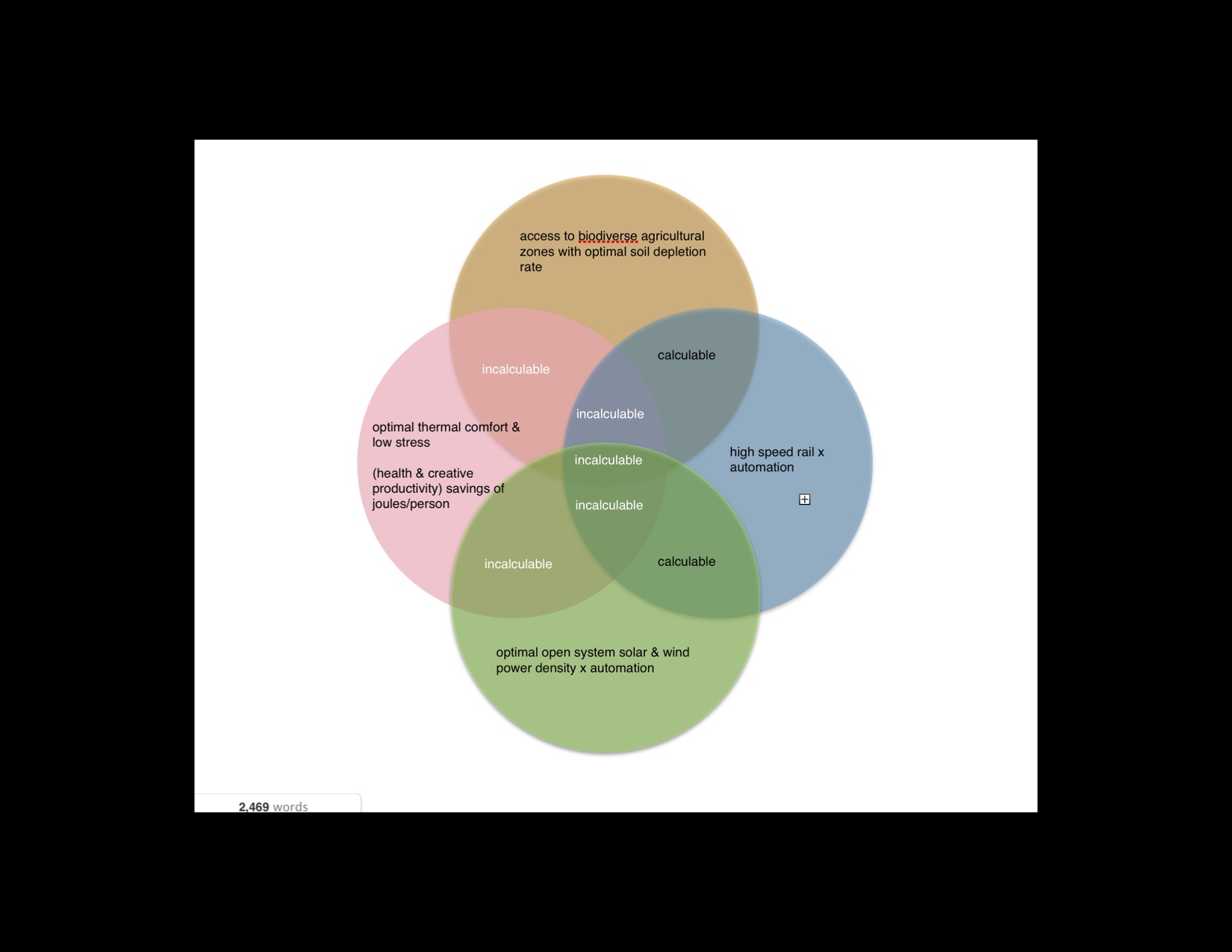
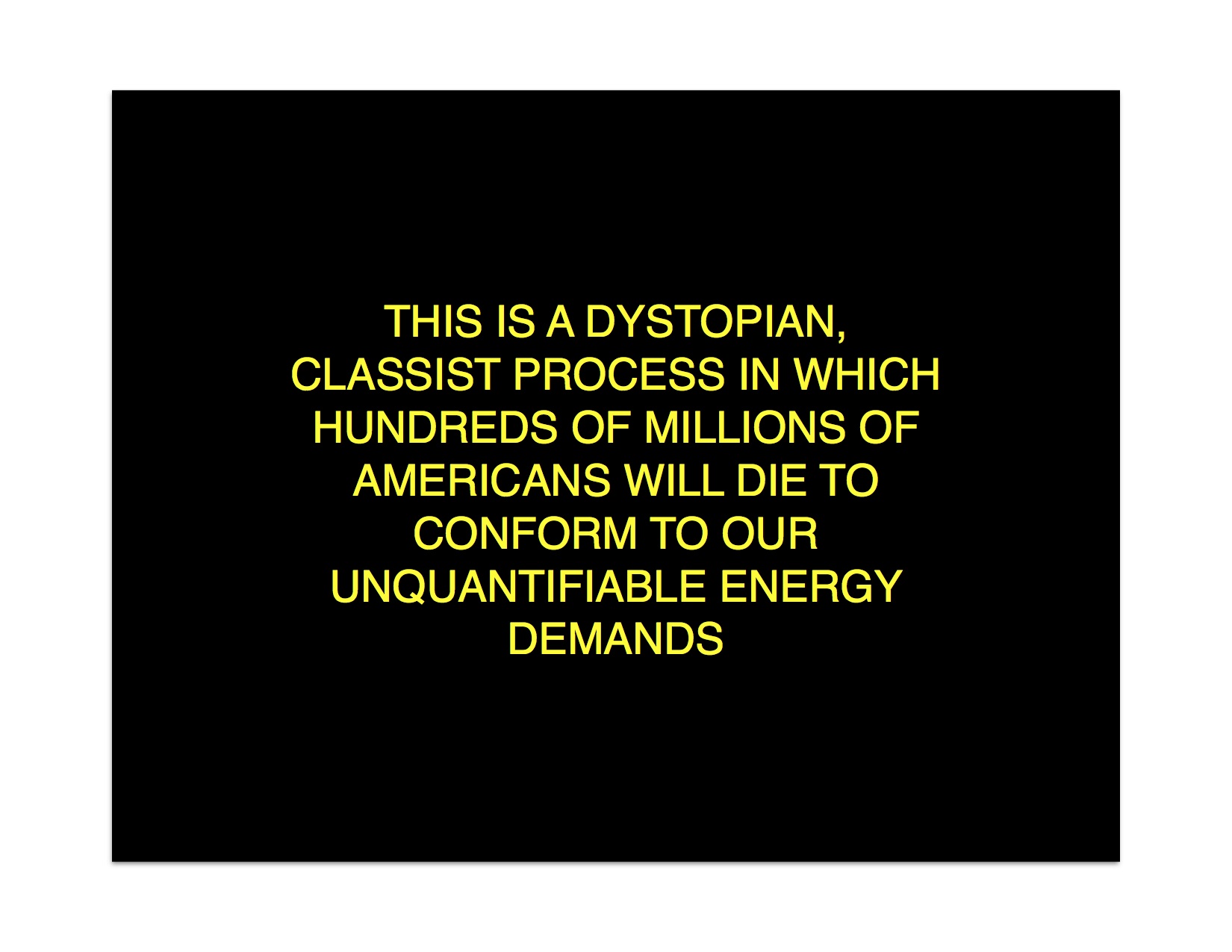
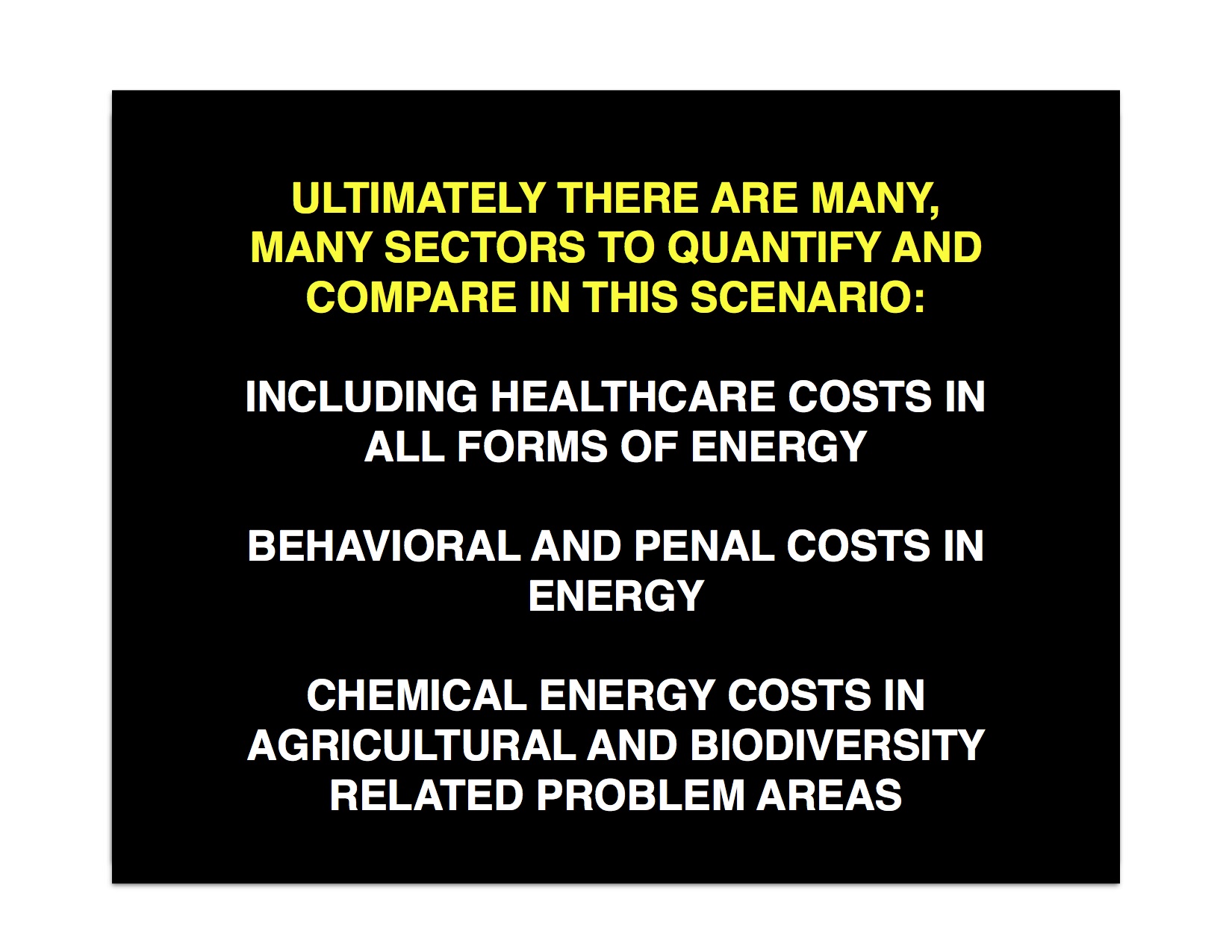
AN ANDROID'S ENERGY FUTURE
The final I proposed to Jeff Feddersen for his Energy class was a talk about an alternate reality of energy and human society. We discussed ideas from Smil's Energy: A Beginner's Guide, Mackay's Without Hot Air, the Green Revolution, Malthusian Economics, Zero Population Growth, the open solar energy systems people like the Hazda use, and Guns, Germs, and Steel as well as other ideas from class sessions. I set my alternative scenario in a near future (2040) post-automation, isolationist United States. I made it post-automation and isolationist in order to simplify my thought experiment to something vaguely imaginable. I chose the US because I live here and because it's been an industrial, economic, and cultural leader in the decades since the Earth's human population increased six-fold. I chose a biological/ecological crisis to reduce the US population to 3 Million systems engineers because I think it's a plausible projection of our culturally-motivated energy path and it was convenient.
One thing I got from my semester in Energy was that it's difficult for me to consider the science of the study of Energy while at the same time considering the human economic and emotional/societal/psychological illogic which specifies its use in destructive, entropic systems in the man-made reality we live in. Economics, psycho-social fabric, and the concept that everything is energy, and all living things, including humans are energy-phages. I want to consider all energy on the same level and so my ambitious idea was to take all major sectors of the US economy and somehow isolate and simplify them enough to extrapolate them into an alternate scenario where they could some how be harmonized or at least quantified in real energy terms - including the energy costs of poorly managed healthcare systems, food and ecological systems, social problems, and other inefficient maladaptations of our society which causes enormous amounts of entropy which aren't necessarily identified transparently in terms of the toe or kilo-Watt hours they cost us - wasted energy which could be put toward making these systems more efficient instead.
Humans can do math, but we can't make logical decisions or think far enough into the future to apply logic there. After a conversation in which someone suggested I pursue another approach because my idea had no attachment to reality. I decided I would use that as a strength to provoke thought about why this type of idea is so difficult to attach to reality. I realized that I wanted to use this as a continuation of the world-building I did for my Future of New Media Post-Automation scenario for 2025. This was in turn a world-building research project I wanted to incorporate into my Anthropocene final project, a screenplay about an android living in an automated human society. Coincidentally my topic was the Green Revolution in her class, the fossil-fuel driven food energy event which turned enough solar and chemical energy into the largest accumulation of anthropomass to date.
My research process was grazing - once I settled on my scenario and parameters (the biggest step was deciding to go to the US Bureau of Labor Statistics and tally the number of systems engineers I would "save" from the mass extinction due to cross-species transmission of deadly diseases and a collapsed food system driven by a complete flattening of biodiversity), I realized there were so many areas to quantify and that I didn't even know where to begin to getting the relevant data (e.g. where total energy costs are found in a scenario like Australia's rabbit problem, or how much toe is wasted caring for patients whose cardiovascular health is compromised due to high thermal stress while doing hard physical labor.)
It's a dystopian future which involves the worst kind of capitalist classism and it involves a shocking crisis. I intended it that way as a plausible extrapolation of current trends as a background scenario for a near-future science fiction. I mean to make a point about how economics of industry and human psychology makes it difficult for systems engineers and science leaders to get the resources and political cooperation they need to take a transdisciplinary approach to fixing our energy problem.









